60 ancient wonders you need to add to your bucket list
Incredible landmarks you won't want to miss
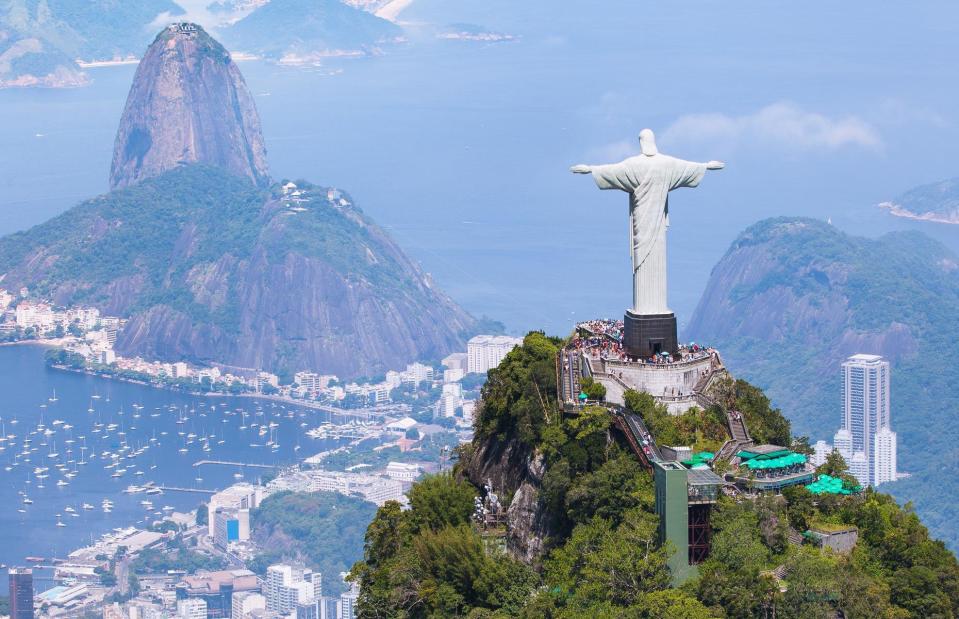
dmitry_islentev/Shutterstock
Only one of the original Seven Wonders of the Ancient World remains, but there are many more awe-inspiring places that astound and delight us. From captivating ancient cities, medieval cathedrals and modern architectural gems to biodiverse volcanic craters, thundering waterfalls and otherworldly ice forms, we've picked 60 of the world’s must-see wonders.
Yellowstone National Park, Wyoming, USA
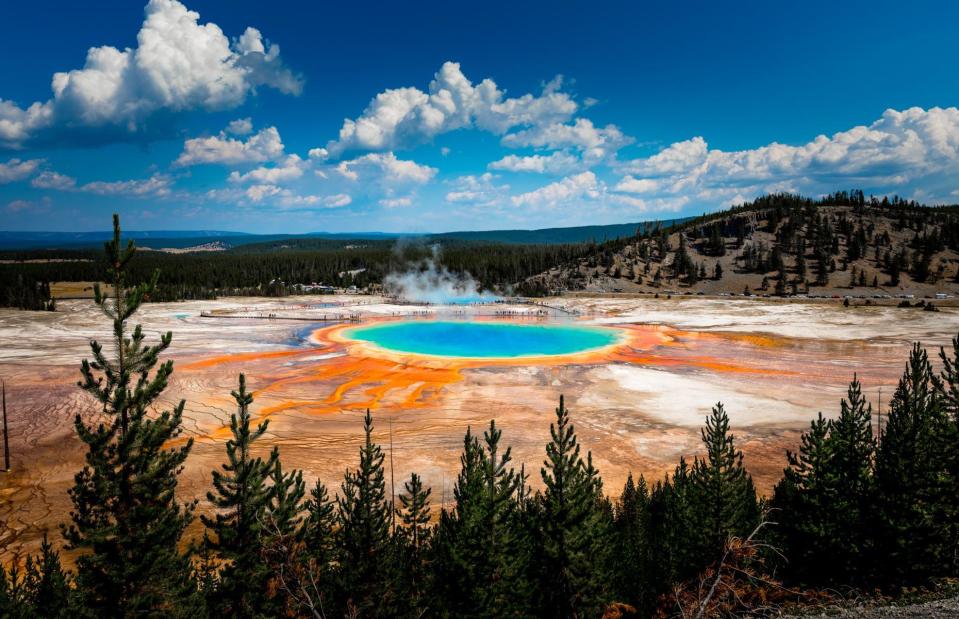
Anders Riishede/Shutterstock
Yellowstone National Park in northwestern Wyoming is famous for its incredible geothermal features including the Grand Prismatic Spring (pictured), Old Faithful Geyser and Mammoth Hot Springs. Colourful because of the heat-loving bacteria, the Grand Prismatic Spring is one of many unique wonders – altogether, there are more than 10,000 geothermal sites in the park.
Yellowstone National Park, Wyoming, USA
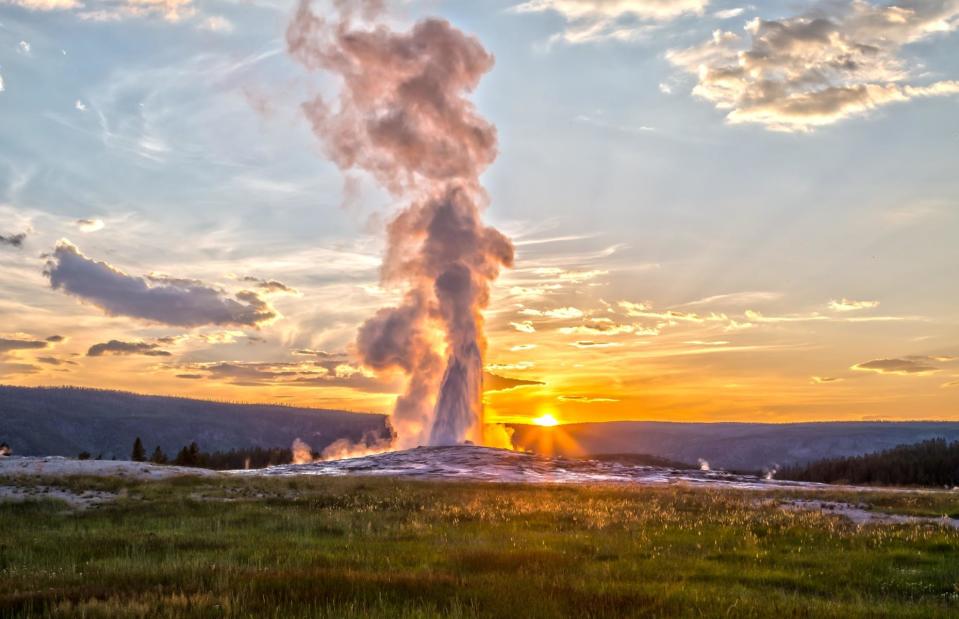
Susanne Pommer/Shutterstock
Yellowstone was the first national park to be established in the USA (on 1 March 1872) and it takes at least a few days to explore some of its 3,500 square miles (9,065sq km). You'll be sharing the park with bears, wolves, bison and white-tailed deer and the Lamar Valley (accessible from Highway 212) is a great place to spot them.
Cappadocia, Turkey
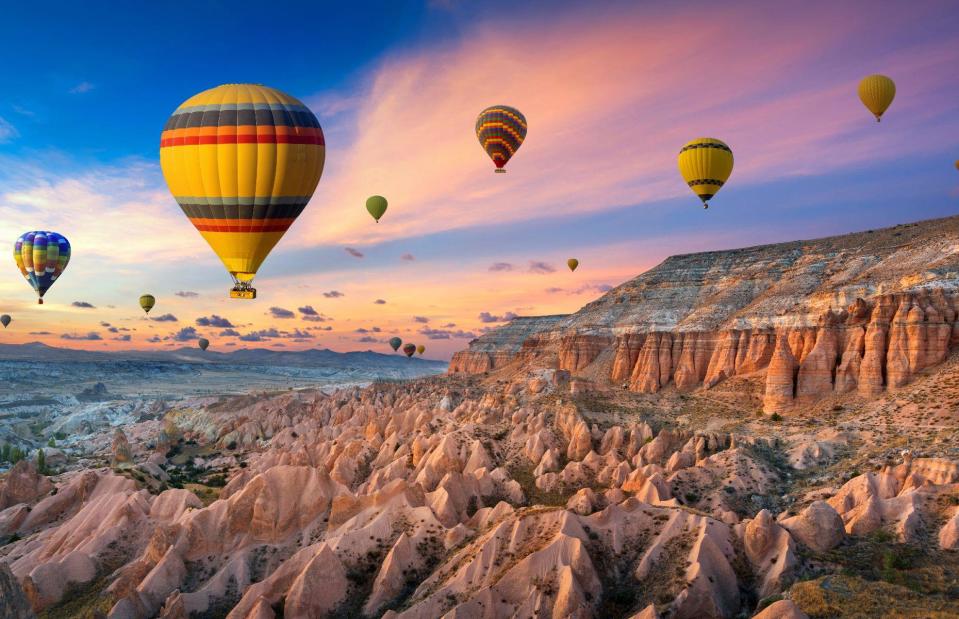
Guitar photographer/Shutterstock
In eastern Anatolia, this vast semi-arid high plateau of soft volcanic rock has been sculpted by the wind into towers, cones and caves. Today, the rippling valley is at its most stunning at sunrise on a summer's day when hundreds of hot air balloons float dreamily above the moon-like landscape. Do plenty of research to find a recommended local company and book direct with them.
Cappadocia, Turkey

Nataliia Liubinetska/Shutterstock
Göreme National Park and the Rock Sites of Cappadocia form an important part of this landscape and Love Valley is a completely unique highlight. Here, erosion has created unique freestanding hoodoos. Once you've seen them from above in a hot air balloon, it's possible to hike here from the town of Göreme to explore up close.
Ha Long Bay, Vietnam
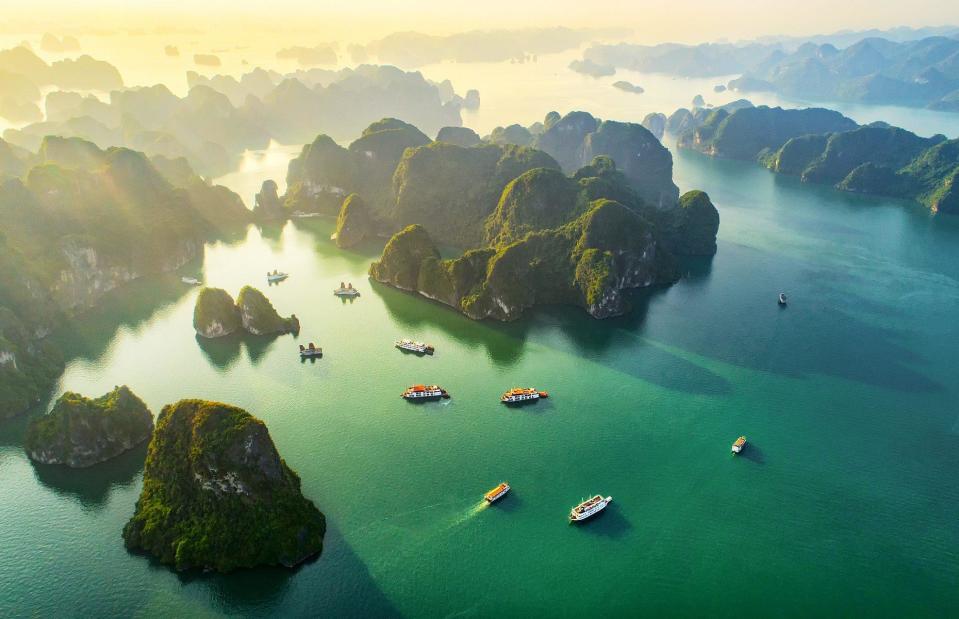
Nguyen Quang Ngoc Tonkin/Shutterstock
A wondrous, mythical landscape in the Quang Ninh Province in the northeast of Vietnam, Ha Long Bay is a UNESCO World Heritage Site. The name 'Ha Long' means descending dragon and the story goes that dragons came here to protect the people from marauding armies; they spat jade and jewels, which became the thousands of islands and islets that dot the beautiful green blue bay today.
Ha Long Bay, Vietnam

Kris Wiktor/Shutterstock
In reality, the islands and islets are soft limestone, the remnants of one-time mountains. Most are uninhabited, but Ha Long's main island, Cat Ba, is home to 13,000 people with another 4,000 people living in floating fishing communities nearby. Many locals work in tourism and guides will take you trekking and caving in Cat Ba National Park (pictured).
Colosseum, Rome, Italy

prochasson frederic/Shutterstock
Completed in AD 81, the Colosseum in Rome is the largest amphitheatre in Roman history. It's estimated that it would have held between 50,000 and 80,000 spectators and entertainment included gladiatorial contests, executions, re-enactments of famous battles and performances of Classical mythology.
Colosseum, Rome, Italy
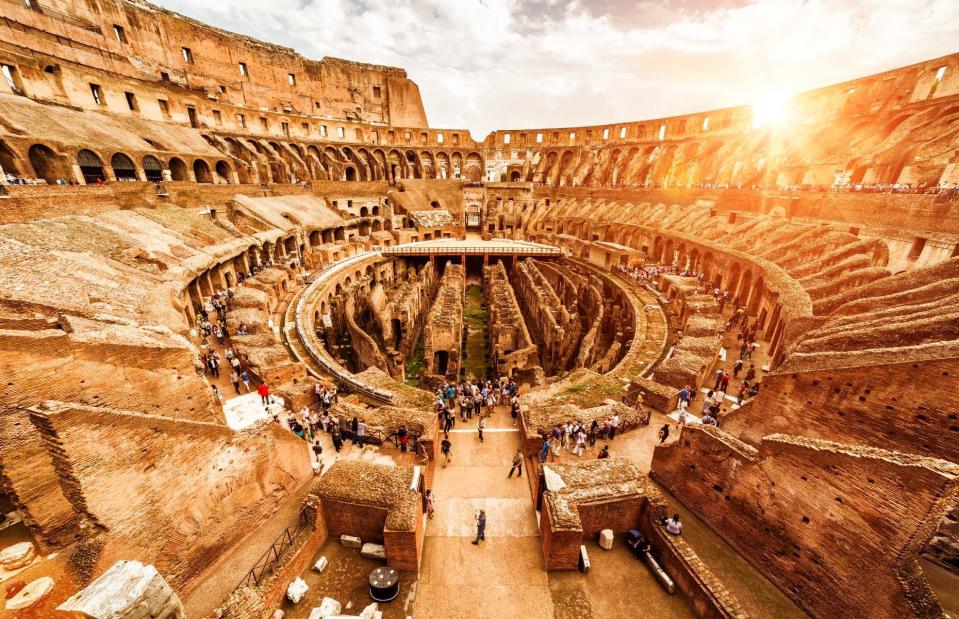
Viacheslav Lopatin/Shutterstock
One of the New Seven Wonders of the World, the Colosseum is a freestanding structure of stone, concrete and tuff (a locally quarried volcanic rock), built using a complex system of barrel vaults and groin vaults. It had five tiers, each for a different section of society, and an underground area called a hypogeum made up of underground tunnels. From here, gladiators and animals would be raised up to the arena floor.
Mount Kilimanjaro, Tanzania
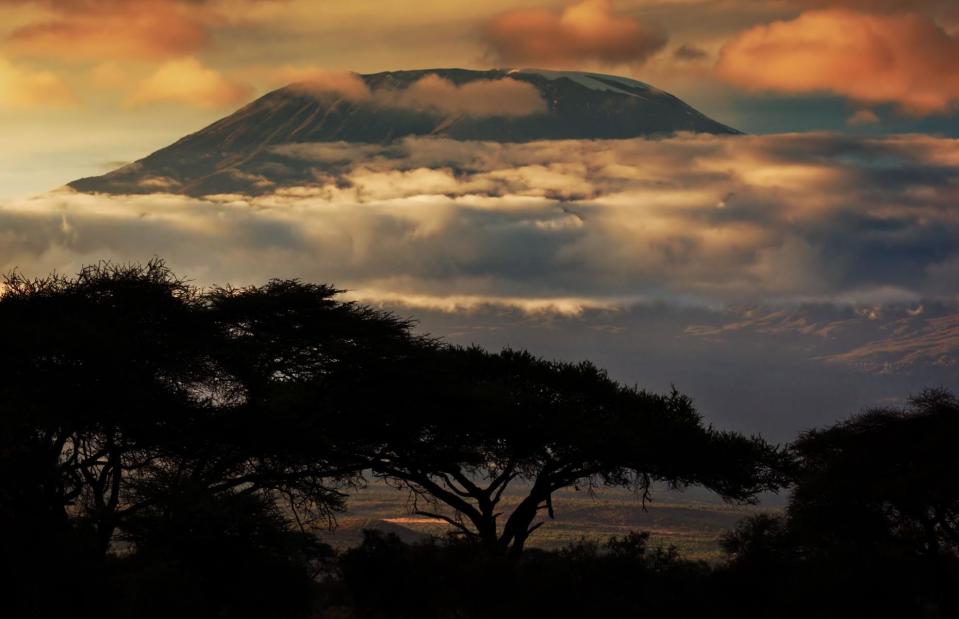
incamerastock/Alamy Stock Photo
Kilimanjaro, Africa's tallest peak, dominates the savannah landscape in northeast Tanzania – on a clear day it can be seen from as far as Nairobi in neighbouring Kenya. One of the Seven Summits (the tallest on each continent), Kilimanjaro requires no technical skill to make the ascent to its icy peak, but, despite this, roughly half of the people who attempt the climb fail.
Liking this? Click on the Follow button above for more great stories from loveEXPLORING
Mount Kilimanjaro, Tanzania
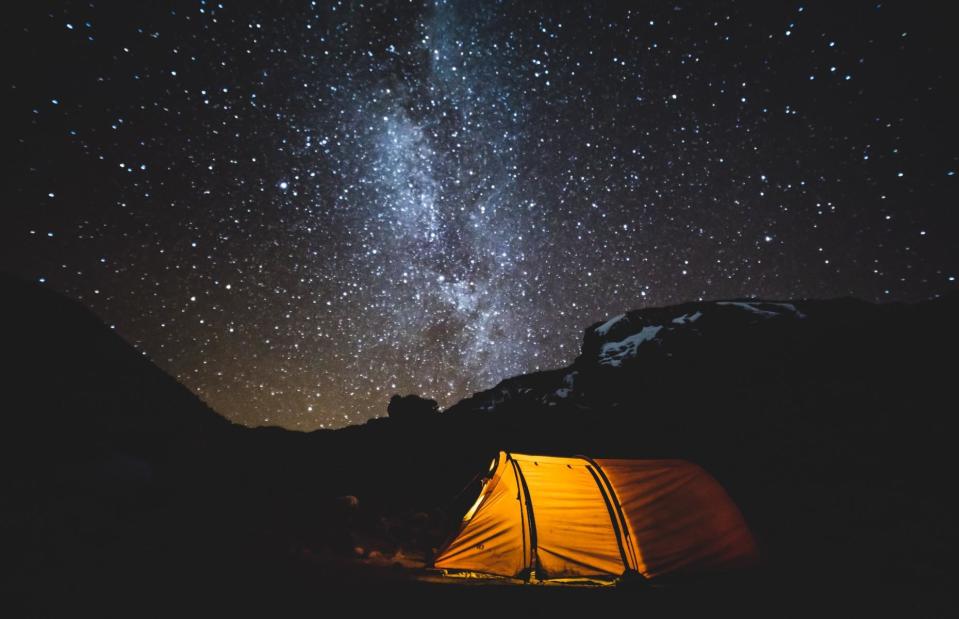
feiflyfly/Shutterstock
Created from three volcanic cones, Kilimanjaro is a dormant volcano thought to have last erupted 360,000 years ago. There are seven main routes to climb the mountain and 20 camps depending on your route – it's a five- to nine-day round trip on foot and the longer you take, the better you'll be able to deal with the altitude. Camping out under the stars is a sensational experience – with no light pollution the night sky is dazzling.
Northern Lights, Norway
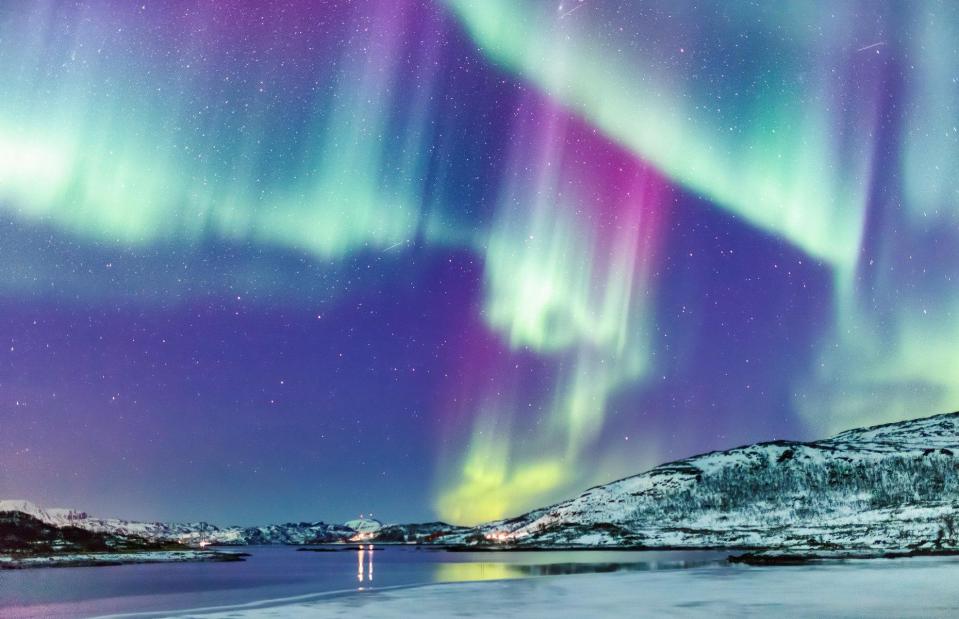
BlueOrangeStudio/Alamy Stock Photo
The Northern Lights (aurora borealis) is caused by activity on the surface of the sun. Solar storms give out energised particles that hit the Earth's atmosphere and are directed by the Earth's magnetic field to the north and south poles. All this creates mesmerising light shows that attract reams of people to the northern reaches of Scandinavia, Alaska and Canada between late August and early April.
Northern Lights, Iceland
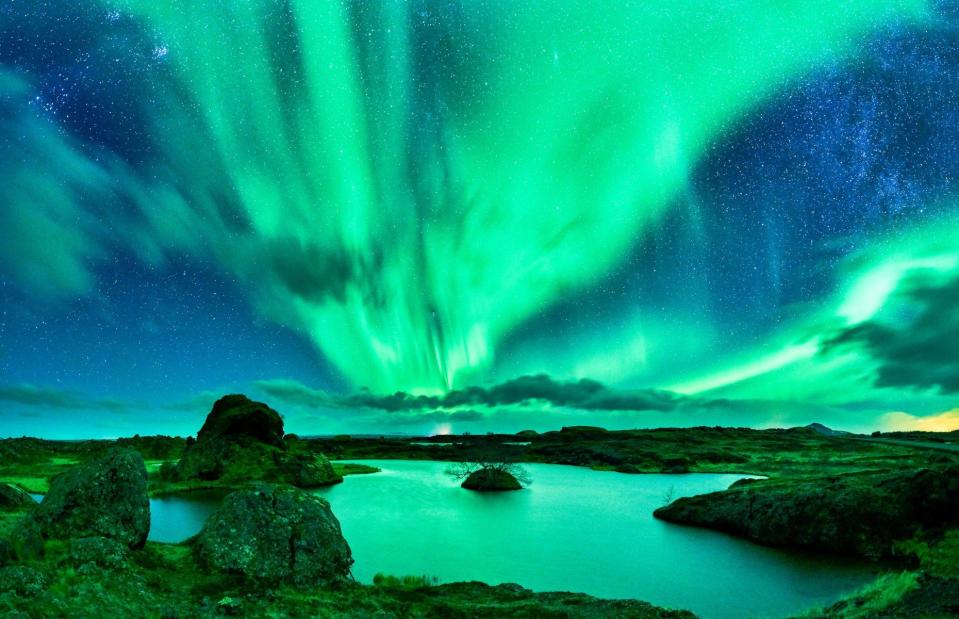
ARCTIC IMAGES/Alamy Stock Photo
You need a clear, cloudless light for the best chance to see the lights, and it's best to coincide your trip with a solar maximum stage of the sun (when our star is at its most active). The next predicted solar maximum is in 2025. On a good night, the lights dance and ribbon, starting out a milky colour before deepening into greens and sometimes even pinks and purples. Viewing the lights through a camera lens often means more intense hues.
Galápagos Islands, Ecuador
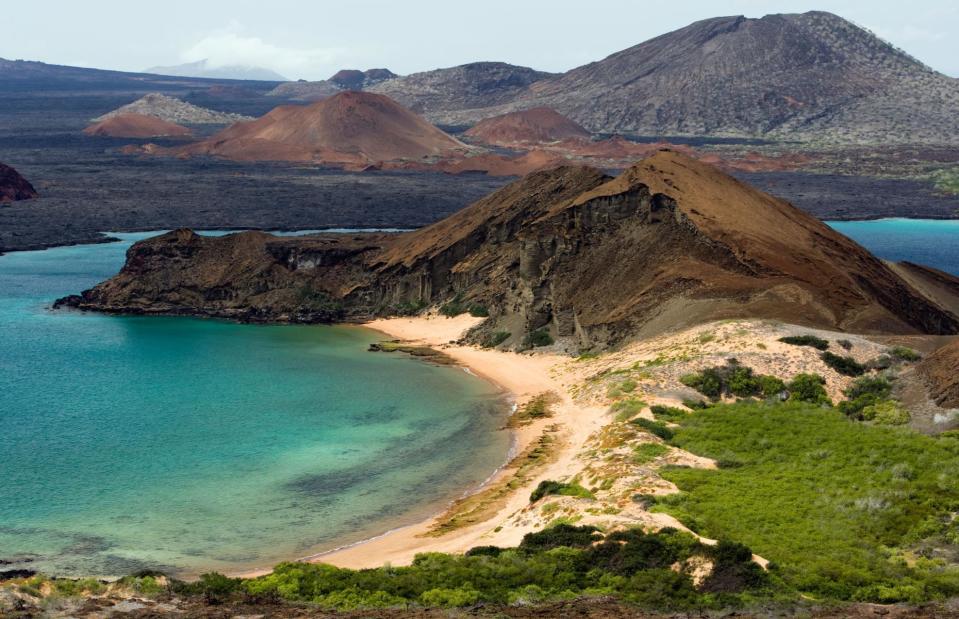
Bill Gozansky/Alamy Stock Photo
A unique island ecosystem at the convergence of three Pacific Ocean currents, the Galápagos Islands were formed by volcanic action. Geographically remote – 605 miles (974km) off the west coast of South America – the diverse species that live here arrived carried by the wind or floating on the sea. The archipelago is made up of 127 islands, islets and rocks, of which four are inhabited.
Galápagos Islands, Ecuador

Maridav/Shutterstock
The chain of islands belong to Ecuador but were only discovered 300 years before the arrival of Charles Darwin in 1835. It was after he had seen the unique land iguana, giant tortoise and many types of finch on the Galápagos that Darwin developed his theory of evolution by natural selection.
Baobab Avenue, Morondava, Madagascar
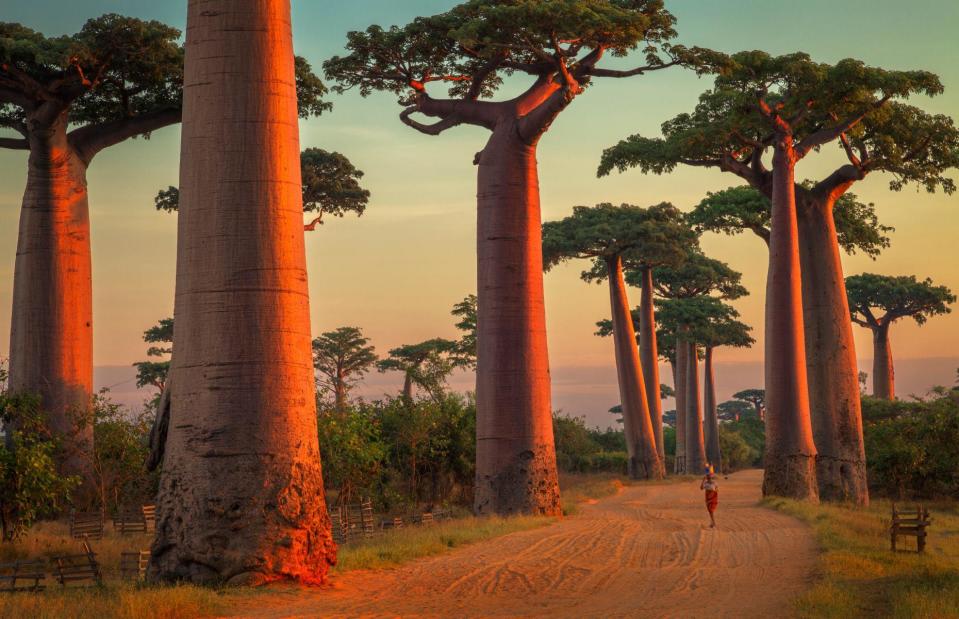
Fredrik Stenström/Alamy Stock Photo
These iconic trees in Madagascar are 2,800 years old and are known locally as reniala ('mother of the forest'). There are nine species of baobab in the world, two are native to mainland Africa, six to Madagascar and one to Australia, but this avenue of Adansonia grandidieri lining the dirt road between Morondava and Belon'i Tsiribihina are the most famous.
Baobab Avenue, Morondava, Madagascar

Babelon Pierre-Yves/Alamy Stock Photo
The cylindrical trunk of the giant baobab (pictured) can be up to 35-foot-thick (12m) and store up to 100,000 litres of water (around 26,000 gallons), which helps it thrive in dry, arid landscapes. It's an endangered species threatened by the development of agricultural land. Local people don't get an income from all the visitors to the avenue, so consider contributing by buying locally crafted souvenirs.
Sydney Opera House, Sydney, New South Wales, Australia

Jan Kratochvila/Shutterstock
The Sydney Opera House is a man-made wonder and a multi venue performing arts centre. A masterpiece of the 20th century architecture, UNESCO says of the Opera House that "its significance is based on its unparalleled design and construction”. Costing upwards of £52.8 million ($71.5m), it was largely paid for by a State Lottery.
Sydney Opera House, Sydney, New South Wales, Australia

Ivo Antonie de Rooij/Shutterstock
Built after an international competition was launched in 1956, today the shells of the Opera House – designed to look like the sails of a boat – are an iconic sight in Sydney Harbour. Incredibly, if all 14 shells were put together, they would form a perfect sphere. The structure houses studios, a concert hall, theatres, rehearsal rooms and the stupendous outdoor forecourt, which doubles as an open-air performance space. It's completely free to visit.
Ayutthaya, Thailand
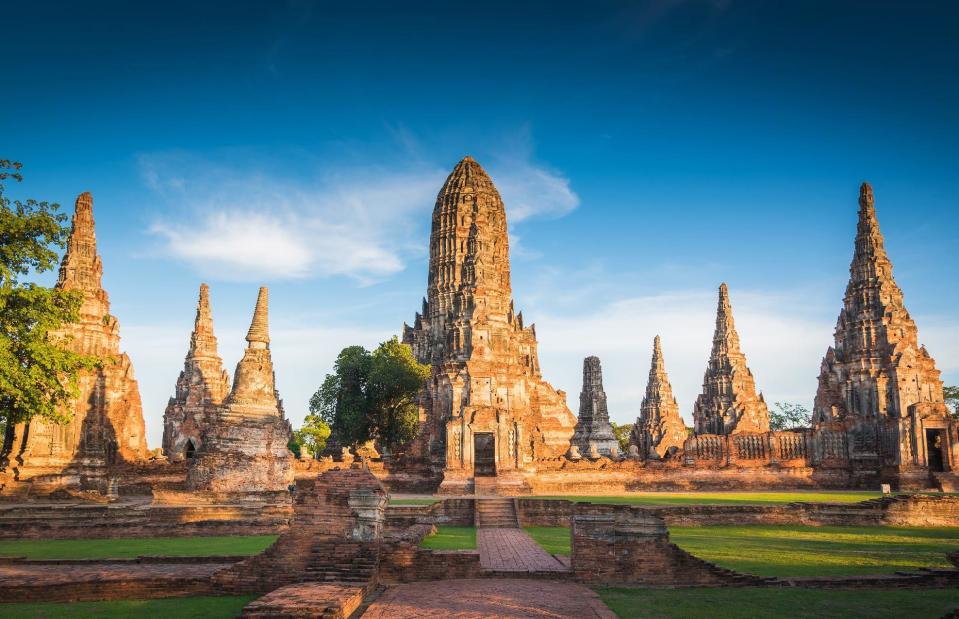
FocusStocker/Shutterstock
Capital of the Ancient Kingdom of Siam and 37 miles (60km) from today's capital, Bangkok, Ayutthaya flourished from the 14th to the 18th centuries but was razed to the ground by the Myanmar army in 1767. The ruins of prang (reliquary towers) and sprawling Buddhist monasteries give a sense of the huge scale of the city.
Ayutthaya, Thailand

PimjanPhoto/Shutterstock
Close to the walls of Wat Mahathat (Temple of the Great Relic) in the central area of Ayutthaya, a stone Buddha head is entwined in tree roots. An iconic image of Thailand, the head is thought to have been one of many that were severed from Buddha statues as the invading army sacked the city. Ayutthaya was destroyed by fire and all that remains are evocative ruins.
Sigiriya, Sri Lanka
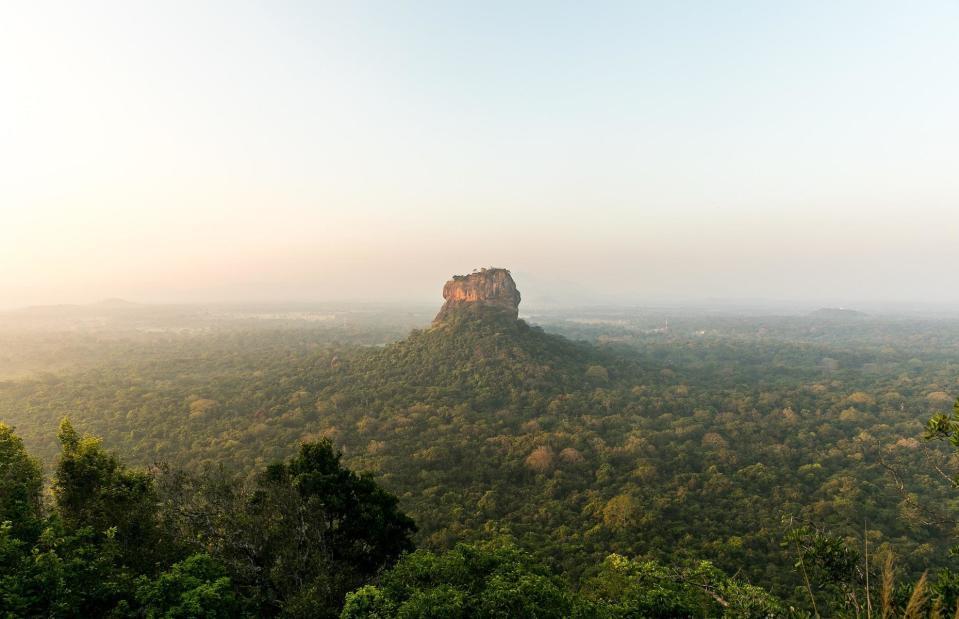
Egle Sidaraviciute/Unsplash
Jutting out of the plains and forests of northeast Sri Lanka, Sigiriya is one of the country’s most spellbinding sights. It’s hard to imagine the imposing rock fortress lay forgotten by the outside world until British historians rediscovered it in the 19th century. Built by the king Kashyapa I in the 5th century AD, its name means 'lion’s rock' and the only way to access the UNESCO World Heritage Site is through a passageway hewn in between a giant pair of lion paws.
Sigiriya, Sri Lanka
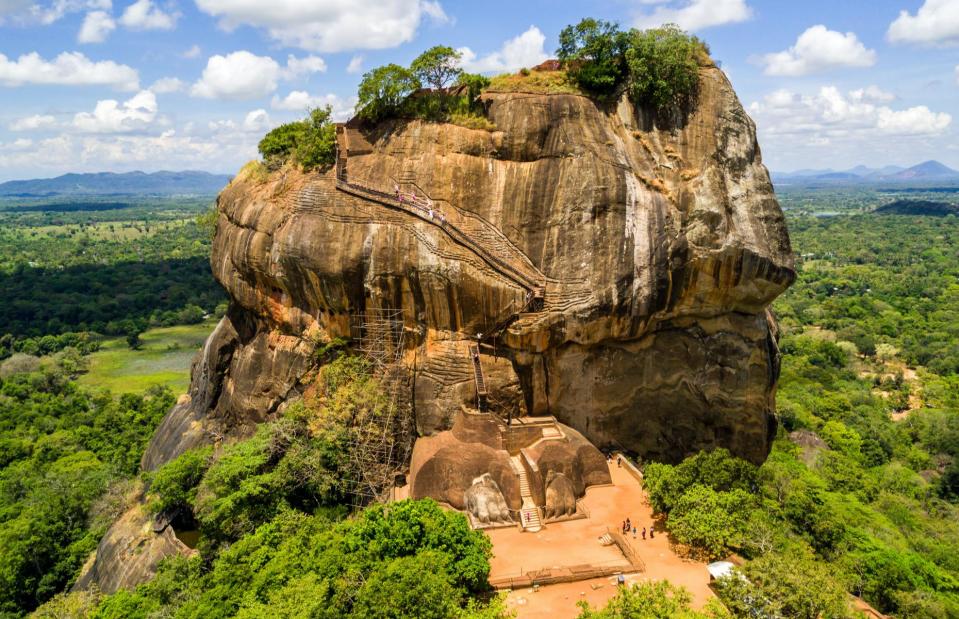
maloff/Shutterstock
Once you’re through the paws, you’ll need to hot foot it up 1,200 steps to reach the remarkable ruins that crown the 656-foot (200m) column of rock. There are places to stop for a breather and to admire the views along the ascent. Be sure to go with a local guide to learn about the mysteries of Sigiriya's chambers and frescoes. While the ruins themselves are extraordinary, the views across the citadel’s pleasure gardens, jungle and beyond are extremely entrancing. Visit in the early morning or late afternoon for cooler weather and less crowds.
Namib Desert, Namibia
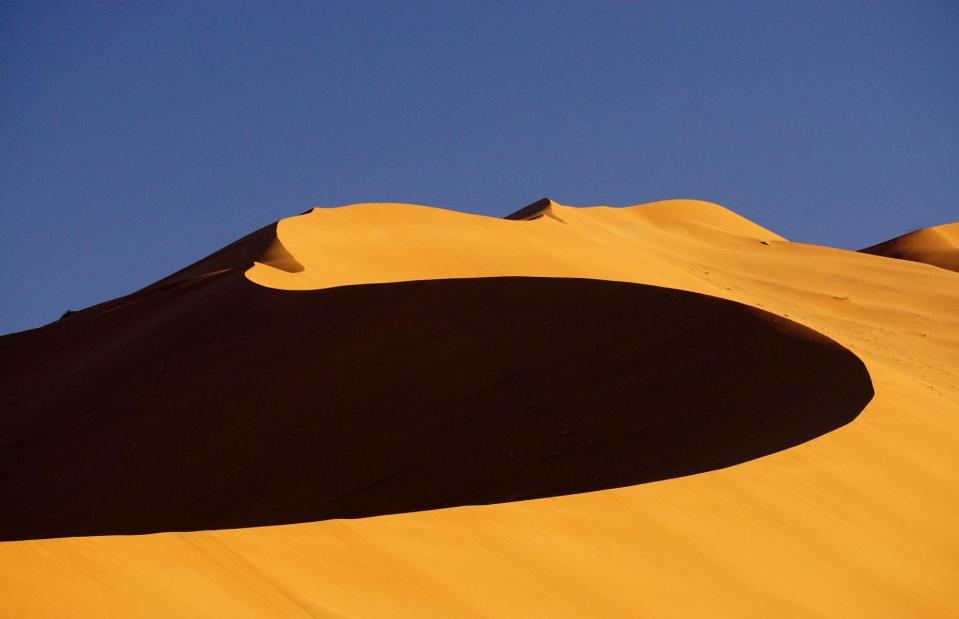
Joe McDaniel/Unsplash
Desolate and arid yet beguilingly beautiful, the Namib Desert is one of the most dramatic landscapes in the world. It's also the oldest desert in the world, developed over many millions of years from sand blown in from the Atlantic Ocean. Namibia's desert is far more than a sea of undulating sand, however, with an astonishing amount of colours and inhabitants (including oryx, zebra, ostrich, giraffe and antelope). Sossusvlei, set within the Namib-Naukluft National Park in the southern corner of Namibia, is famed for its vivid red and orange sand dunes and white salt pans.
Namib Desert, Namibia

Chris de Blank/Shutterstock
The best way to explore the coastal desert's stark beauty and surreal shapes is on a guided hike or by horseback. You can also float above its rolling red dunes on a hot air balloon ride. Big Daddy is Sossusvlei’s highest dune at 1,066 feet (325m), while Dune 45 is one of its most photogenic. Tackle the climb up its 278-foot (85m) sandy peak for staggering views of the scorched surrounds. Early mornings and late afternoons are the best times for light and comfort.
Ilulissat Icefjord, Greenland
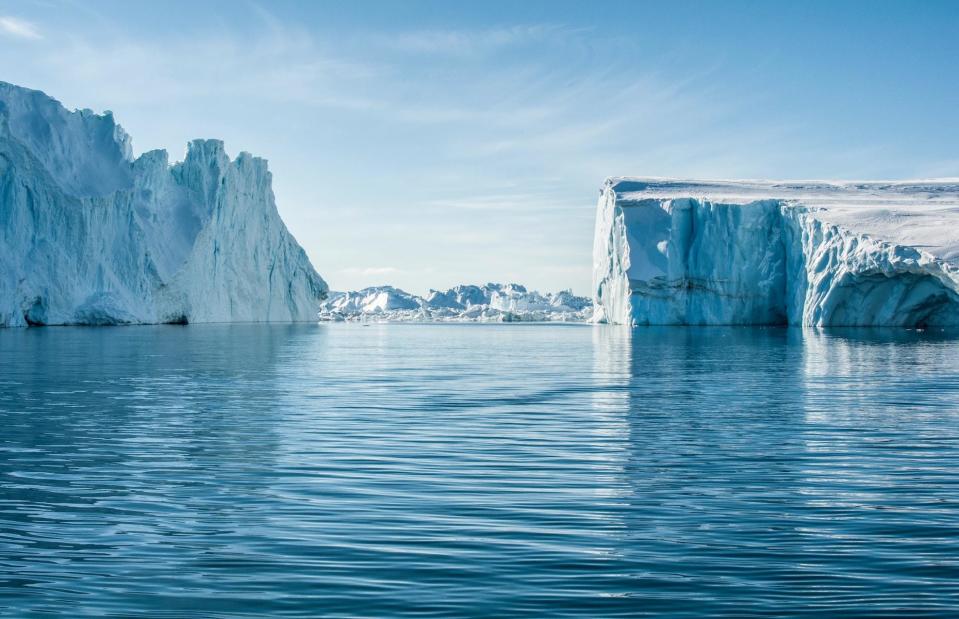
Tina Rolf/Unsplash
Known as Greenland’s iceberg capital, the town of Ilulissat lies on the edge of the remarkable Ilulissat Icefjord and is fed by Sermeq Kujalleq (also known as the Jakobshavn Glacier or Ilulissat Glacier). Various trails will take you to the edge of the icefjord to see its astonishing floating icebergs, but to see the glacier itself, one of the most active in the world, you’ll need to book on to a flightseeing tour.
Ilulissat Icefjord, Greenland
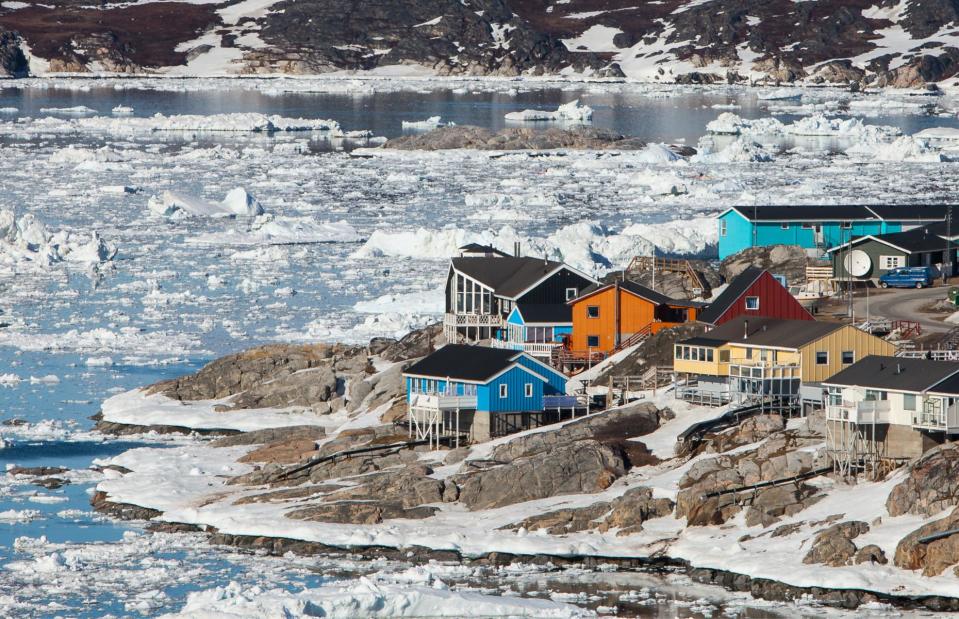
Kim Ries Jensen/Shutterstock
The best way to see the extraordinary ice sculptures which have calved from the Sermeq Kujalleq glacier is on a hike. Follow the plank boardwalk that winds through the UNESCO World Heritage Site and out to the coastline or go on longer guided tours to learn about the area’s history, culture and geology. Or it’s possible to kayak in the fjord and even dive down to see these surreal ice shapes up close. Another must is a day boat trip from Ilulissat to Eqi glacier slightly to the north.
Forbidden City, Beijing, China
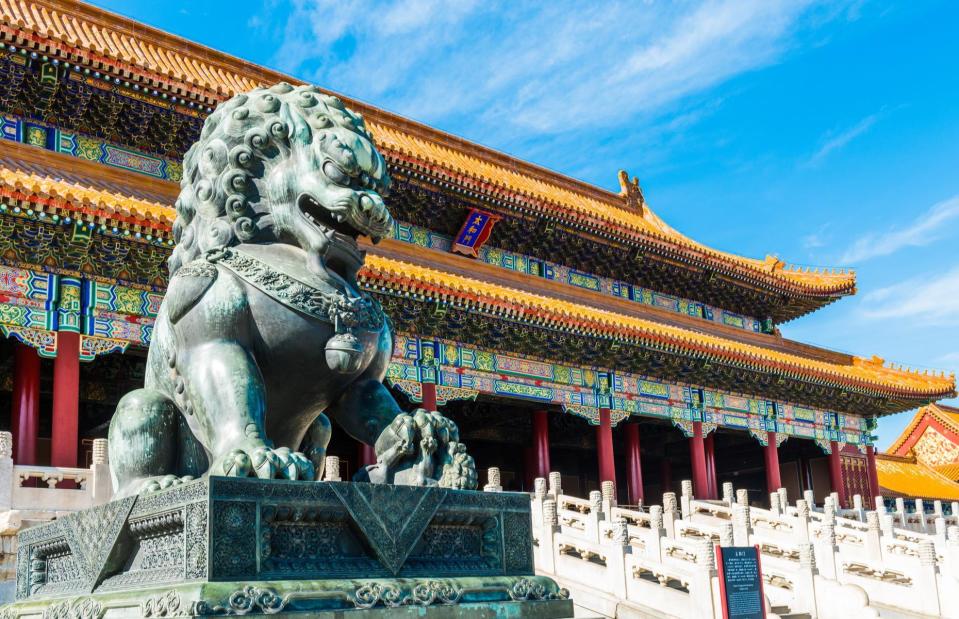
superjoseph/Shutterstock
For five centuries under the Ming and Qing dynasties, ordinary Chinese people were banned from even approaching the walls of the Imperial Palace, hence its better-known name. Today, the palace at the heart of the city welcomes visitors. Spread over 250 acres, it’s a huge complex, grand in scale with well-preserved buildings. Inside there are objects and artefacts from thousands of years of Chinese history.
Forbidden City, Beijing, China

superjoseph/Shutterstock
There are nearly 9,000 rooms to explore at this UNESCO World Heritage Site and you could easily spend the entire day here (or more). Most hotels can arrange an English speaking guide and help you book tickets in advance, as there is now a daily limit of 80,000 to help ease the influx of visitors.
Eiffel Tower, Paris, France
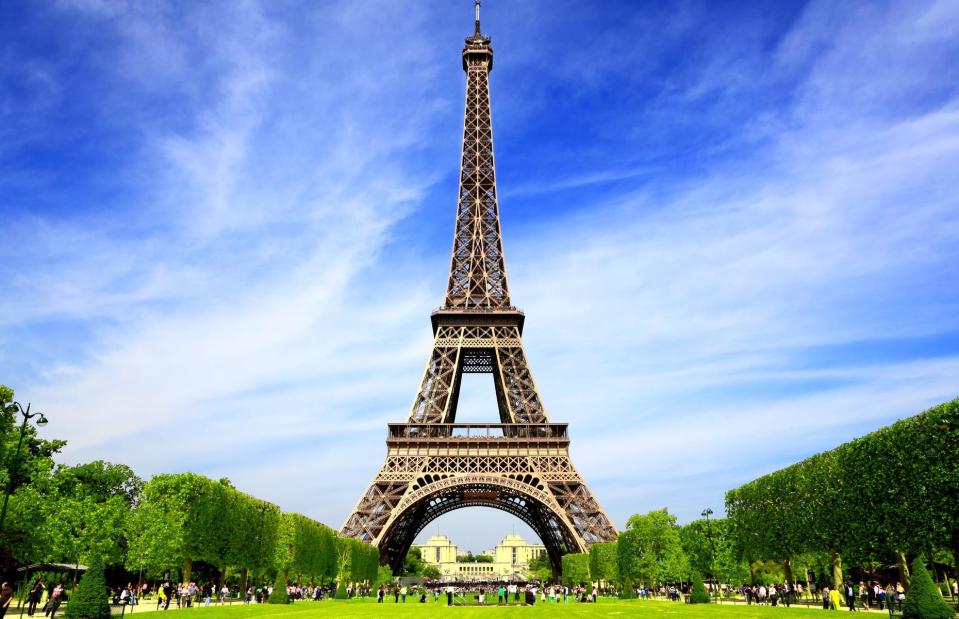
WDG Photo/Shutterstock
The world's most famous wrought iron structure and symbol of Paris soars confidently above the elegant city. It's hard to believe that what's now one of the most photographed landmarks in the world was only meant to be a temporary structure when it opened for the World's Fair in 1889. Many locals initially loathed it, but it's now one of the most visited monuments in the world. Typically, it welcomes around seven million visitors each year.
Eiffel Tower, Paris, France
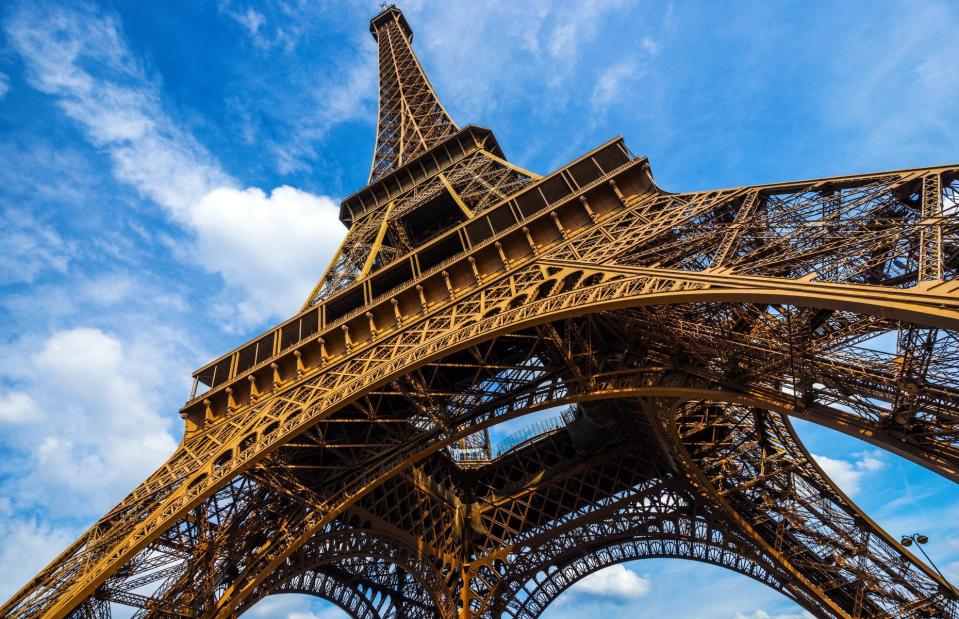
Gurgen Bakhshetyan/Shutterstock
You simply can't visit Paris without admiring or scaling this landmark. The views from the top are phenomenal, of course, but for the best skyline views you really need the Eiffel Tower in it. To capture top shots, head up Tour Montparnasse, which has the city's highest viewing platform. Place du Trocadero is a magnificent vantage point to gaze on the tower during the nightly light shows.
Burj Khalifa, Dubai, UAE
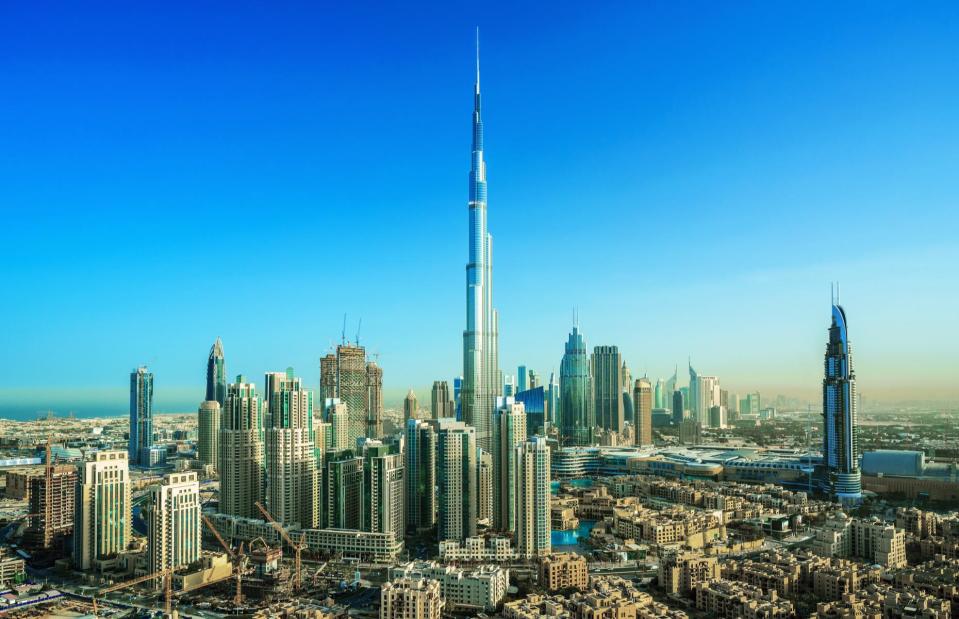
RastoS/Shutterstock
A true wonder of the modern age, the world's tallest building soars above the desert metropolis of Dubai. Rising over half a mile in height (828m), it dwarfs the surrounding skyscrapers. The Burj lays claim to many other records too: being the tallest free-standing structure and having the most number of floors (163) in the world among them. Its striking design was inspired by minarets and a desert flower.
Burj Khalifa, Dubai, UAE

Konstantin Yolshin/Shutterstock
To get a sense of the Burj Khalifa's scale, ascend to one of the two observation decks. There's a two-storey one on the 124th and 125th floors, or keep going up to one of the world's highest observation decks on the 148th floor. Those with a head for heights can enjoy fine dining as they gaze across the city and desert at its restaurant At.mosphere on the 122nd floor. Or stick to the tower's base to gaze upwards at the steel-and-glass behemoth and watch the Dubai Fountain dance.
Plitvice Lakes National Park, Croatia
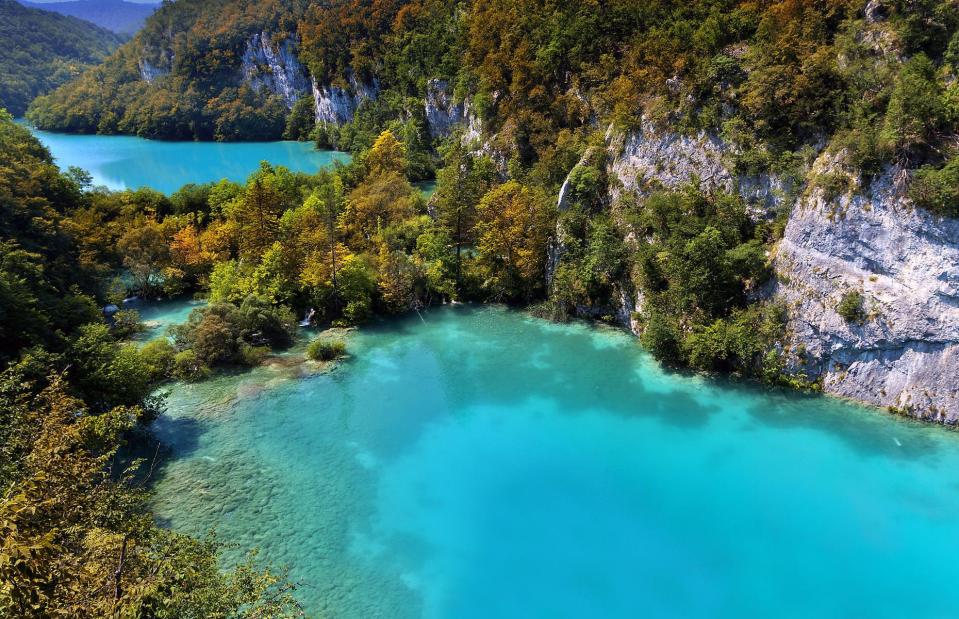
Tramont_ana/Shutterstock
Startlingly beautiful, this patchwork of lakes shimmers in varying shades of green, blue and turquoise. Connected by waterfalls and cascades, and surrounded by thick woodland, they're a sight to behold. You'll find the phenomenally pretty lakes between Zagreb and Zadar. Not surprisingly, the national park has become one of the country's top tourist destinations.
Plitvice Lakes National Park, Croatia
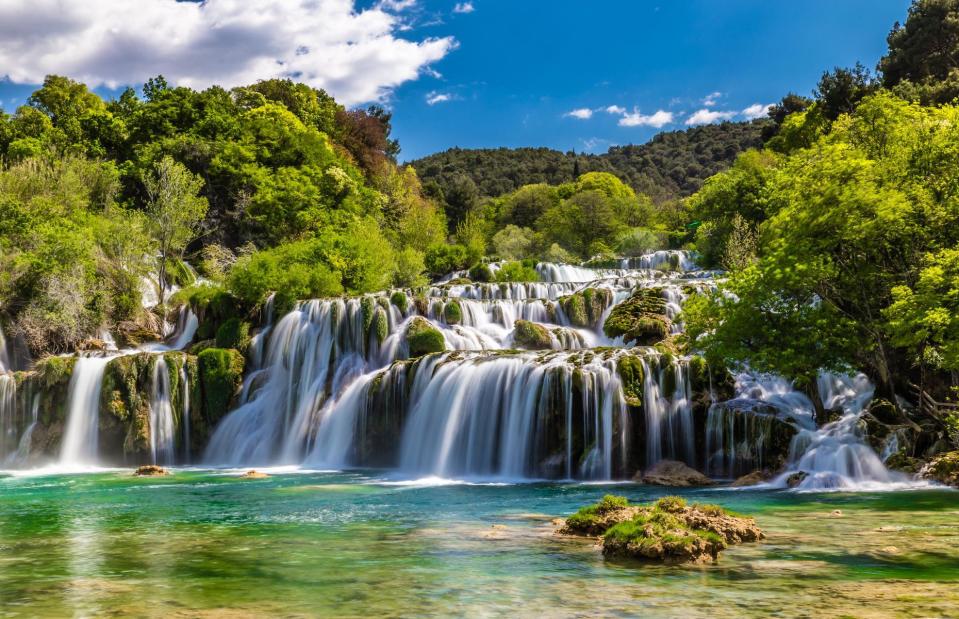
ZM_Photo/Shutterstock
If you're astute enough to visit during a quiet part of the day, soak in the serenity of the watery wonderland as you stroll along the boardwalk. It will take you past the 16 dazzling terraced lakes and the many waterfalls. There are several different trails you can follow around the park, but for the highest waterfalls, head to the end of the Lower Lakes where the Plitvica river cascades.
Schönbrunn Palace, Vienna, Austria
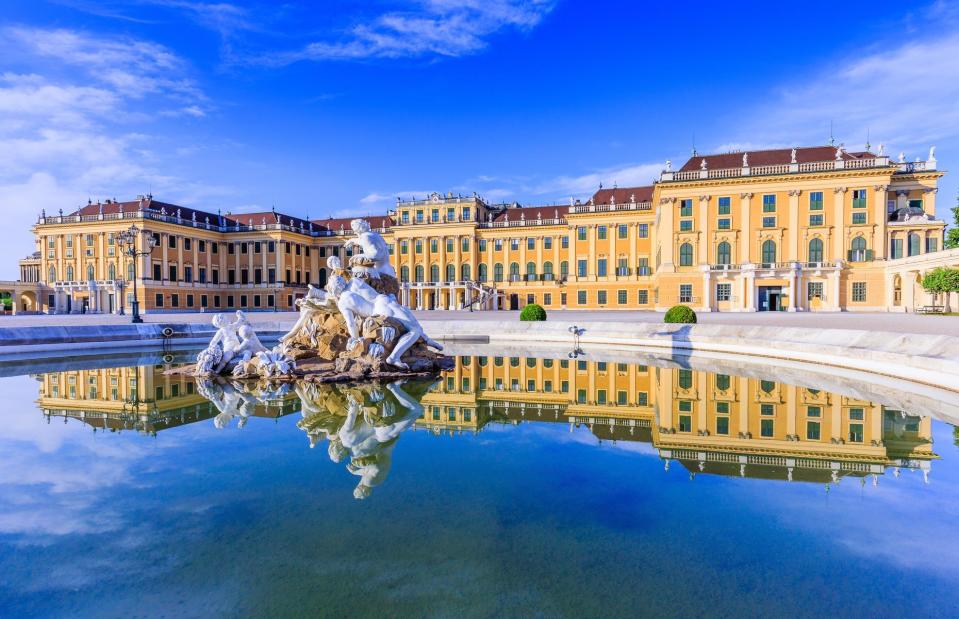
emperorcosar/Shutterstock
Austria is awash with lavish gilded palaces that hint at a bygone era and none more so than the magnificent Schönbrunn Palace in Vienna. The Baroque masterpiece was the summer residence of the Habsburg emperors from the 18th century to 1918. UNESCO added the palace and its grand gardens to its World Heritage List in 1996 and it's now Austria's most visited site.
Schönbrunn Palace, Vienna, Austria
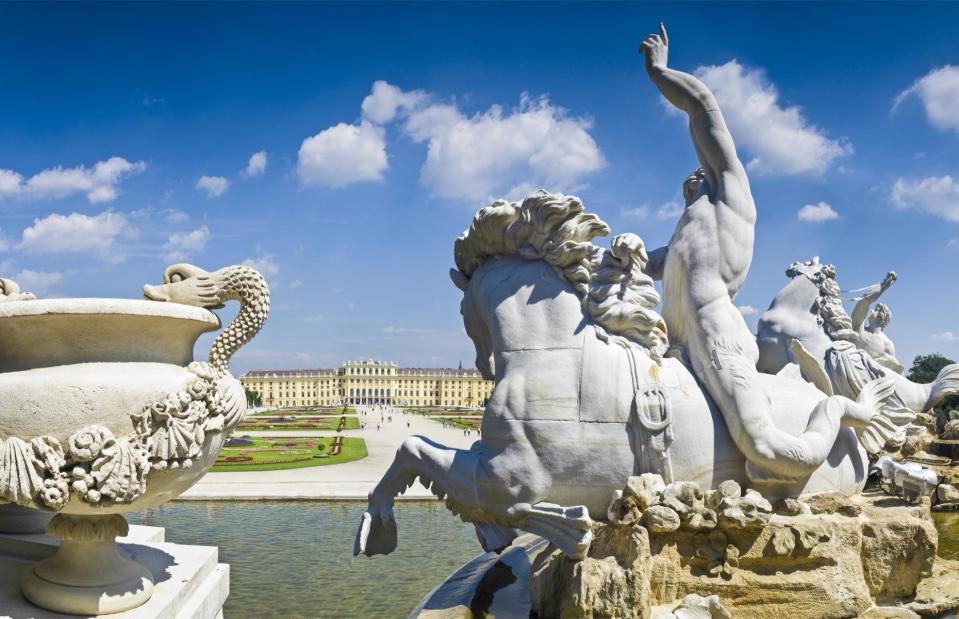
Matthew Dixon/Shutterstock
The work of architect Fischer von Erlach, the sprawling palace houses many priceless treasures that belonged to Austria's longest-reigning royal family. Inside, admire its intricately painted ceilings, enormous mirror and glittering crystal chandeliers. Outside, stroll around more than 400 acres of manicured gardens with their trickling fountains and ornate sculptures. There's even a vineyard within its estate. Usually, there are daily concerts at 8.30pm in the Palace Orangery where Mozart performed in 1786, but these are now suspended until at least the end of March.
Milford Sound, South Island, New Zealand
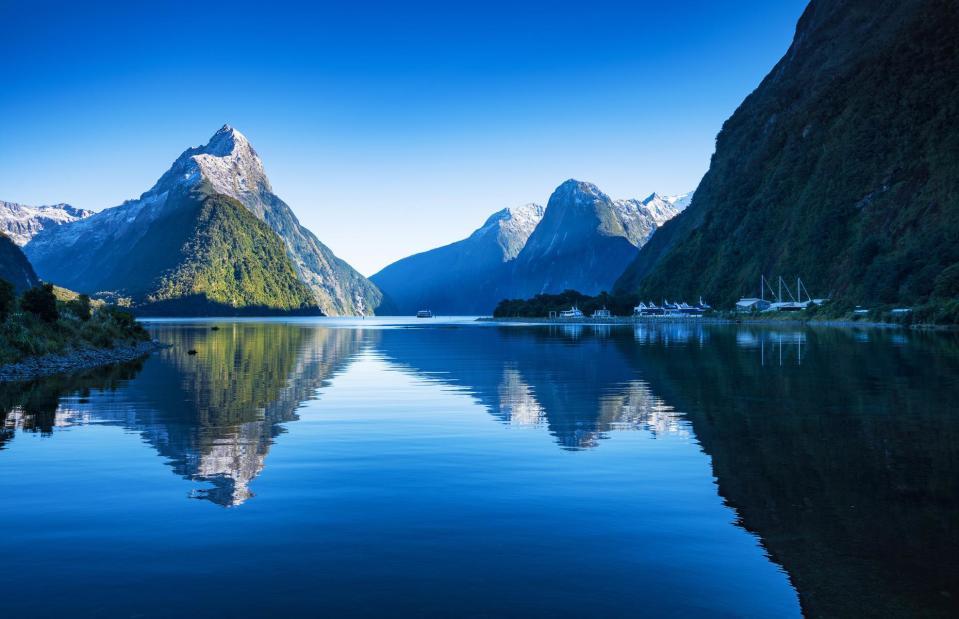
Somphol/Shutterstock
With soaring snow-capped mountains, dazzling waters and lush rainforest, the majesty of New Zealand's Fiordland National Park gives Norway some stiff competition. The jewel in this magical region in the island's southwest corner is Milford Sound, one of the 14 fiords. Rudyard Kipling was onto something when he called it the "eighth wonder of the world”.
Milford Sound, South Island, New Zealand
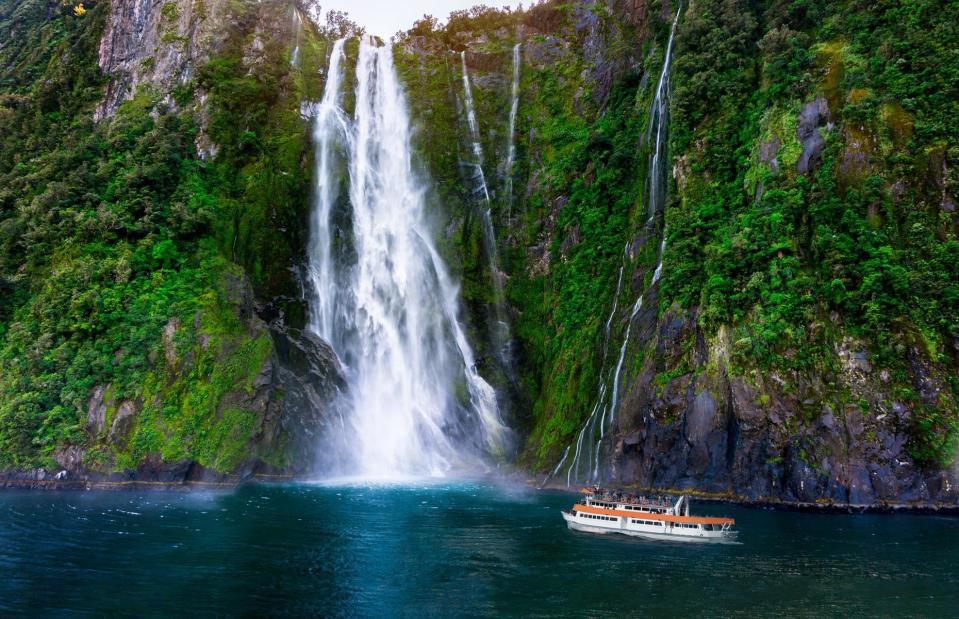
Blue Planet Studio/Shutterstock
New Zealand is opening its border in five stages in 2022 so international visitors will be able to visit Milford Sound once again. A popular way to explore the sound's amazing landscape is by following the 33-mile (53km) Milford Track. The multi-day hike follows an ancient Maori path but it can be tackled in shorter stretches. Chartering the waters on a cruise is another fantastic way to admire its serene beauty and you'll pass right alongside some of its crashing waterfalls.
Golden Gate Bridge, San Francisco, California, USA
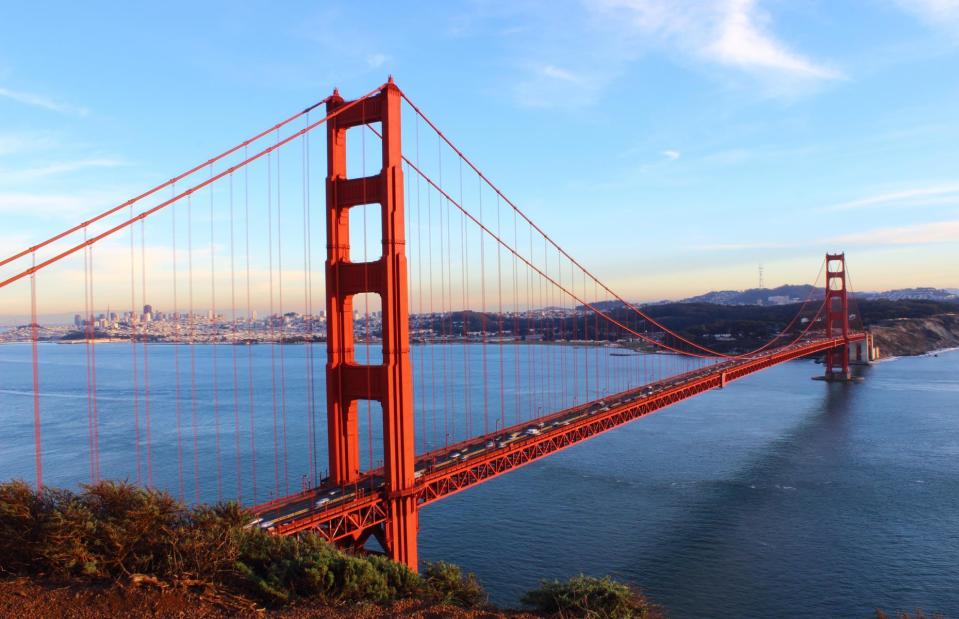
reindo/Shutterstock
One of America's most iconic structures, the Golden Gate Bridge is one of the world's most photogenic bridges. Construction on the ambitious project began in 1933 and took four years to complete, with significant loss of life among the workforce. Its 4,200-foot-long (1,280m) suspension made it the longest bridge in the world until 1964. Its characteristic International Orange colour was chosen to ensure visibility in the notoriously foggy Bay Area.
Golden Gate Bridge, San Francisco, California, USA

canadastock/Shutterstock
The commanding bridge, which is 746-foot-high (227m), can be seen from many points in San Francisco and over on the Marin County side. There are official viewpoints on both the north and south sides of the bridge too with free parking. While most people drive over the structure, one of the best ways to see the bridge in all its glory, plus the incredible bay views, is on a bike ride over to pretty bayside town Sausalito. Catch the ferry back to admire the bridge from the water.
Cliffs of Moher, County Clare, Ireland
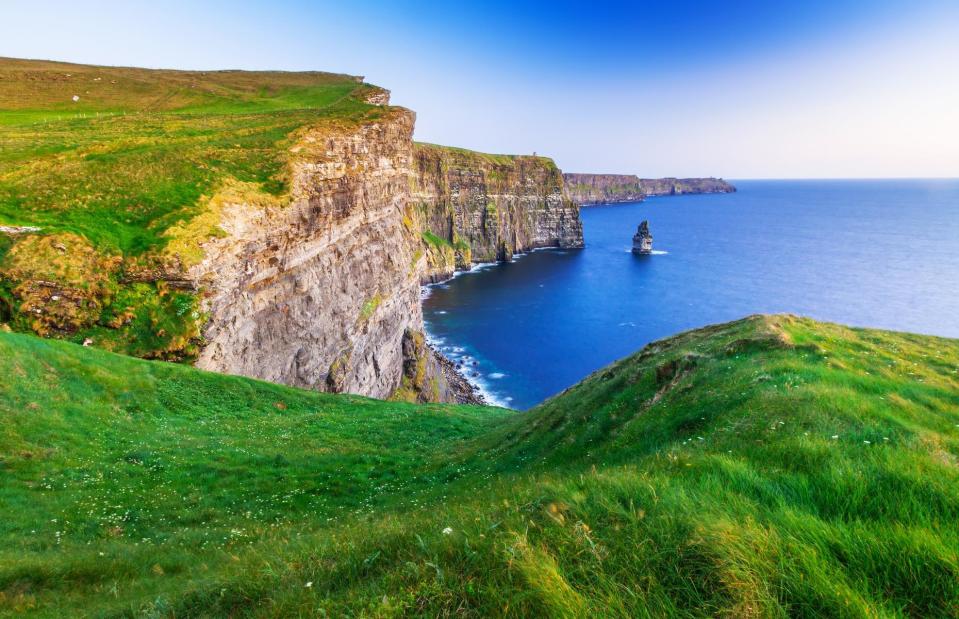
Patryk Kosmider/Shutterstock
Witness nature at its most awe-inspiring from these towering cliffs on the west coast of Ireland. Reaching heights of up to 702 feet (214m), these are some of the tallest cliffs in Europe and definitely the most majestic, as are the panoramas you get from the cliff edge: the crashing Atlantic Ocean, surreal sea stacks and dramatic Irish skies.
Cliffs of Moher, County Clare, Ireland
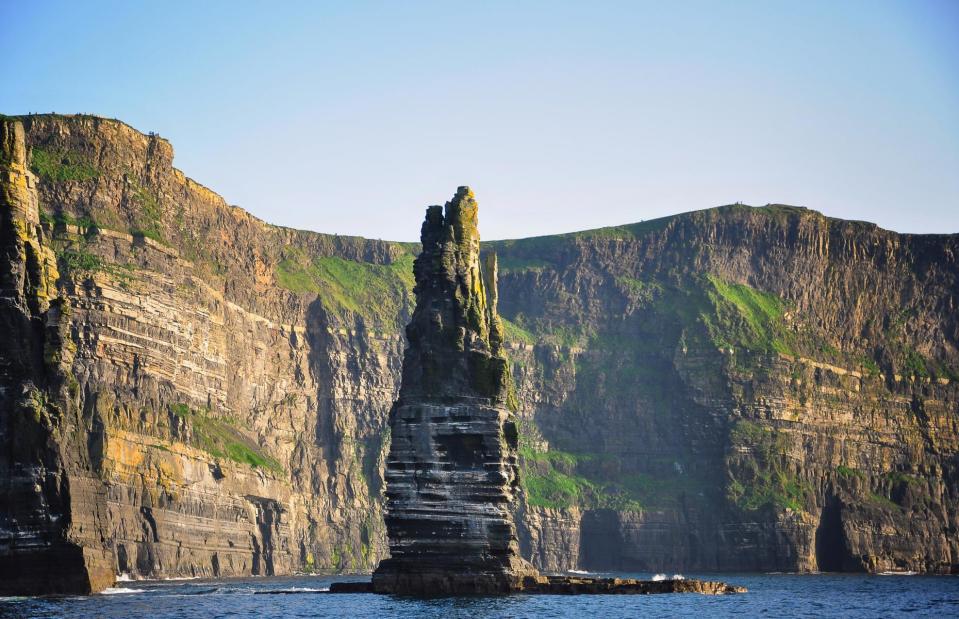
svetok30/Shutterstock
Take the Doolin Cliff Walk to soak in the spectacular clifftop scenery that characterises this stretch of County Clare's coast and breathe in the fresh sea air. You'll see many seabirds as you wander. Head to 19th-century O'Brien's Tower for one of the best vantage points – you can survey An Branán Mór sea stack and the Aran Islands from here. The best way to appreciate the sheer scale of the mammoth cliffs is by taking a boat trip beneath them.
Niagara Falls, Canada and USA
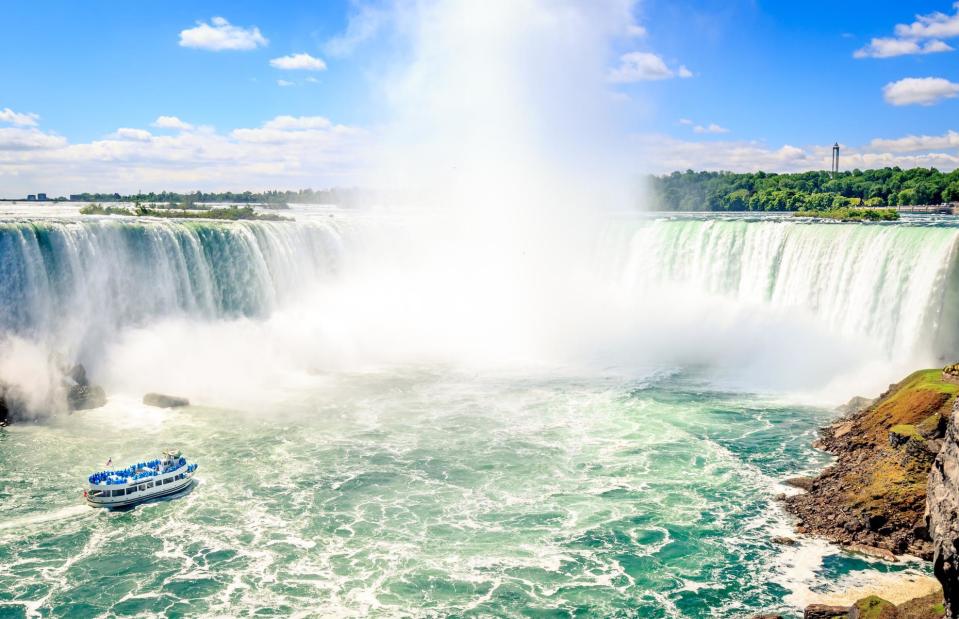
James Wong Photos/Shutterstock
This geological wonder that marks the border between the State of New York in the US and Ontario in Canada is among the world's most famous waterfalls. While it's not the tallest or widest, Niagara Falls is a mightily impressive sight. It stands 167-foot-high (51m) with a water flow of 2,832 tonnes of water per second (during high season). In fact, it consists of three waterfalls on the Niagara River: Horseshoe Falls (or Canadian Falls), American Falls and Bridal Veil Falls.
Niagara Falls, Canada and USA

PitK/Shutterstock
A popular way to see the falls in the US is on the all-electric Maids of the Mist boat trip through the Niagara Gorge. Or, get right up to the water's edge at the base of the gorge on a stroll along the riverside boardwalk on the Canadian side. Usually open between May and October, it passes along the very edge of the falls' white water with several viewing platforms along the way. Stay at the lovely Niagara-on-the-Lake in Ontario to discover more of the region's wonders such as the delicious wines.
Geirangerfjord, Norway
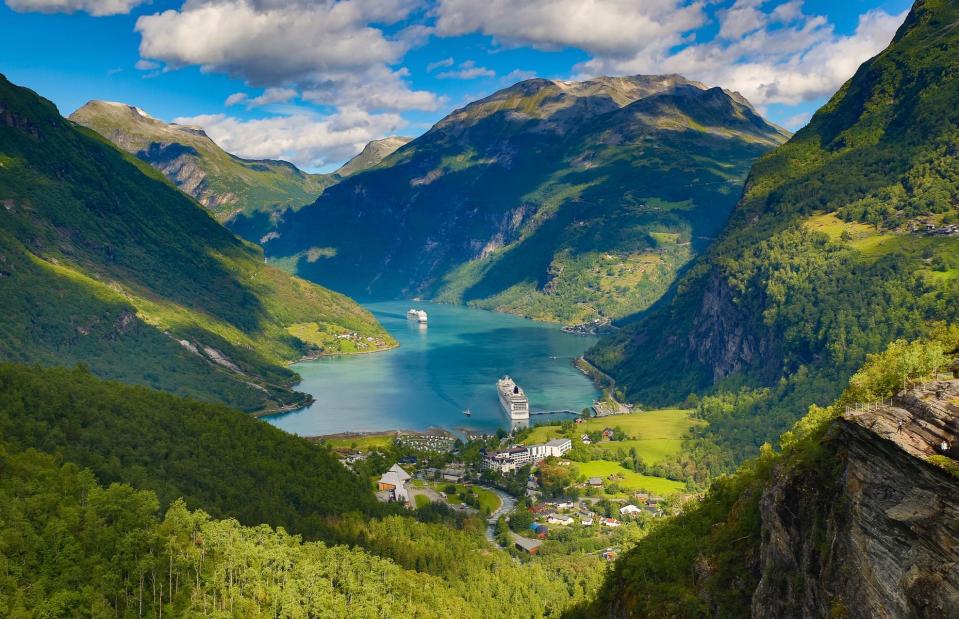
Kats Mark/Shutterstock
When it comes to natural beauty, Norway has been blessed with more than its fair share of spectacular landscapes including its myriad beguiling fjords. With its deep blue waters, tumbling waterfalls and vertiginous green slopes, the UNESCO-listed Geirangerfjord in western Norway is the most famously photogenic of them all.
Geirangerfjord, Norway
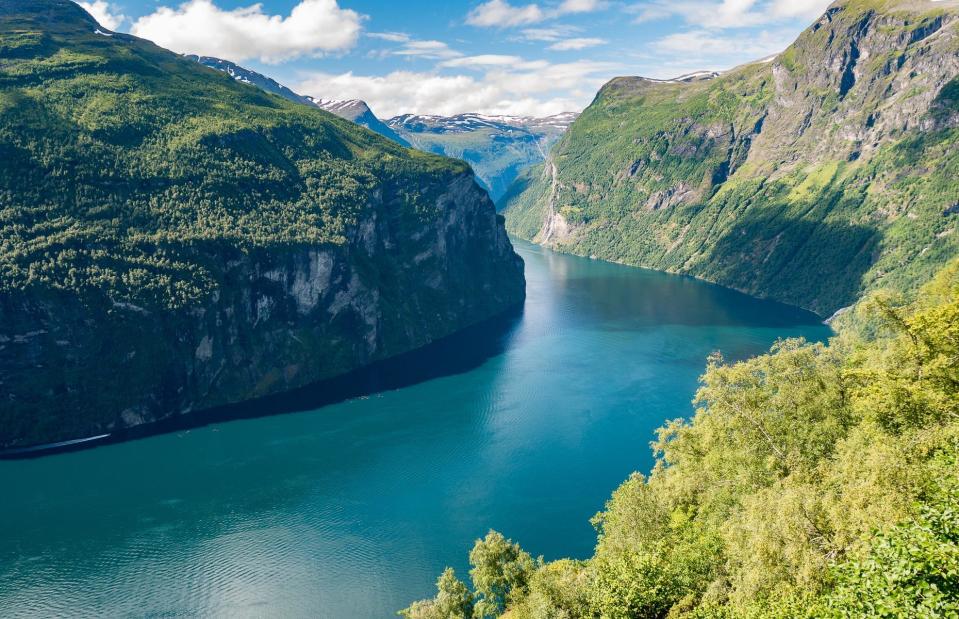
Charlotte Dirkse/Shutterstock
Hop on a ferry to meander around this idyllic fjord and glide past some if its plunging waterfalls. You can also kayak or raft around the deep waters or follow one of the many hiking trails around its cliffs. For soaring views over the dramatic landscape, drive up to Geiranger Skywalk – this viewing platform is Europe's highest fjord view from a road.
The Golden Temple, Amritsar, India
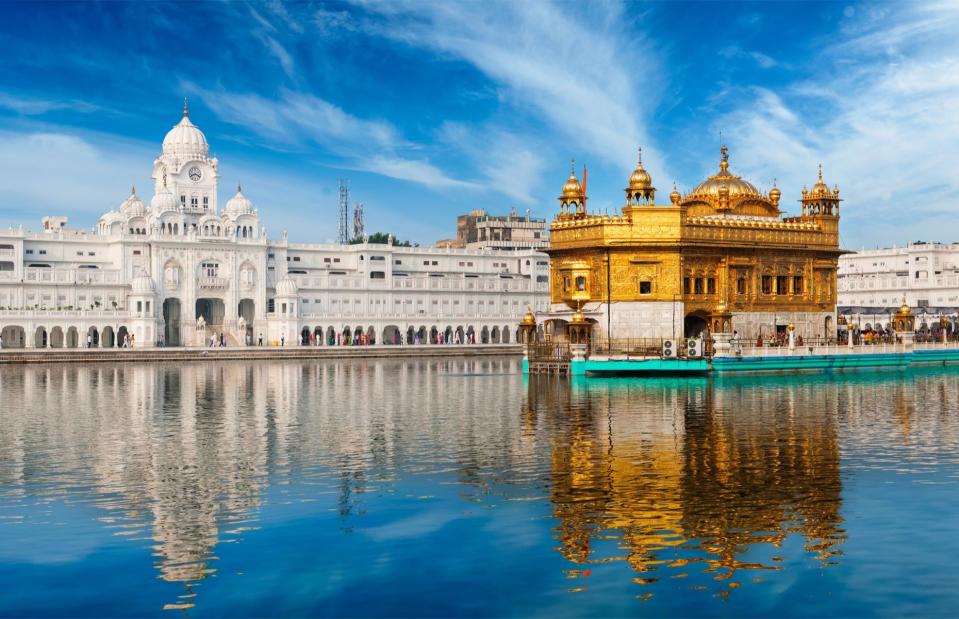
DR Travel Photo and Video/Shutterstock
The Golden Temple is one of India's most holy and humbling sites and among the world's most beautiful places of worship. The 16th-century gilded temple appears to float above the Amrit Sarovar (reflective pool), shimmering majestically in the holy water. Thousands of people make the pilgrimage to this extraordinary and surprisingly serene place of worship in Punjab each year.
The Golden Temple, Amritsar, India

saiko3p/Shutterstock
The Harmandir Sahib, or Golden Temple, is the most revered site for Sikhs. Its inner sanctum houses the original copy of the holy book Sri Guru Granth Sahib, the words of which are recited daily from before dawn until around 10.30pm. All faiths are welcome at the temple, which has four entrances to symbolise that people from all directions and walks of life can enter. The vast langar hall (community kitchen) serves free food, cooked and served by volunteers.
Lake Titicaca, Bolivia and Peru
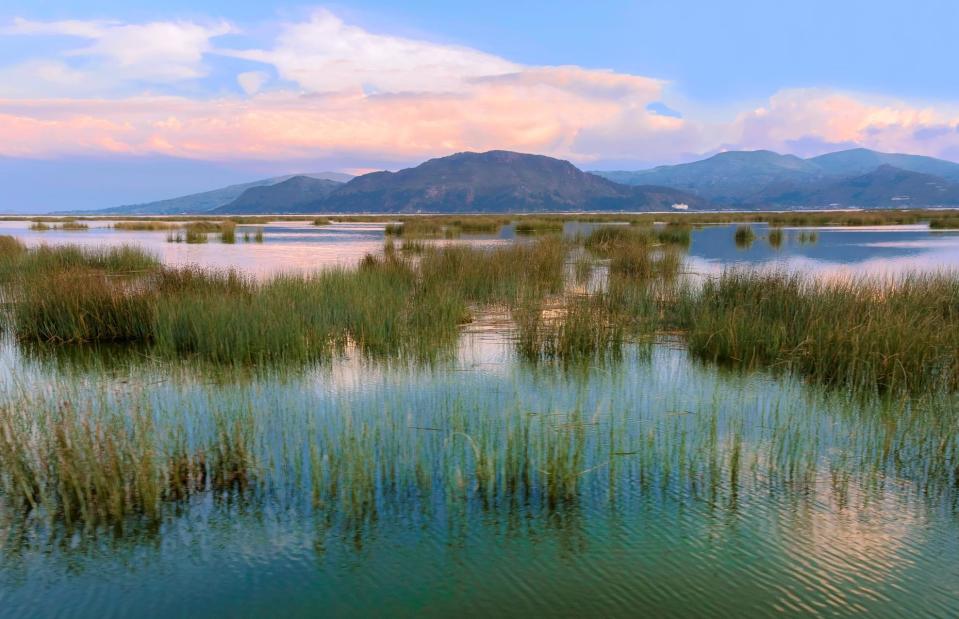
insideout78/Shutterstock
Ethereal Lake Titicaca is South America's largest lake and the highest navigable one in the world at 12,506 feet (3,812m) above sea level. Straddling the border between Peru and Bolivia, its startlingly blue waters are a truly spectacular sight against the bright sky and snow-capped Andes. The lake is incredibly sacred too: the ancient Incas believed it was the birthplace of the sun.
Lake Titicaca, Bolivia and Peru
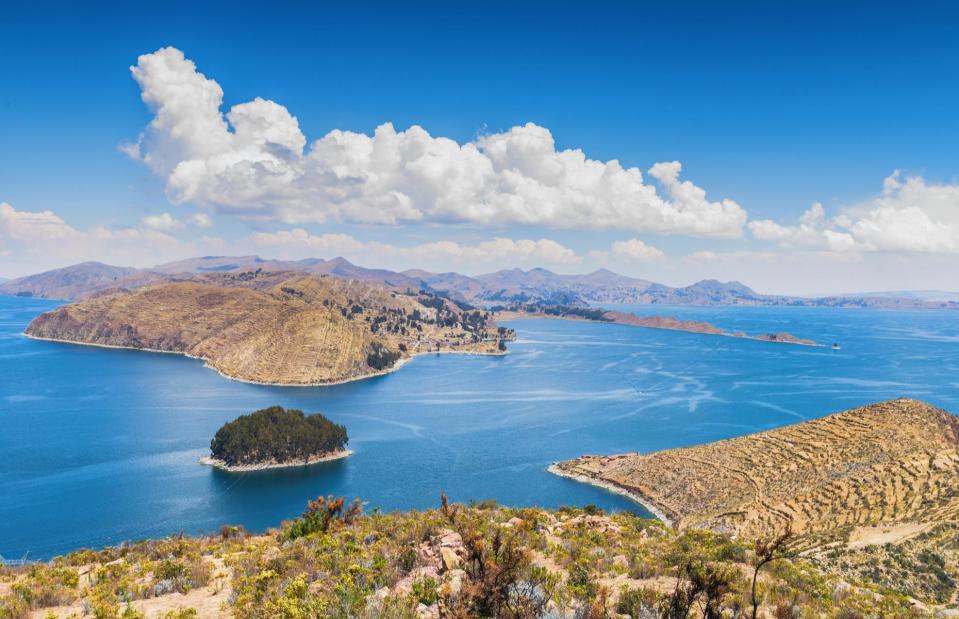
FANG YU LIN/Shutterstock
The largest of Titicaca's islands, Isla del Sol, on the Bolivian side of Lake Titicaca is a highlight to visit in the area. Catch a ferry from Copacabana to follow some of its scenic hiking trails. Be aware that the altitude can make hiking tough going. The artificial floating islands – home to the Uros people – are an incredible sight too. Wherever you are on this magical stretch of water, the sunsets over Lake Titicaca are mind-blowing.
Winter Palace, St Petersburg, Russia
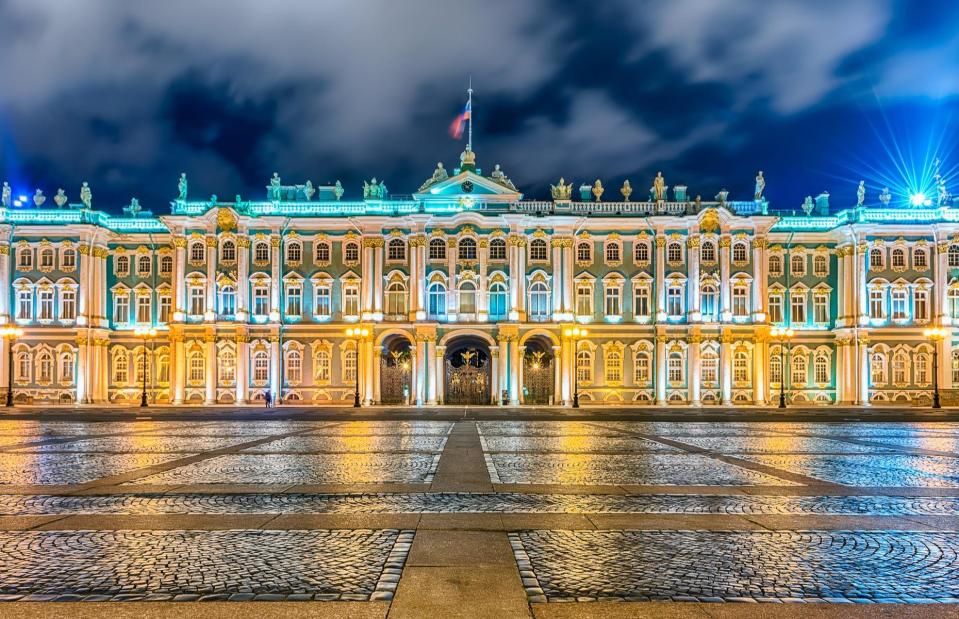
Marco Rubino/Shutterstock
An absolute masterpiece of Russian Baroque architecture, the Winter Palace has to be seen to be believed. The lavish former residence of the tsars in St Petersburg is now home to the Hermitage Museum and stuffed with incredible treasures. Sitting on the banks of the Neva River, but the gleaming building that sits here today was built by Baroque architect Bartolomeo Francesco Rastrelli between 1754 and 1762.
Winter Palace, St Petersburg, Russia
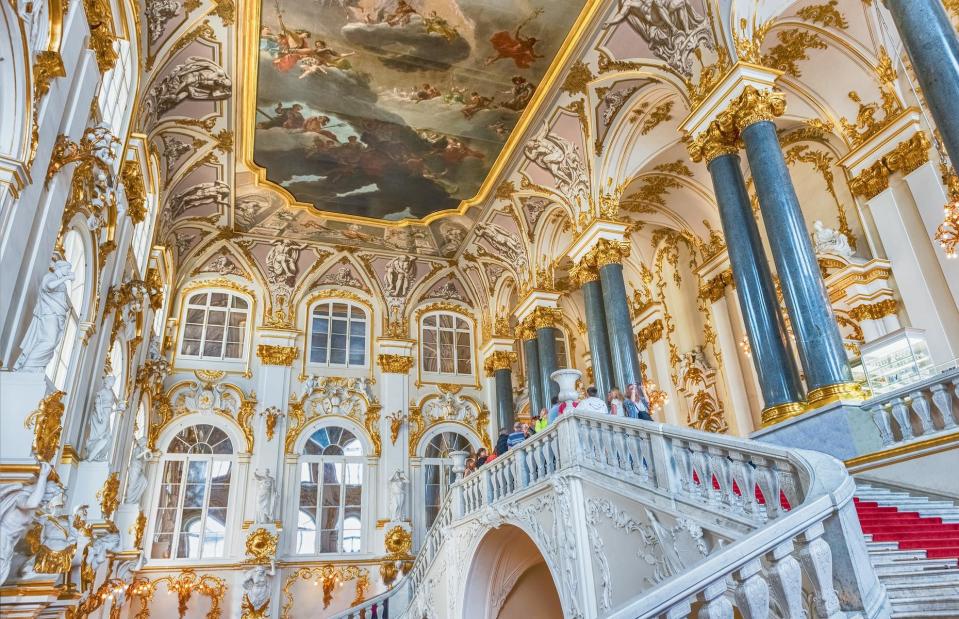
Marco Rubino/Shutterstock
Admire its intricately decorated façade, including the parapets which are festooned with countless statues and vases, then head inside to ogle at the historic and extravagant State Rooms on the first floor. You'll need days to even touch on some of the artistic treasures on display in the Hermitage's vast collection. The palace is arguably even more beautiful at night when its lights twinkle and its grandiose reflection dances on the river.
Alhambra, Granada, Spain

Marques/Shutterstock
Framed by the foothills of the Sierra Nevada, the Alhambra Palace is a Moorish masterpiece and one of Europe's most stunning monuments. Looming above the gorgeous Andalucían town of Granada, the Nasrid sultans ruled what was the last Spanish Muslim kingdom from this lavish royal palace for 250 years. They finally fell to Ferdinand of Aragon and Isabella of Castile in 1492.
Alhambra, Granada, Spain
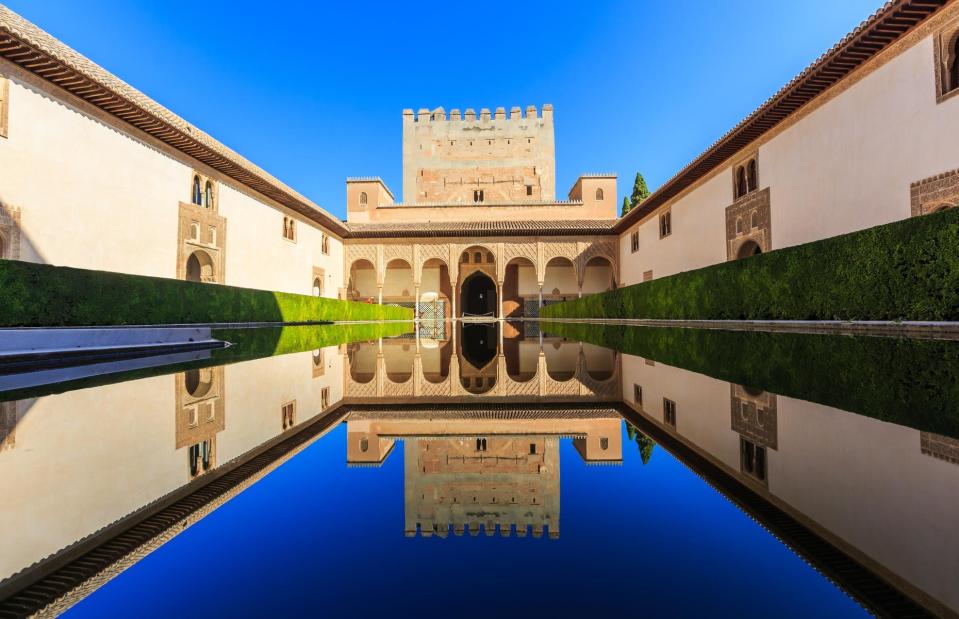
emperorcosar/Shutterstock
Book tickets well in advance to make sure you get to explore the many wonders of this extraordinary palace and fortress. It's made up of three parts: the Casa Real (the royal palace), the Alcazaba (old fortress) and the dreamy summer palace Generalife. Leave plenty of time to explore the lush Generalife gardens with their abundant flowers and water features. The tower in the Alcazaba also has stunning views across the city's old quarter with its whitewashed houses and narrow winding lanes.
The Lake District, Cumbria, UK

Ian Duffield/Shutterstock
Lofty fells, lakes, tarns, forests and waterfalls, this spellbinding landscape in the northwest of England is arguably the country's most stunning and dramatic natural attraction. Its extraordinary beauty has captivated and inspired many renowned artists and literary greats. The 885-square-mile (2,292sq km) Lake District National Park was awarded UNESCO World Heritage status in 2017.
The Lake District, Cumbria, UK
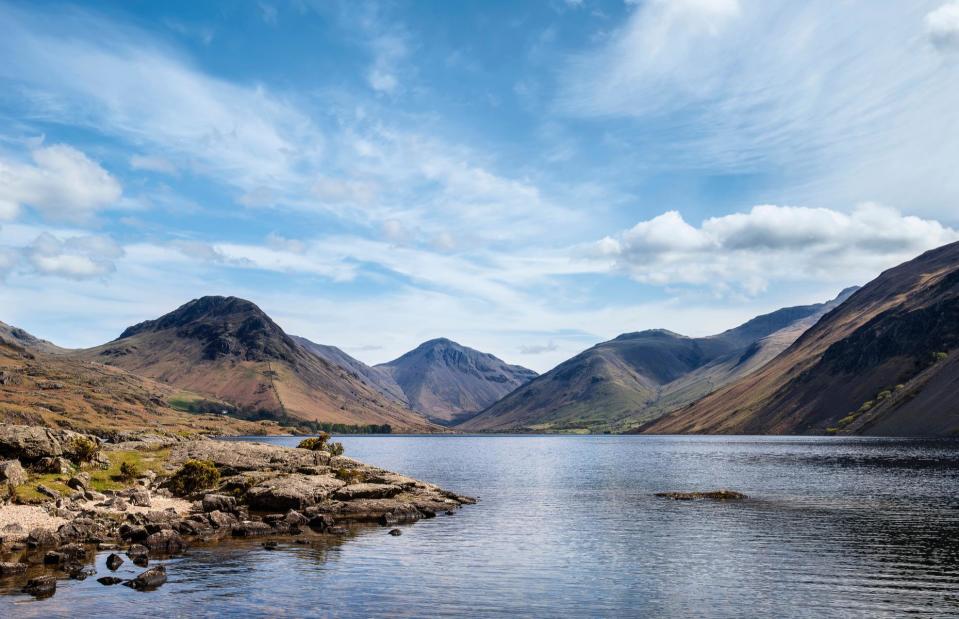
Matt Gibson/Shutterstock
With an incredible network of trails, this is prime hiking country. Attempt to scale England's highest peak Scafell Pike. Go boating on the longest lake in England, Windermere, take a steamer cruise around Coniston or take a dip from the pebbled beaches of Buttermere or Grasmere. On dry land, you can visit the homes of Beatrix Potter and William Wordsworth. The photogenic region is also stuffed with cosy country pubs, B&Bs and Michelin-starred restaurants.
Victoria Falls, Zambia & Zimbabwe
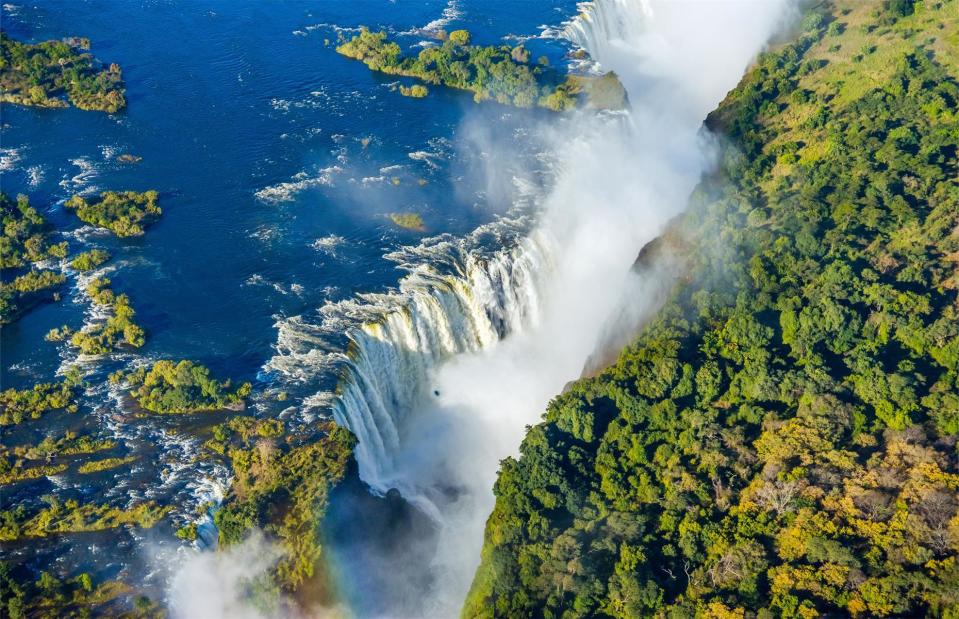
Efimova Anna/Shutterstock
Known as Mosi-oa-Tunya ('the smoke that thunders') in the local language, this thundering curtain of water on the Zambia and Zimbabwe border is classed as the largest waterfall in the world, based on its width. Measuring 5,604 feet wide (1,708m) and 354 feet long (108m), it's a striking reminder of the power of nature.
Victoria Falls, Zambia & Zimbabwe
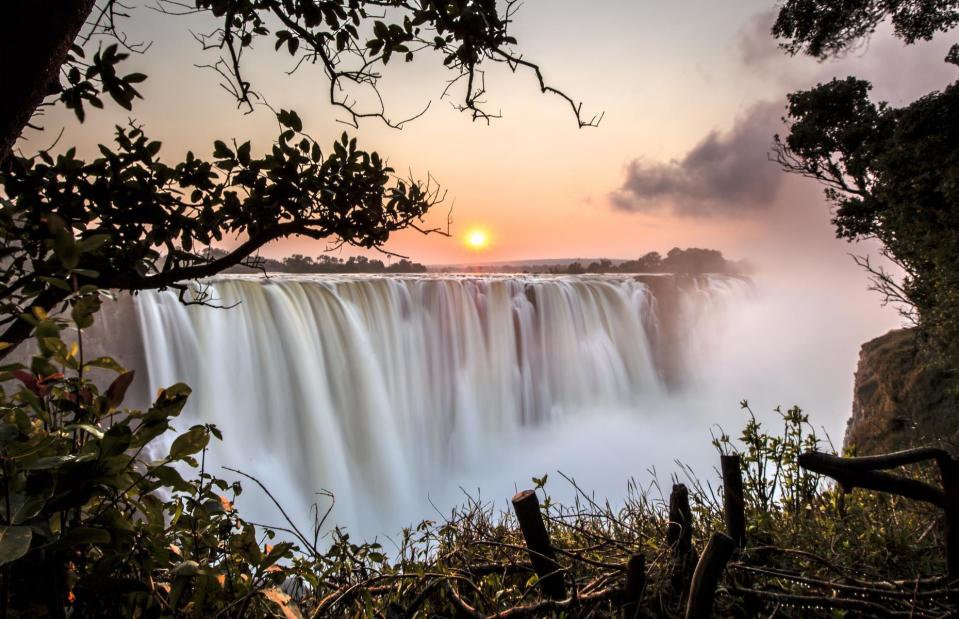
2630ben/Shutterstock
There are many ways to admire the remarkable falls: follow trails along the cliffs, set off on a sunset steam train ride along Victoria Falls Bridge or take to the skies aboard a helicopter. Those brave enough can take a dip in the Devil's Pool, a little pocket of water on the edge of the abyss, or go white-water rafting at its foot when the water levels are lower. To see the falls at their most powerful, visit between January and April.
Giant's Causeway, Northern Ireland, UK
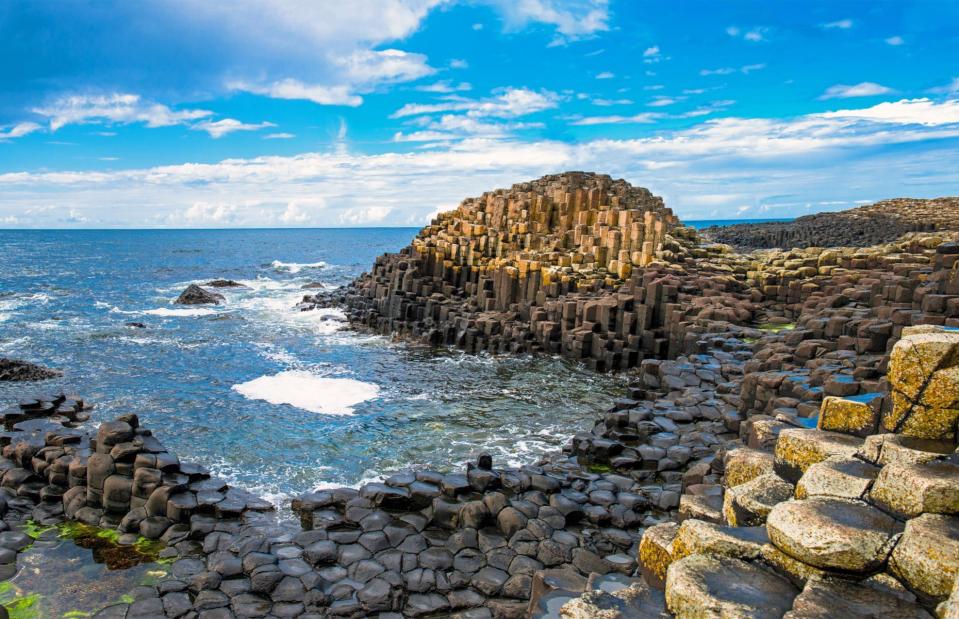
Lyd Photography/Shutterstock
It's hardly surprising that this surreal rock formation on the coast of Antrim in Northern Ireland is steeped in magical legends. The curious, near-perfect hexagonal columns are a marvel of nature. According to local legend, the causeway was built by Irish giant Finn McCool so he could cross over to Scotland to confront his rival Benandonner. However, scientists would have it that the basalt 'steps' were caused by intense volcanic activity some 50 to 60 million years ago.
Giant's Causeway, Northern Ireland, UK
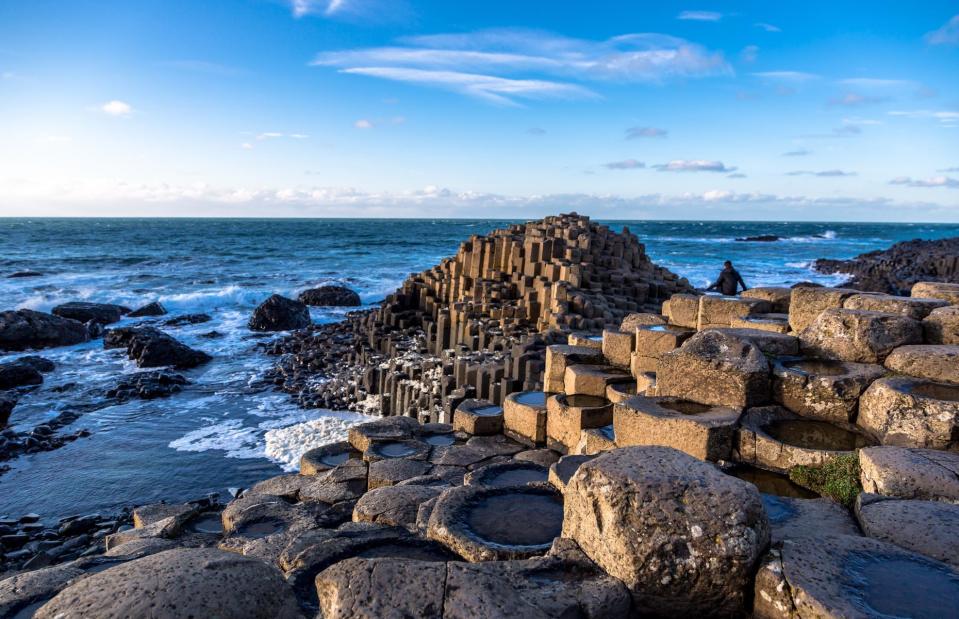
LMspencer/Shutterstock
Either way, there's no denying the extraordinary and unique beauty of these 40,000 interconnected basalt pillars that tumble into the Atlantic. Appreciate them from afar then head down to hop across them. Look out for the Grand Causeway, the largest of three rock outcrops. A great way to explore Northern Ireland's only UNESCO World Heritage Site is the Giant's Causeway Clifftop Experience – a five-mile (8km) guided clifftop walk from Dunseverick Castle to the stones.
Liking this? Click on the Follow button above for more great stories from loveEXPLORING
St Peter's Basilica, Vatican City
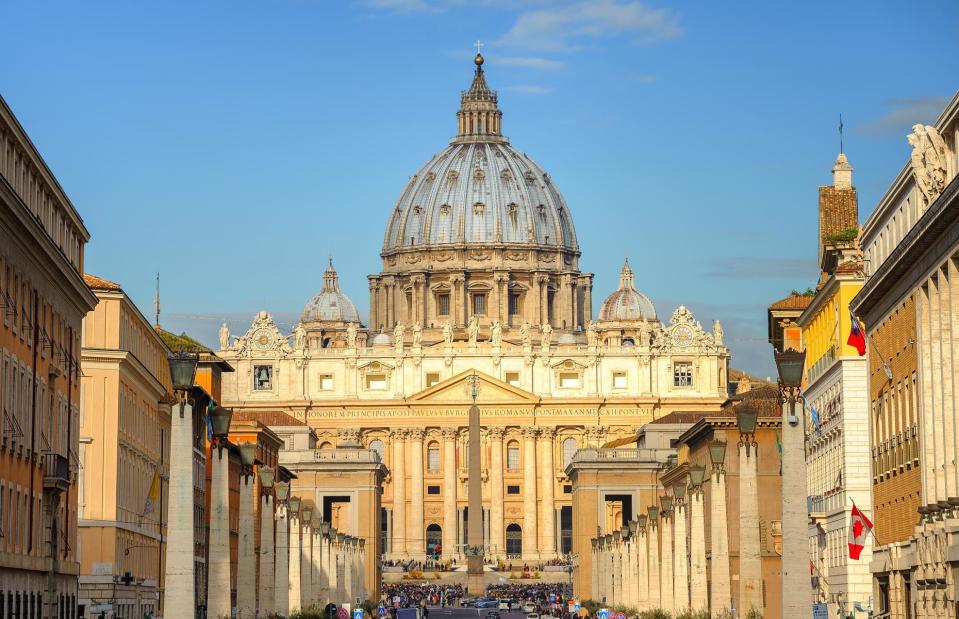
Boris Stroujko/Shutterstock
One of the largest churches in the word and the cradle of Catholicism, this impressive Renaissance church is an awe-inspiring sight whatever your religious persuasion. The centrepiece of the papal enclave of Vatican City, it's said to have been built upon the burial site of Saint Peter, one of the 12 Apostles of Jesus Christ and the first Pope.
St Peter's Basilica, Vatican City
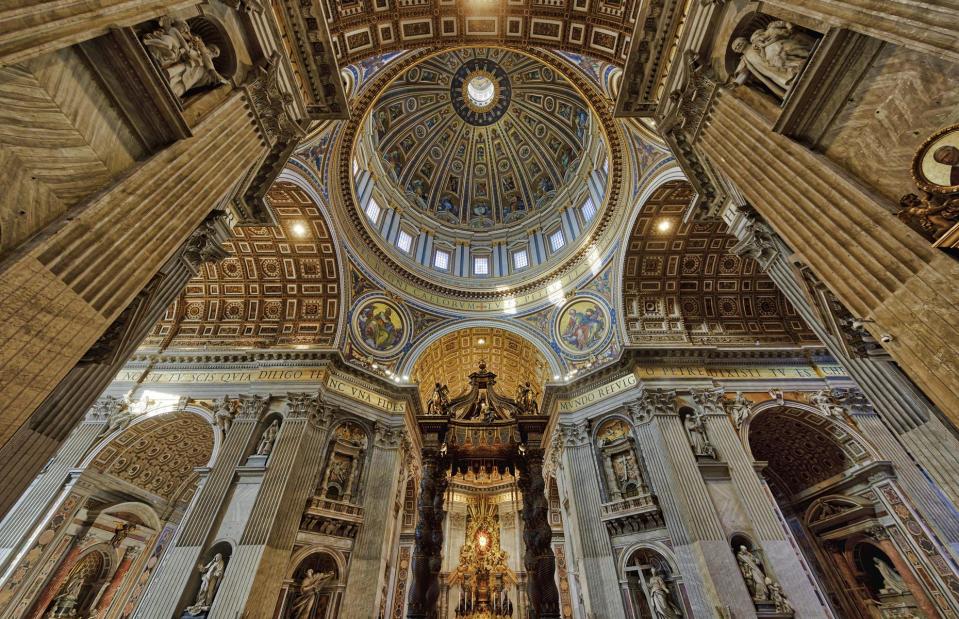
Laszlo Szirtesi/Shutterstock
The Vatican's dazzling church is most famous for its riches including the enormous painted dome, a masterpiece of the Italian Renaissance era designed by Michelangelo. It is the tallest dome in the world and you can climb it for soaring views over Saint Peter's Square and beyond. Other treasures include exquisite and priceless works of art by Italian masters Raphael, Bramante, Michelangelo and Bernini.
Statue of Liberty, New York City, New York, USA
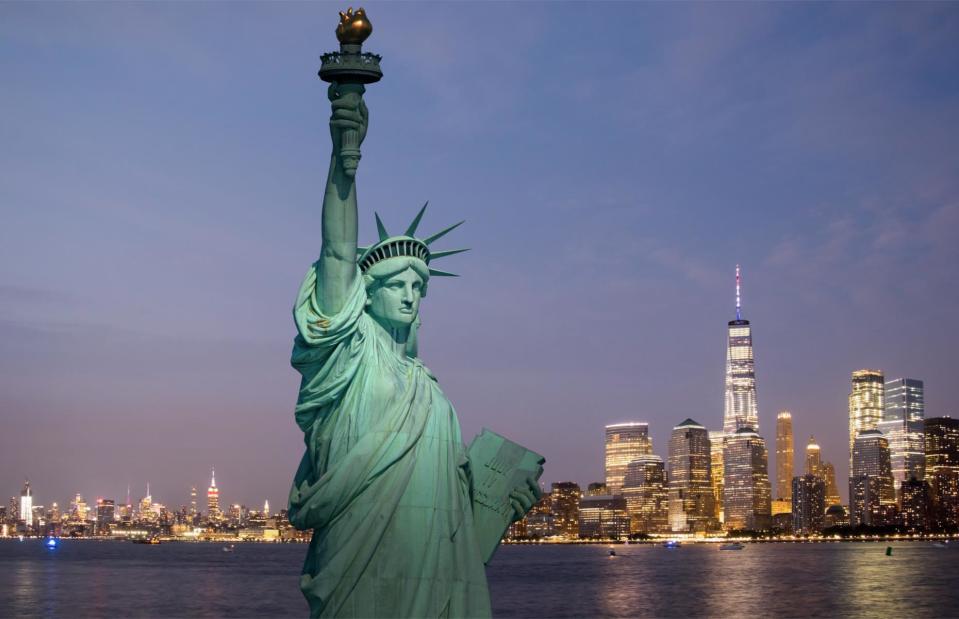
gary718/Shutterstock
A symbol of freedom and a beacon of hope, the colossal torch-bearing figure that looms over New York Harbor is one of the world's most recognised statues. The copper structure was designed by sculptor Frédéric Auguste Bartholdi and built by Gustave Eiffel as a gift to the United States from the people of France in 1886. Representing the Roman goddess Libertas, she holds a torch and a tablet inscribed with the date of the American Declaration of Independence.
Statue of Liberty, New York City, New York, USA

Matej Hudovernik/Shutterstock
One of the New Wonders of the World, the Statue of Liberty is a striking feature on Manhattan's mesmerising skyline, standing tall at over 305 feet (93m). It is usually visited by around 3.5 million people every year. Most sightseers take a ferry to Liberty Island to do a tour and climb the 354 steps to the statue's summit for sensational city views. You could save your dollars and hop on the free Staten Island Ferry for brilliant views of the Neoclassical statue with Manhattan as a backdrop.
Kyoto, Japan
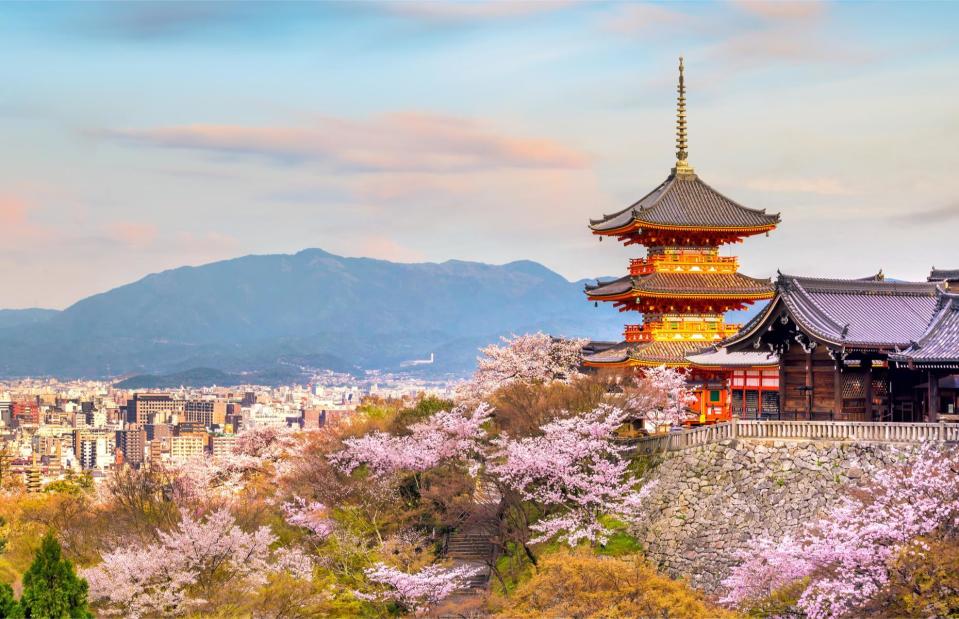
f11photo/Shutterstock
Japan's ancient capital, Kyoto, is a seriously stunning place to discover Japan's rich history and witness age-old traditions that still endure. A city of ornate temples, sacred shrines, well-preserved historic neighbourhoods and classical gardens, it's home to some of the country's best cultural gems. It's especially alluring during the cherry blossom season in spring and when the autumn leaves blaze.
Kyoto, Japan
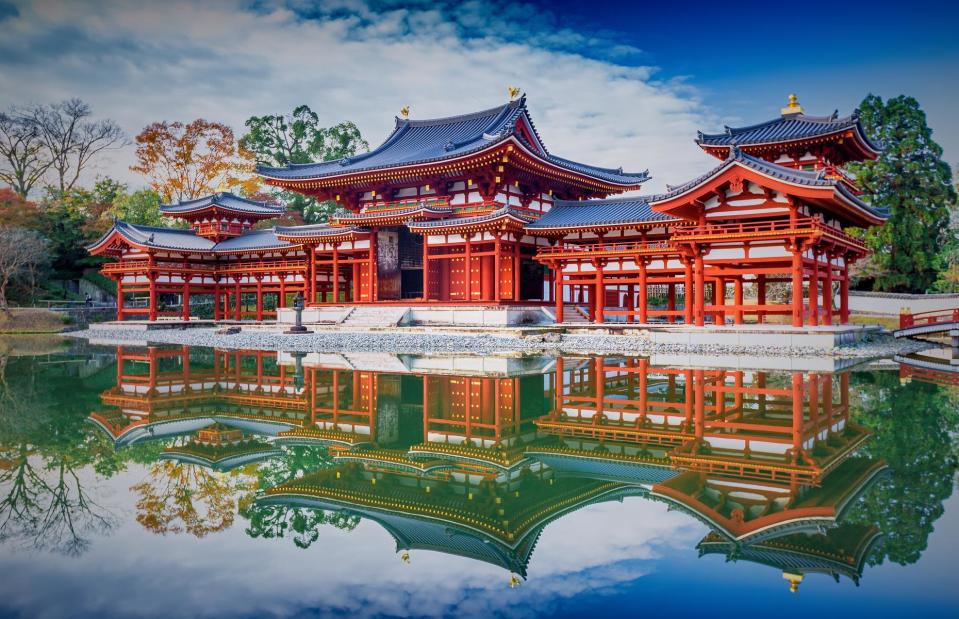
Bule Sky Studio/Shutterstock
The former ancient capital of Japan has myriad attractions but among its most well-known sights are 11th-century Byodo-in Temple (pictured), the golden Kinkakuji Temple, the 1,300-year-old shrine Fushimi Inari Taisha and the famous bamboo groves of riverside district Arashiyama. Visit the gorgeous Gion district, famous for geisha and its traditional machiya (townhouse). Be sure to go for a nocturnal wander along the narrow lantern-lit laneways of Pontochoa too.
Bagan, Myanmar
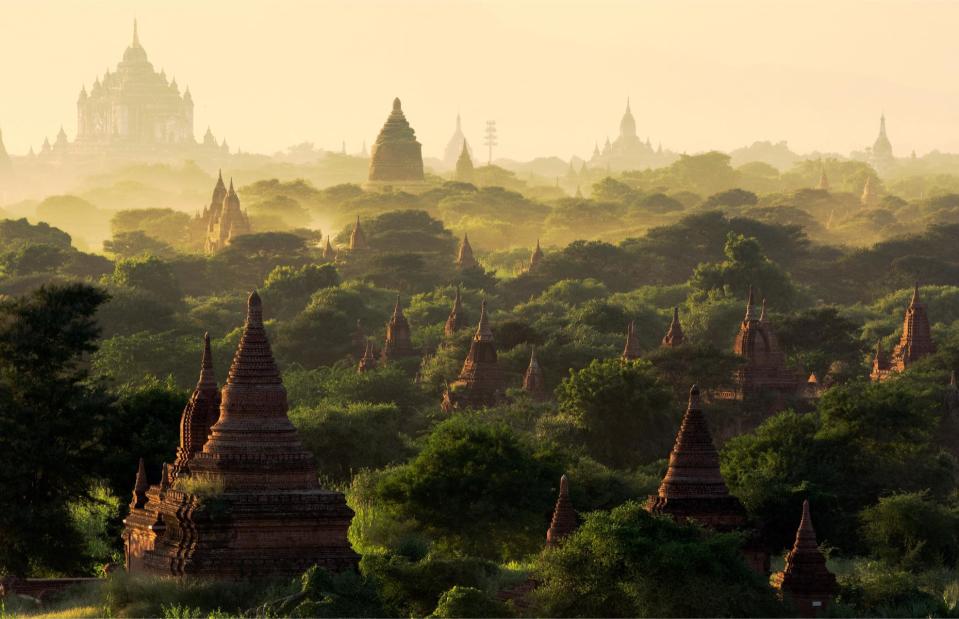
Sai Kyaw Khaing/Shutterstock
The ancient city of Bagan has an otherworldly beauty and history. An incredible number of temples, palaces, pagodas and monasteries lie cheek-by-jowl along the Irrawaddy River. In fact, Bagan has the most concentrated area of Buddhist religious structures in the world and each one has its own unique charm and history.
Bagan, Myanmar
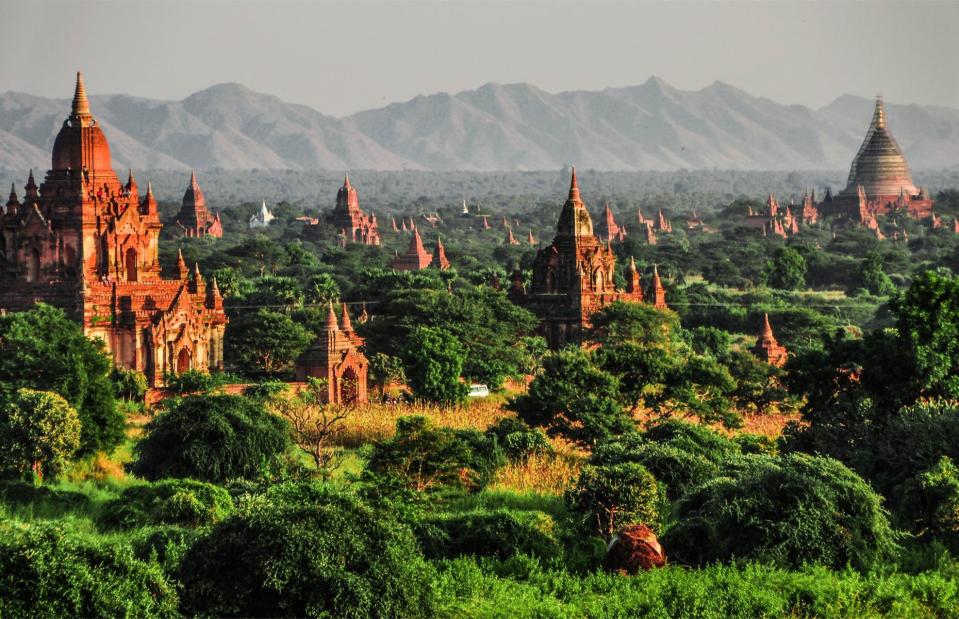
Jessica lim/Shutterstock
While it's beautiful throughout the day, the sight of the stone spires of Bagan glowing as the sun rises and sets is incredibly moving. Drifting over the fertile plains of the Irrawaddy Delta on a hot air balloon is a particularly magical way to see and appreciate the scale of the site. On the ground, Gawdawpalin Temple, Dhammayangyi Temple and Ananda Pahto are among the largest and best preserved. Currently though, the FCDO and the US State Department advise against all but essential travel to Myanmar.
Angel Falls, Venezuela

Vadim Petrakov/Shutterstock
At 3,212 feet (979m), these plunging waters in the east of Venezuela make up the highest uninterrupted waterfall in the world. The astonishing sight is one of many within the equally arresting Canaima National Park, a vast expanse of untamed jungle that's characterised by distinctive table-top mountains and crashing waterfalls.
Angel Falls, Venezuela

Douglas Olivares/Shutterstock
The remote location of the Angel Falls only adds to its wonder. Unless you're up for an intrepid jungle expedition, the only way to see the torrent is by taking a flight over the top or by joining a guided boat ride up the Churun river to gaze up at their magnitude from below. Either option is equally incredible. To see the thundering spectacle in its prime, visit during the wet season – May to November – when the falls and river are at their most voluminous.
Terracotta Warriors, Xi'an, China
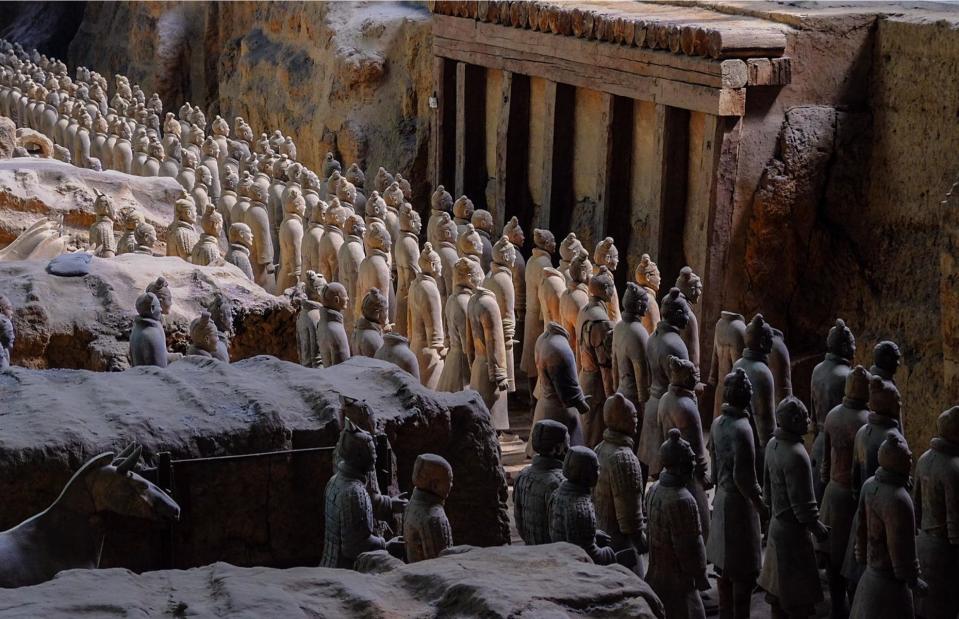
Foto Man/Shutterstock
The enigmatic army of 2,200-year-old terracotta figures are China's greatest archaeological treasures and one of the country's most astounding sights. The 8,000 life-size soldiers and horses were discovered in 1974, lying buried in vast underground chambers near the tomb of the first emperor of China, Qin Shi Huang. They were built in 210 BC to guard the emperor's sprawling mausoleum, which is the biggest burial site on Earth.
Terracotta Warriors, Xi'an, China
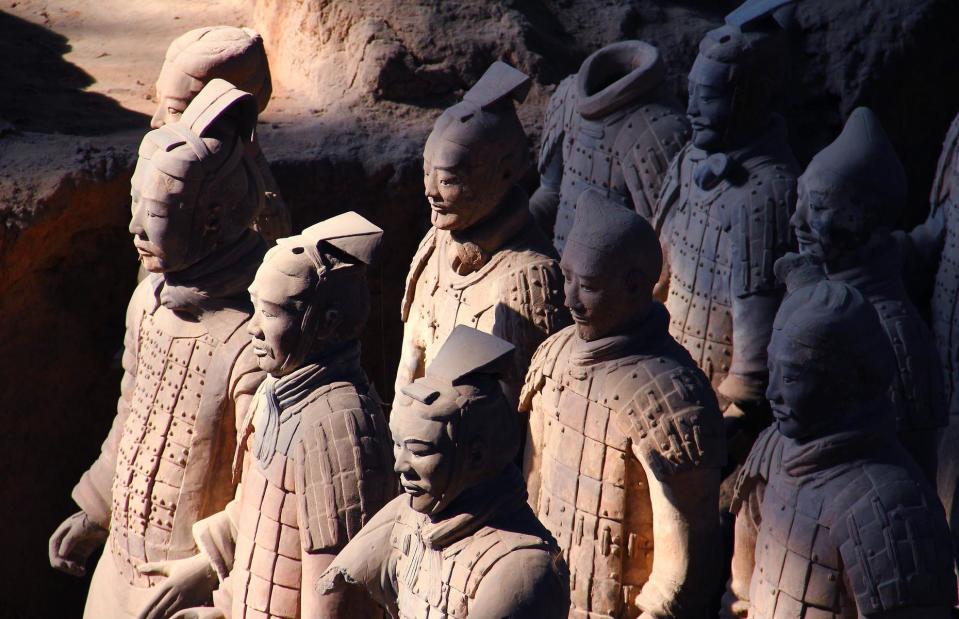
panitan jaroenjai/Shutterstock
Just on the outskirts of Xi'an, the model army is made out of fired clay. The figures are strikingly lifelike and each one highly individual. It's thought that each warrior looks like the workman who created him. Be sure to explore the complex with a knowledgeable guide to get the most out of a visit to this vast, busy and at times overwhelming site.
Grand Canyon, Arizona, USA
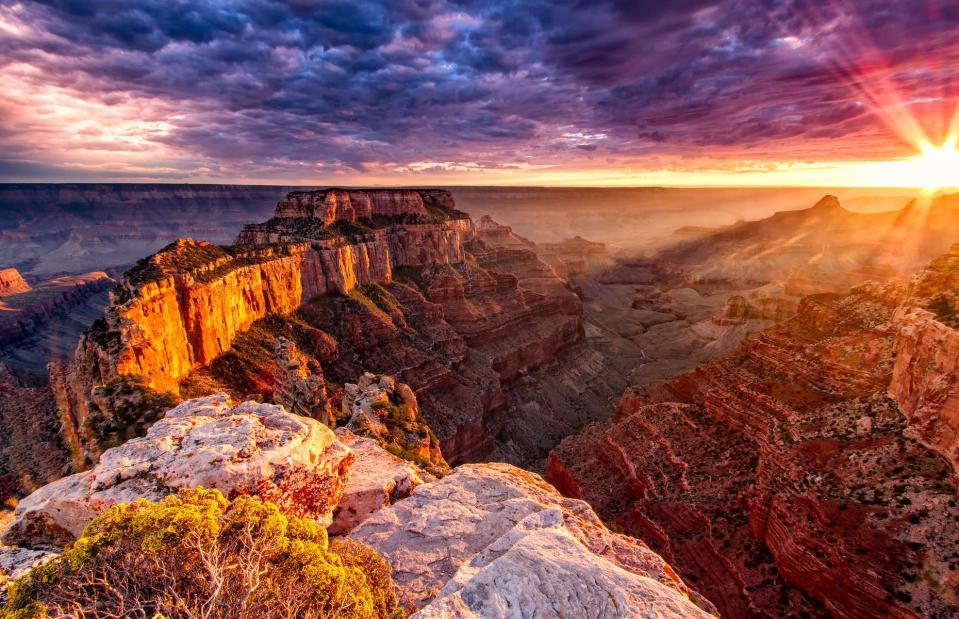
Erik Harrison/Shutterstock
There's a good reason that 5.97 million people visited this cavernous multicoloured canyon in Arizona in 2019. The gaping chasm is one of nature's truly epic sights. Carved out by the Colorado River over millions of years, the Grand Canyon measures 277 miles (446km) in length and reaches widths of up to 18 miles (29km).
Grand Canyon, Arizona, USA
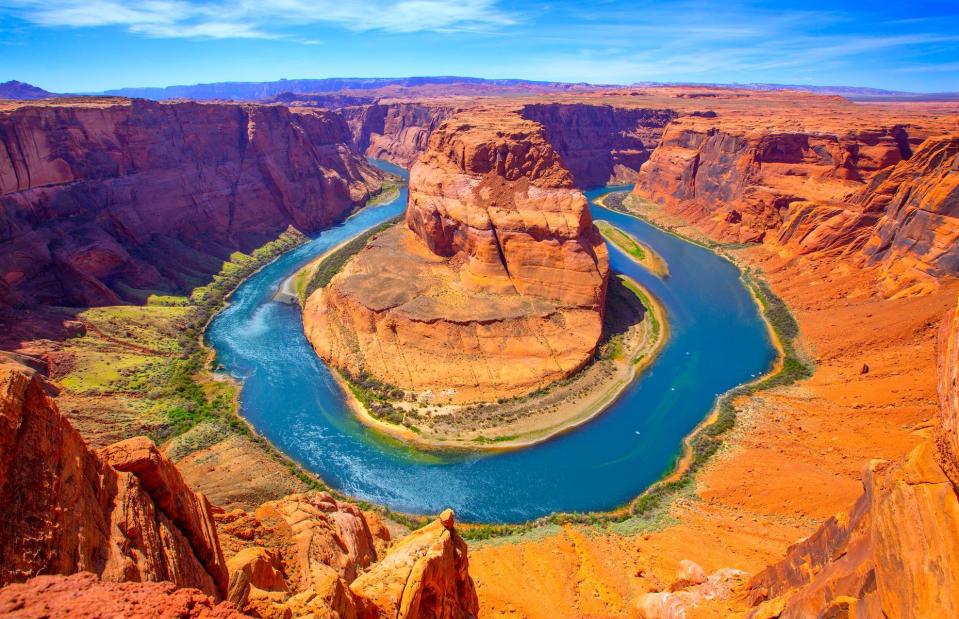
Tono Balaguer/Shutterstock
Gazing down at the mighty Colorado River from the canyon's towering multi-layered cliffs or from the air is quite an experience. So too is ogling upwards as you travel by raft along this imposing section of the river. Keen hikers can follow the 23-mile (37m) Rim-to-Rim trail from the quieter north rim to the south to truly immerse themselves in the splendours of North America's greatest natural wonder. However you explore it, visit outside of the summer months to avoid the deadly heat.
Moai, Easter Island, Chile

Olga Danylenko/Shutterstock
Far-flung Easter Island – one of the remotest inhabited islands on Earth – is a remarkable place, made even more so by its mysterious moai. These giant stone-carved heads and torsos stand stoically on sites around the volcanic island. It's widely thought they were carved by the Rapa Nui people in deference to important ancestors. Nearly 900 moai were carved and erected across the island between the 11th and 14th centuries.
Moai, Easter Island, Chile
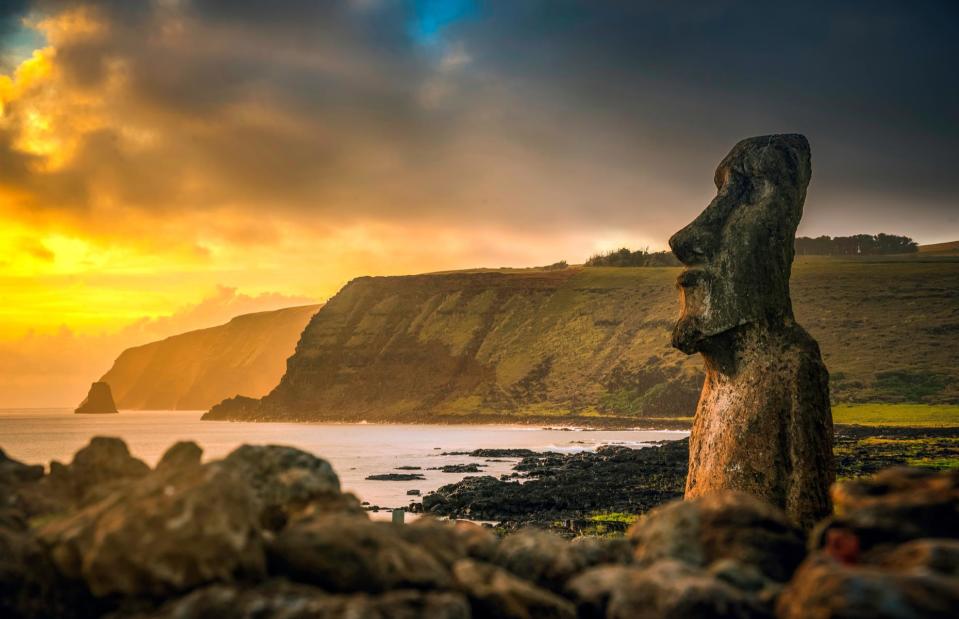
MarcvanKessel.com/Shutterstock
Join guided treks by locals around the many archaeological sites to learn about the islanders' far-reaching culture and traditions. The towering moai that loom above Anakena Beach are spectacular, as is the Rano Raraku quarry. The volcanic crater was where the stones were sourced for almost all of the moai and hundreds of statues, in various stages of completion, remain. The Father Sebastián Englert Anthropological Museum is also a must-see to learn more about this intriguing civilisation.
The Great Temple at Abu Simbel, Egypt

Anton_Ivanov/Shutterstock
Painstakingly chipped into a mountainside, this imposing temple was completed in 1265 BC to commemorate the victory of Ramesses II and his queen Nefertari in the Battle of Kadesh. Set in the deep south of Egypt, near the border with Sudan, it is most famous for its 65-foot-tall (20m) depictions of the powerful pharaoh. The gigantic leader sits sternly on his throne and flanks the entrance to the Great Temple.
The Great Temple at Abu Simbel, Egypt
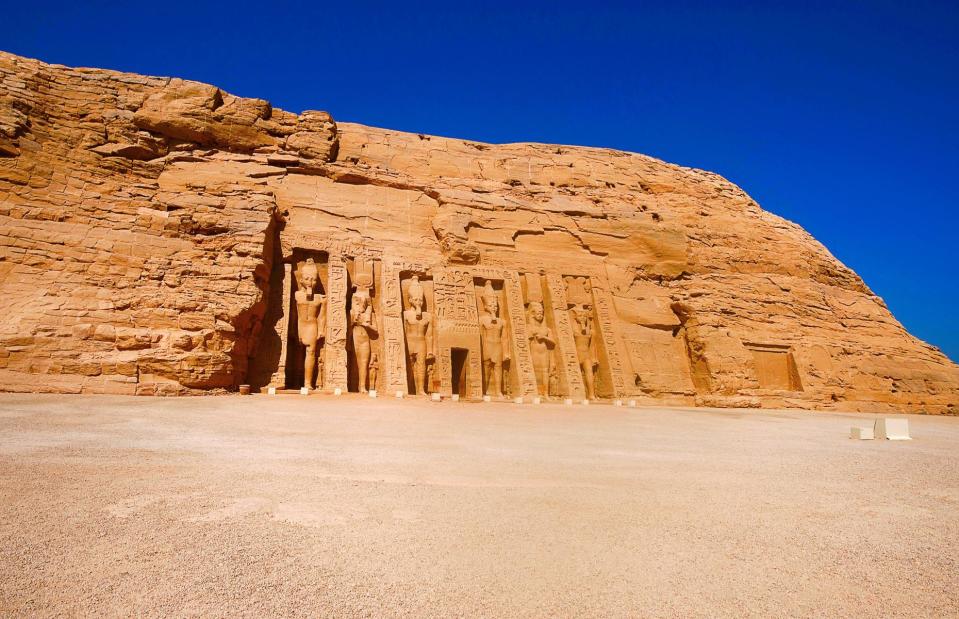
RealityImages/Shutterstock
The mighty rock-hewn temple lay forgotten until it was rediscovered by Swiss traveller Johann Ludwig Burckhardt in 1813. Incredibly, the Great Temple and a smaller one dedicated to the queen were meticulously dismantled and moved to higher ground in the 1960s to save them from flooding after the Aswan High Dam was built. Due to its remote location and low visitor numbers in Egypt, those who venture out there can absorb the majesty of the monument in relative peace.
Uluru, Northern Territory, Australia

bmphotographer/Shutterstock
The imposing beauty and spiritual significance of this mammoth monolith, which thrusts out of the red dirt in the desolate centre of Australia, is unnerving. Surrounded by the Red Centre's untamed wilderness as far as the eye can see, there's something truly primeval about the ancient sandstone boulder. It's a hugely sacred site for Anangu Aboriginals – the custodians of the land – and one of the Seven Natural Wonders of the World.
Uluru, Northern Territory, Australia
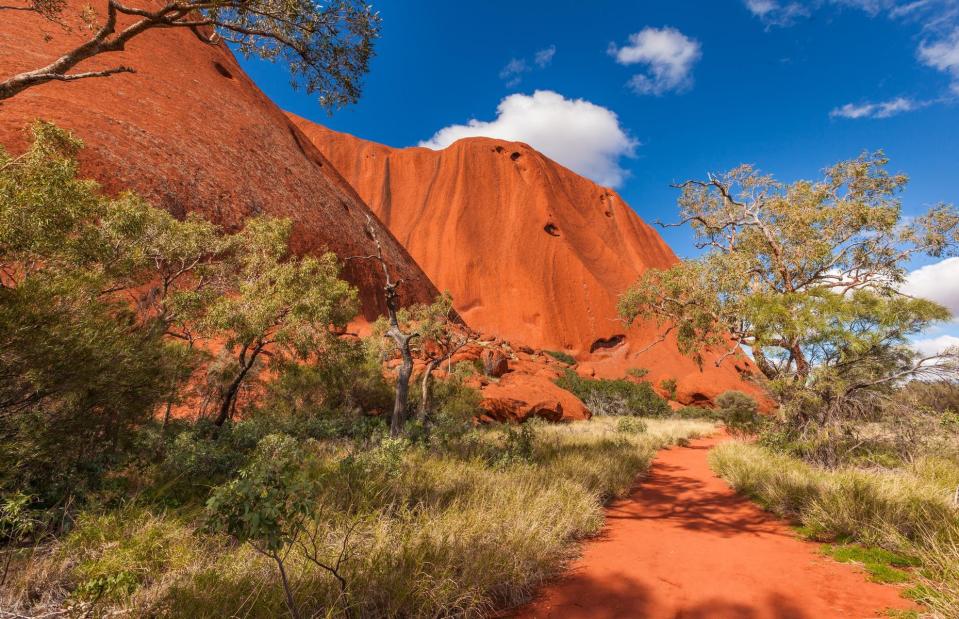
Maurizio De Mattei/Shutterstock
Climbing the rock is now forbidden due to its spiritual significance but visitors can get a sense of its extraordinary beauty and energy by following the dirt track that circumnavigates its base. Pack plenty of water for the three-and-half-hour hike. If budget allows, take to the skies on a helicopter tour to take in Uluru's scale from above, and that of the vast national park that surrounds it. You'll also get to swoop over the wondrous soaring rock domes of nearby Kata Tjuta.
Ngorongoro Crater, Tanzania
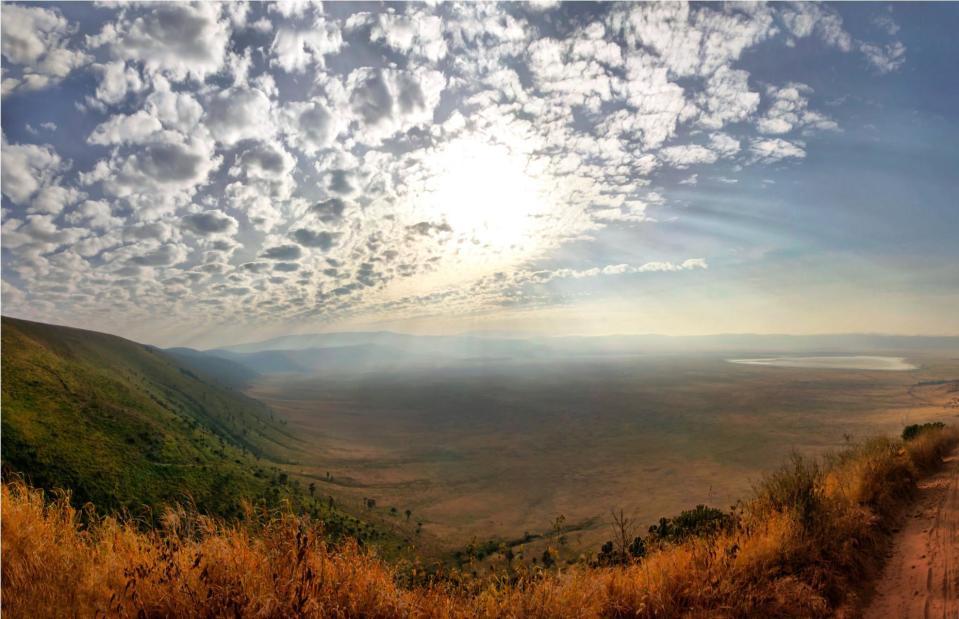
tr3gin/Shutterstock
This vast and ancient volcanic caldera in Tanzania's stunning Crater Highlands region is a spectacular sight. It's the world's largest inactive, intact and unfilled caldera. Surrounded by steep escarpment walls, the vast grasslands below are home to an extraordinary range of fauna and flora. Set within the Ngorongoro Conservation Area, it was declared a UNESCO World Heritage Site for having one of Africa's richest and diverse concentration of mammals.
Ngorongoro Crater, Tanzania

Travel Stock/Shutterstock
Head off on a game drive around the remarkable sunken landscape, whose grasslands cover around 100 square miles (259sq km), to feel the power of nature. You'll likely to encounter some of its inhabitants – all of the Big Five live here and lots more besides. It's the best place in Tanzania to see the critically endangered black rhino and vibrant-hued flamingos on the waters of Lake Magadi is one of many unforgettable scenes.
Table Mountain, Cape Town, South Africa
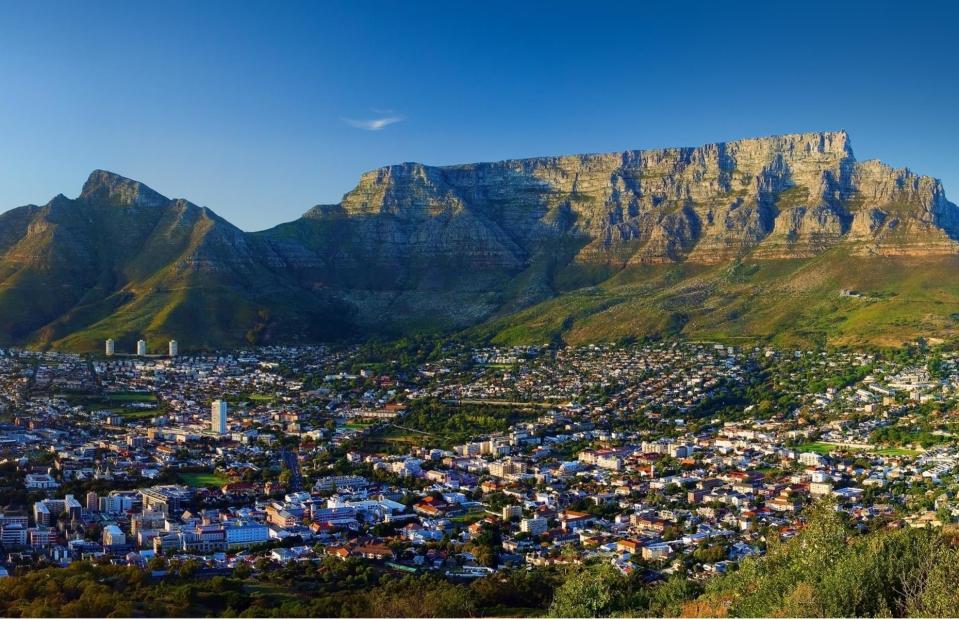
sculpies/Shutterstock
South Africa's flat-topped mountain is one of the most famous and admired peaks in the world. It's also one of the most ancient at over 260 million years old. Now part of a national park, it is home to an incredible array of flora and fauna, including endemic species such as the Table Mountain ghost frog and a whopping 1,470 flower species.
Table Mountain, Cape Town, South Africa

Denis Mironov/Shutterstock
The landmark that towers over Cape Town and sits at the tip of Africa is considered one of the Seven Natural Wonders of the World. Discover why by following one of the 350 hiking trails to get up close to this incredible landform and its bounty of botanical sights. Make it up to summit for the most awe-inspiring views of Cape Town, its beautiful bays and the Atlantic Ocean. You can catch the cable car up or hike it.
Sagrada Família, Barcelona, Spain
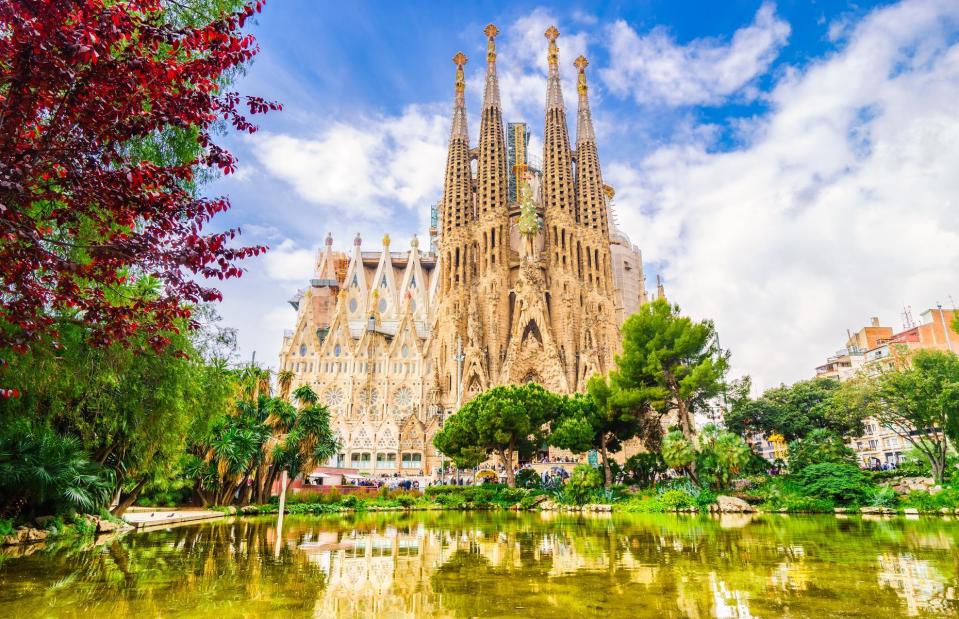
Pajor Pawel/Shutterstock
This towering Gothic basilica in Barcelona has become a symbol of the avant-garde city. The Sagrada Família is one of many architectural gems in the city but it's the most mesmerising and intriguing. Antoni Gaudí began work on his masterpiece in 1882 and though it was hoped it would finally be completed in 2026, the centenary of his death, the pandemic has pushed this date back once again.
Sagrada Família, Barcelona, Spain

Marco Rubino/Shutterstock
The unfinished masterpiece of the famed Catalan architect is Barcelona's most-visited tourist site, so expect huge queues. Buy tickets in advance and opt for fast track to speed things up. Gaudí oversaw the intricate cathedral's construction until June 1926, when he was hit by a tram and died. He was buried in a chapel in the Sagrada Família's crypt.
Christ the Redeemer, Rio de Janeiro, Brazil
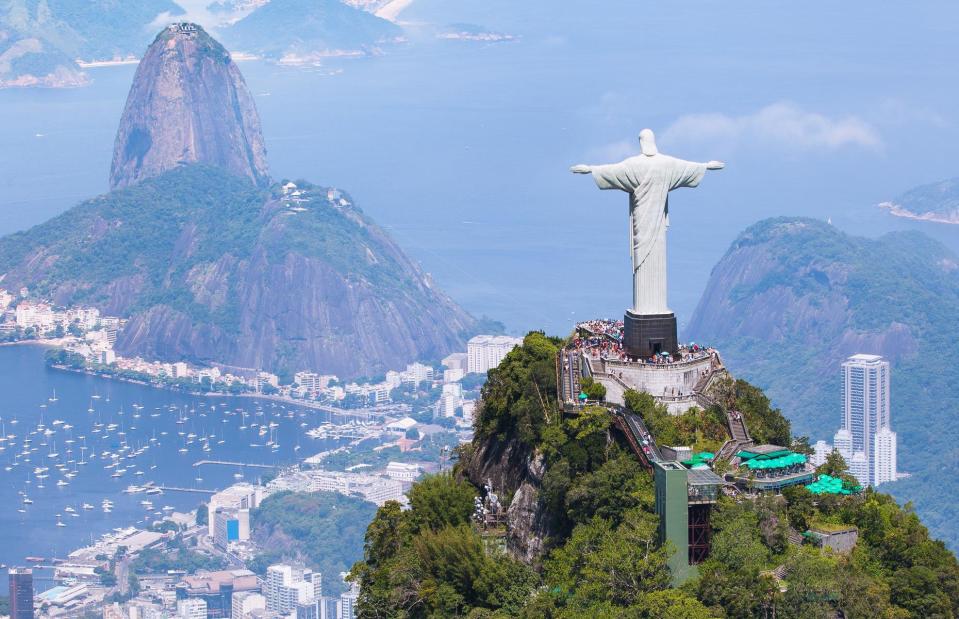
dmitry_islentev/Shutterstock
Whether you're religious or not, the sight of 98-foot-tall (30m) Jesus Christ rising above Rio de Janeiro's magical mountainous landscape with outstretched arms can't fail to stir you. The largest Art Deco statue in the world, the iconic monument was the brainchild of a priest in the 1850s but wasn't built until the 1920s. Dedicated in 1931, the concrete Christ has surveyed the city from the top of the forest-clad Corcovado mountain ever since.
Christ the Redeemer, Rio de Janeiro, Brazil

Curioso/Shutterstock
The commanding landmark has become a symbol of Brazil and is one of its most-visited sights. Catch the tram or taxi up to climb the stairs and soak in the monument along with the heavenly views. Don't expect a contemplative moment though, the viewing platform is always heaving with visitors. Another fantastic spot to admire it in all its glory is from the summit of Sugarloaf Mountain.
Chichén Itzá, Yucatán, Mexico
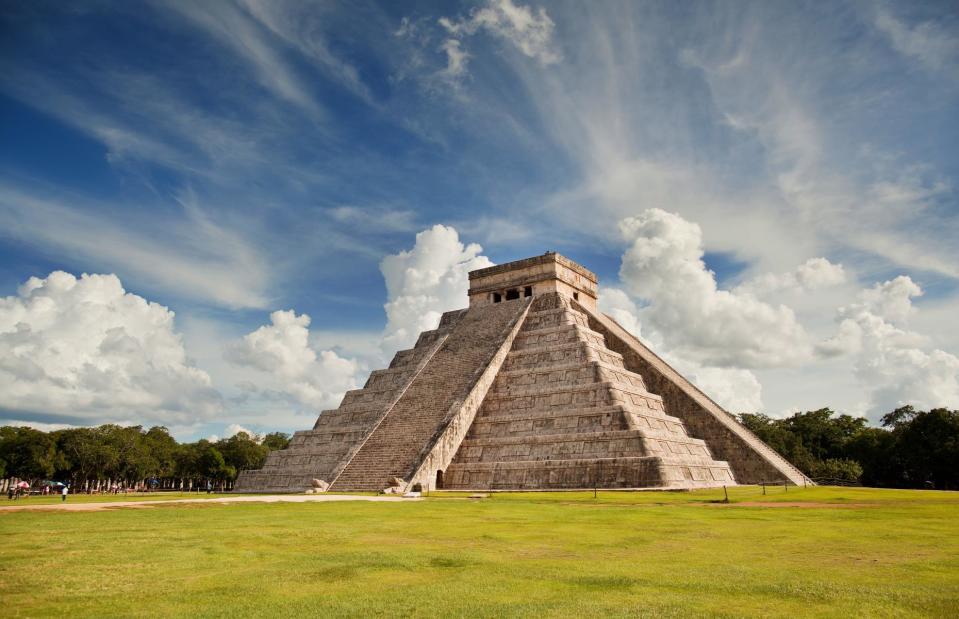
Ariena/Shutterstock
The mysterious Mayan site of Chichén Itzá was central to the ancient civilisation between AD 750 and 1200. The rich and intricate complex of stepped pyramids, temples, columned arcades and other stone structures is understandably the most popular tourist destination on Mexico's Yucatán Peninsula, and one of the Seven New Wonders of the World. It provides many clues into the country's fascinating past.
Chichén Itzá, Yucatán, Mexico

John_Walker/Shutterstock
The most iconic structure in the archaeological complex is the magnificent 78-foot-high (24m) Temple of Kukulkan, also known as El Castillo. It was created as a physical calendar with 365 steps – one for each day of the year. It aligns with the sun so perfectly that on the spring and summer equinox, a shadow creates the illusion of a serpent slithering down the steps. If you can't visit for this, stick around any evening to see the spectacular ancient ruins dramatised by a 30-minute sound-and-light show.
Lake Baikal, Siberia, Russia
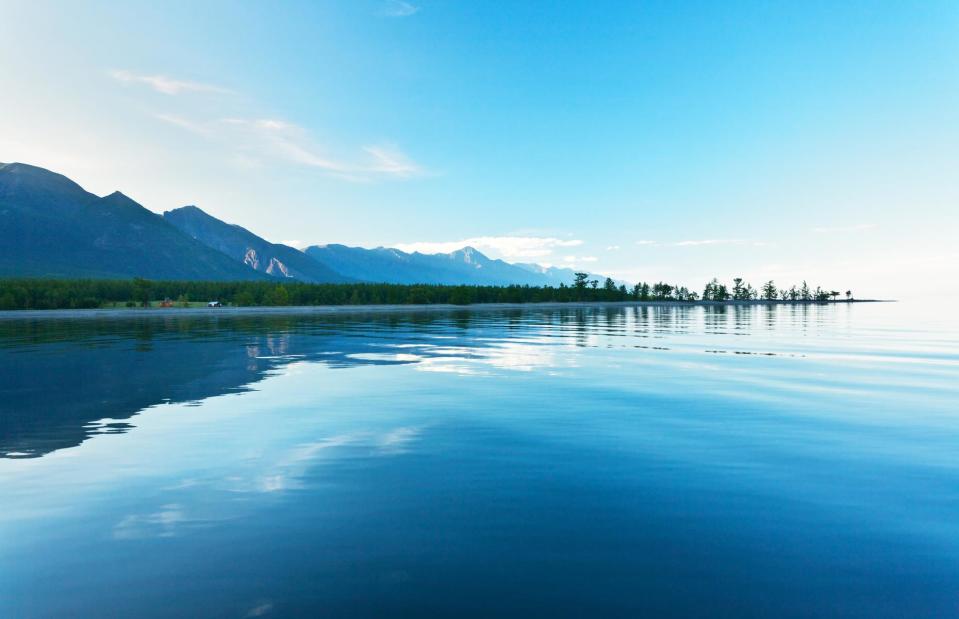
Katvic/Shutterstock
The deepest lake in the world and one of the clearest too, Lake Baikal in the depths of Siberia is a place that compels superlatives. Known as the pearl of Siberia, its icy waters plunge down an astonishing 5,387 feet (1,642m) into the earth. It's bigger by volume than all the Great Lakes of America combined. You could stack three Empire State Buildings on top of the other and still not reach the surface. Its mysterious waters are also home to creatures that can't be found anywhere else on the planet.
Lake Baikal, Siberia, Russia
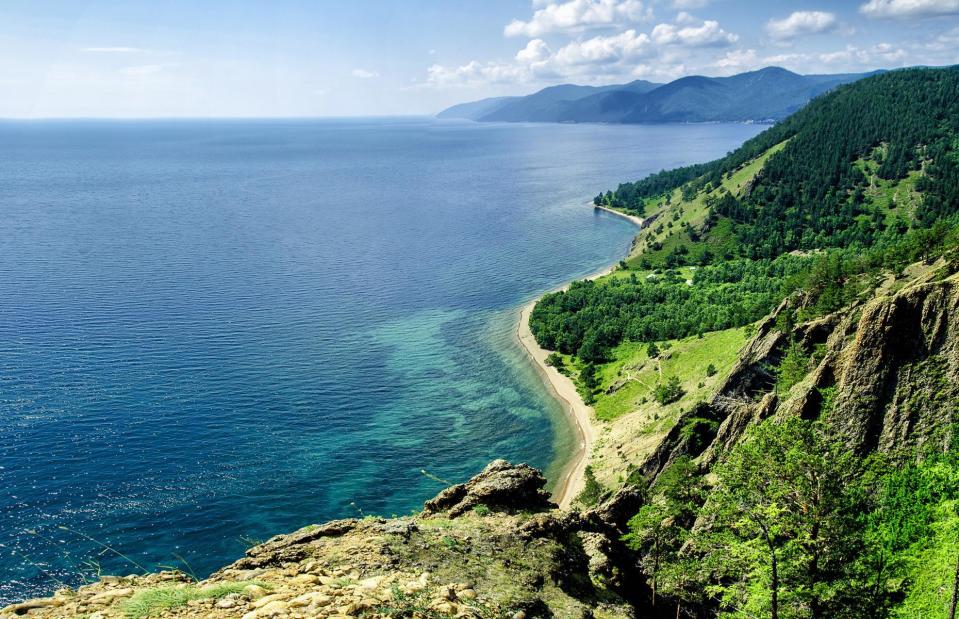
Julia Kuzenkova/Shutterstock
Whether you gaze on its glistening waters in the summer or see its expanse freeze solid in winter, there's no denying the otherworldly beauty of this immense body of water. There are several hiking paths to follow around its shores and various beaches where you can brave the chilly waters for a swim (it freezes from December to April each year). Local legend has it that a dip in the ancient lake will lengthen your life.
Venice, Italy
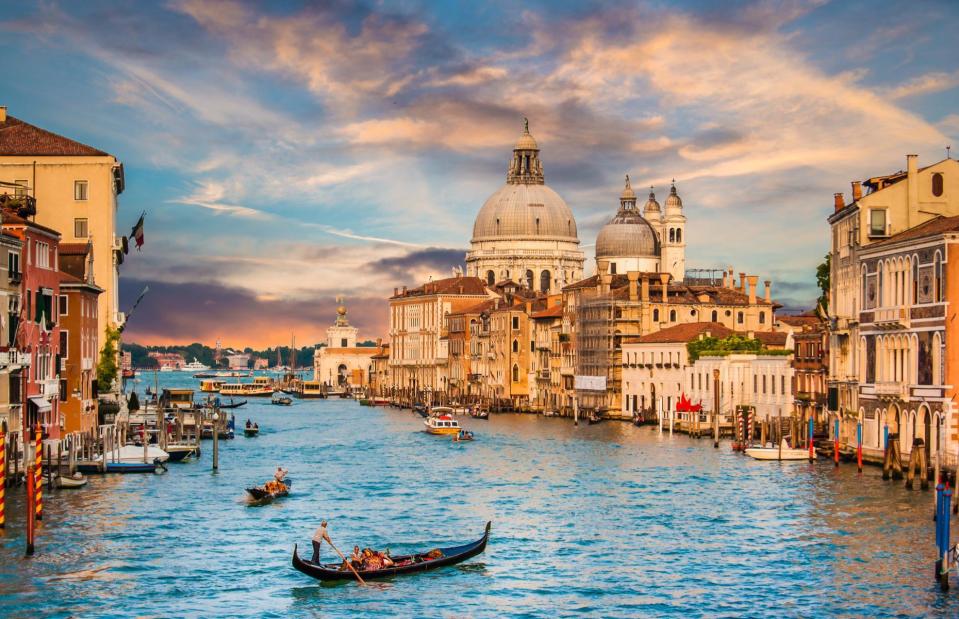
canadastock/Shutterstock
There's nowhere in the world quite like Venice. This dreamy historic city – built on a hundred islands across a lagoon – has captivated travellers for centuries. Losing yourself in this most romantic of enclaves to discover its picturesque waterways, ornate architecture, cobbled alleys, elegant piazzas and elaborate bridges is an absolute must.
Venice, Italy
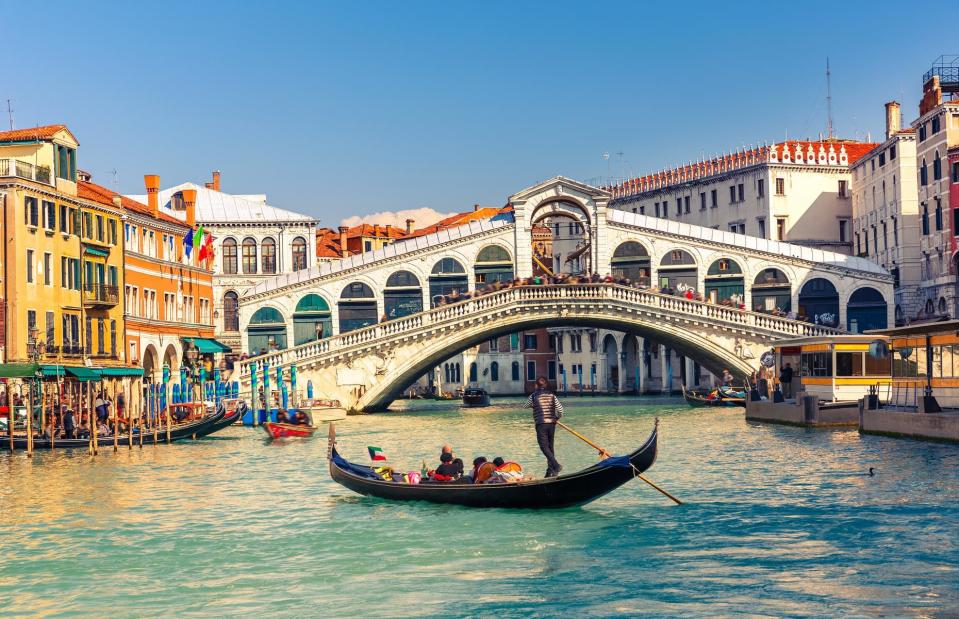
S.Borisov/Shutterstock
The enchanting city is stuffed with architectural wonders including the Doge's Palace, St Mark's Square and countless exquisite churches and palaces. Each one is bursting with priceless artistic gems. Despite feeling as if you've strolled into a Canaletto painting, Venice is a real and vibrant city that retains a distinct Venetian culture and strong traditions. It doesn't take much to wander off the beaten track and get away from the hordes.
Angkor Archaeological Park, Siem Reap, Cambodia
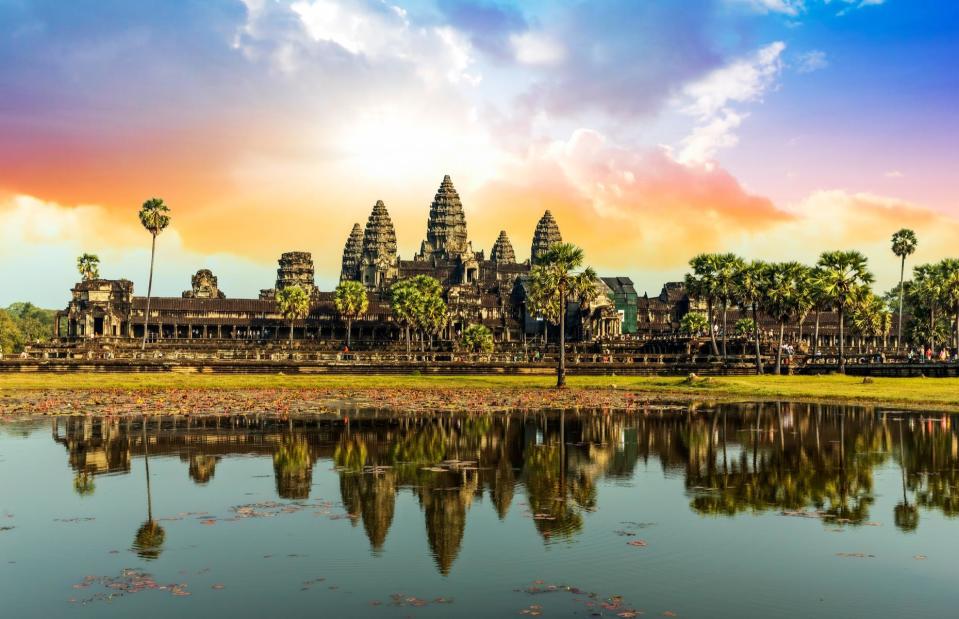
Posztos/Shutterstock
Cambodia's famous lost jungle city is among the most incredible and largest archaeological sites on Earth. The majestic temples and monuments of Angkor were built between the 9th and 14th centuries, when the Khmer civilisation was at the height of its power. The largest and most famous temple in the sprawling complex is the breathtaking Angkor Wat. Go at sunrise to see the temple's silhouette mirrored in the still waters of the reflection pools. It's pure magic.
Angkor Archaeological Park, Siem Reap, Cambodia
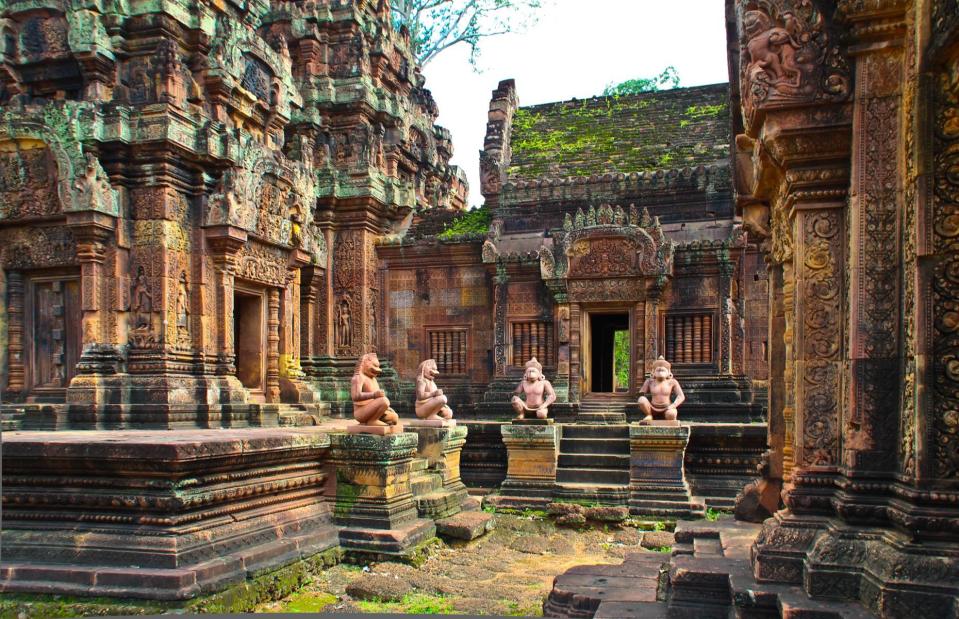
Ginger Wang/Shutterstock
As well as Angkor Wat, the beautiful Bayon temple and evocative jungle-strangled Ta Prohm are must-sees. Exploring the tumbled ruins of these ancient structures of the Khmer Empire may no longer be an intrepid experience, as tourists flood in once more, but it's still an incredible place. It is possible to lose the crowds by enlisting a good local guide who'll take you to some picturesque but peaceful spots.
Patagonia, Argentina and Chile
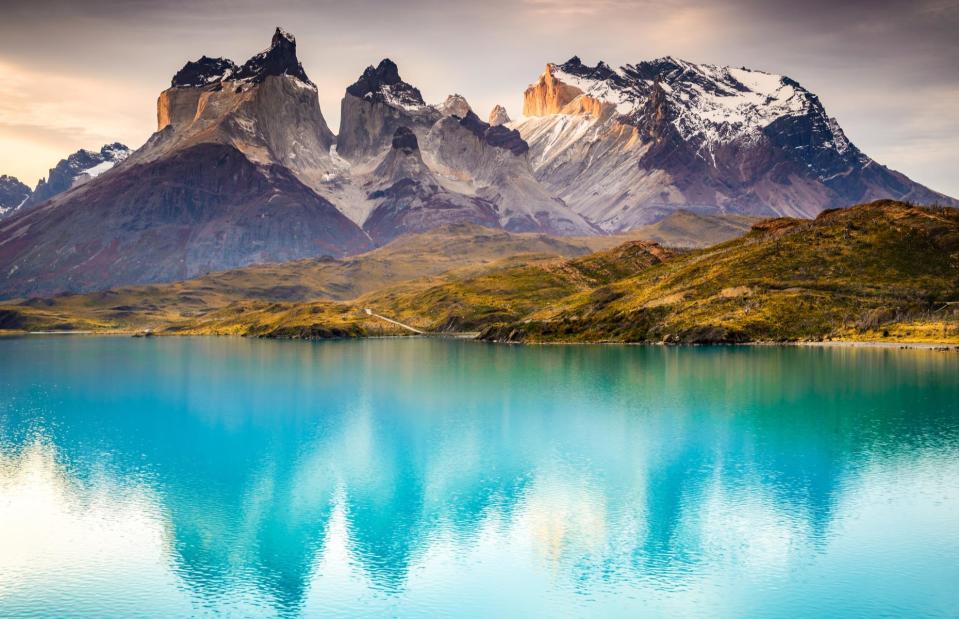
Danny Ecker/Shutterstock
A rugged landscape of jagged peaks, shimmering lakes, ancient forests and vast glaciers, Patagonia is a region that captures the imagination and has an irresistible appeal for adventurers. The three sharp granite towers that rise bewitchingly 6,000 feet (1,829m) above sea level are one of the vast national park's most striking landmarks. Known as Torres del Paine, they formed over 12 million years ago.
Patagonia, Argentina and Chile
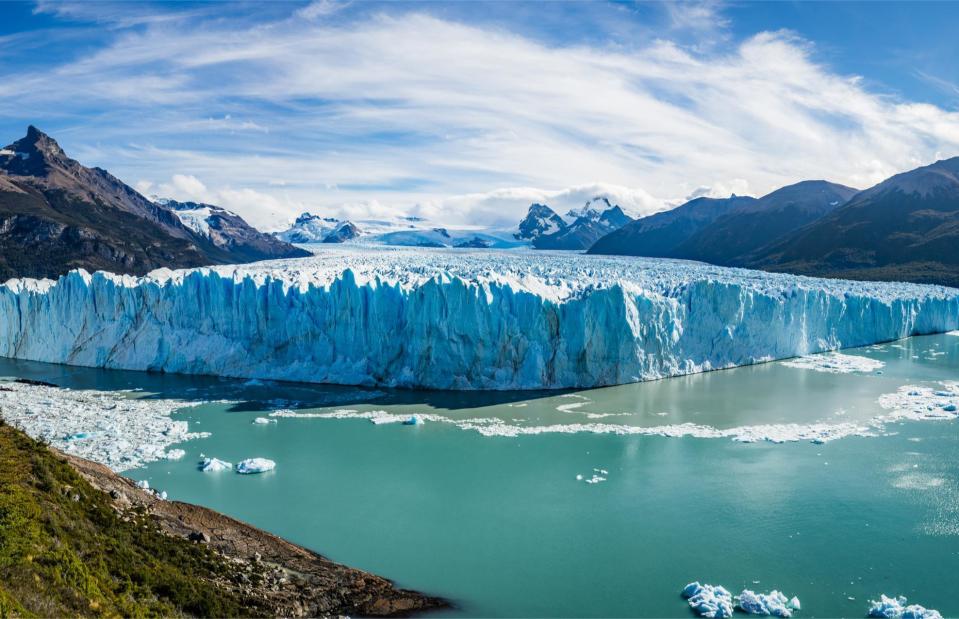
cge2010/Shutterstock
To discover the majesty of this wild part of the world, you'll need a good few weeks at least. Start in Chile's Torres del Paine National Park to admire the Torres and Lake Pehoé on a hike. You could tackle the famous W Trek or take on more manageable bite-sized chunks. Cross the border into Argentina's part of Patagonia and end an incredible adventure by exploring the extraordinary Perito Moreno glacier.
Pompeii, Italy
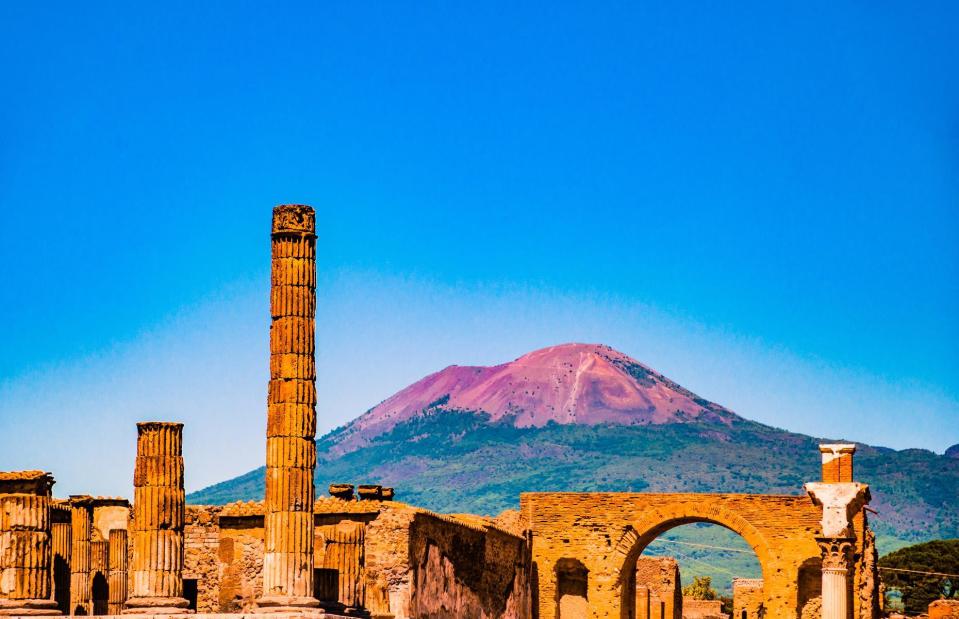
Romas_Photo/Shutterstock
This world wonder was lost for almost 1,700 years after Mount Vesuvius erupted in AD 79 and its deathly debris engulfed the Roman city and its ill-fated inhabitants. Pompeii, near the modern-day city of Naples, is arguably the most significant Roman ruin in the world and a truly remarkable place to wander around. It's absolutely up there when it comes to must-see-in-your-lifetime sights.
Pompeii, Italy

Libor Píška/Shutterstock
You can really sense what life must have been like in the 1st century AD as you tread along the city's excavated streets and step into its amazingly preserved villas, workshops and amphitheatre. The well-preserved colourful frescoes are astounding too. One of the most poignant places is the Garden of the Fugitives, where you can see plaster reproductions of 13 Pompeiians and a dog whose bodies were entombed in mud and ash until the excavations in the 1800s.
Old Jerusalem

PhotostockAR/Shutterstock
With some of the world's most revered monuments of faith and significant archaeological treasures, Jerusalem astonishes at every turn. It is one of the oldest continually inhabited metropolises in the world and hugely sacred to three of the world's great religions. Among its most important sights are the Dome of the Rock, the Western Wall and the Church of the Holy Sepulchre.
Old Jerusalem
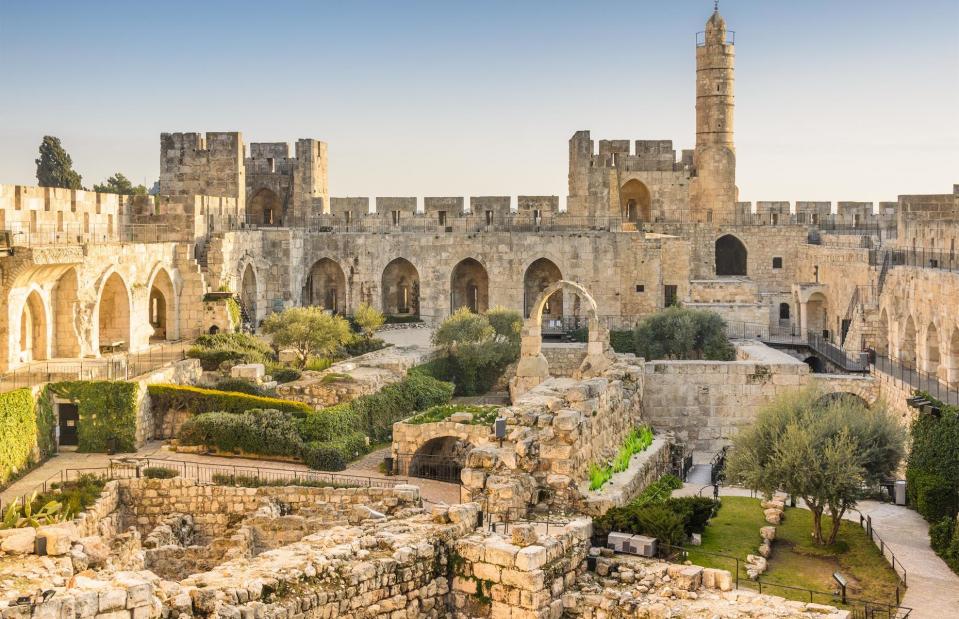
Sean Pavone/Shutterstock
The city is a wonderful place to roam around and simply marvel at its centuries-old buildings and streets. The Tower of David citadel (pictured) was first used as a palace of Herod the Great and now holds the fascinating Museum of the History of Jerusalem. Other must-sees are the City of David, the oldest part of this ancient city and an incredible archaeological complex. Be sure to visit the vast Israel Museum too and be wowed by its remarkable collection of cultural treasures.
Mount Everest, Nepal
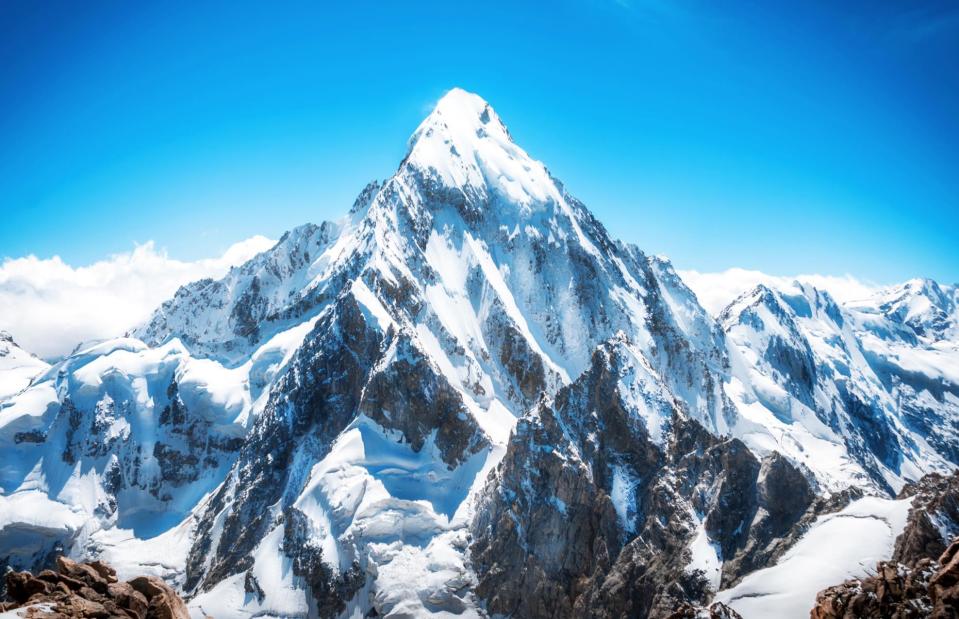
Vixit/Shutterstock
One of the Seven Natural Wonders of the World, the stature and hostile beauty of the planet's most iconic mountain is bewitching. Everest has become a pinnacle of human endurance, luring people to attempt to conquer its treacherous slopes every year. The highest mountain in the world, it is over 60 million years old.
Mount Everest, Nepal
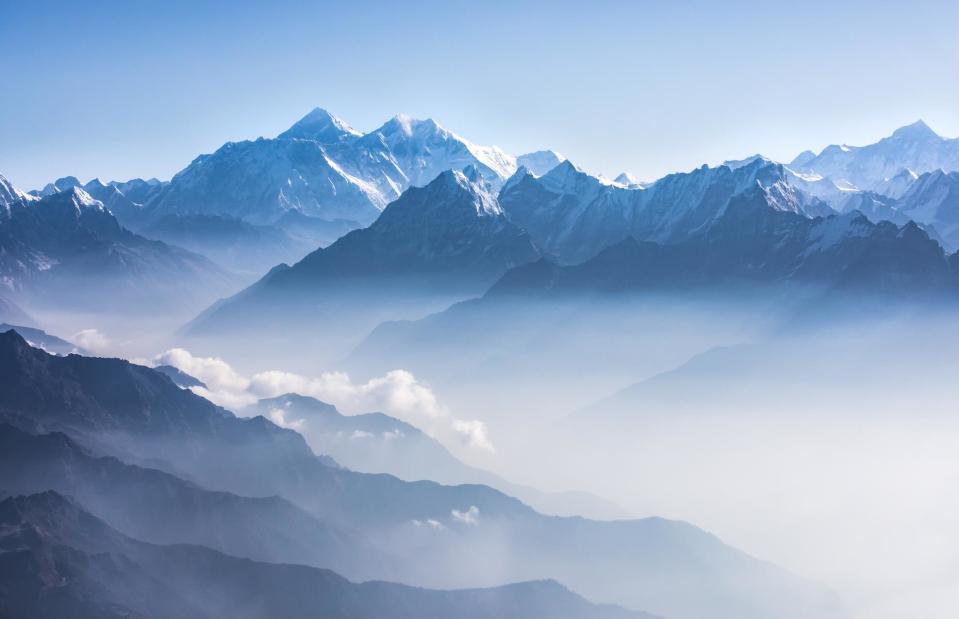
Kertu/Shutterstock
You don't need to conquer this giant of nature to appreciate its wondrous beauty. There are numerous easy treks around the Everest region where you can gaze on the ancient landform and discover more of Nepal's incredible natural assets. Visit in March or April when blooming rhododendron trees blaze across the foothills too.
Great Wall of China, China
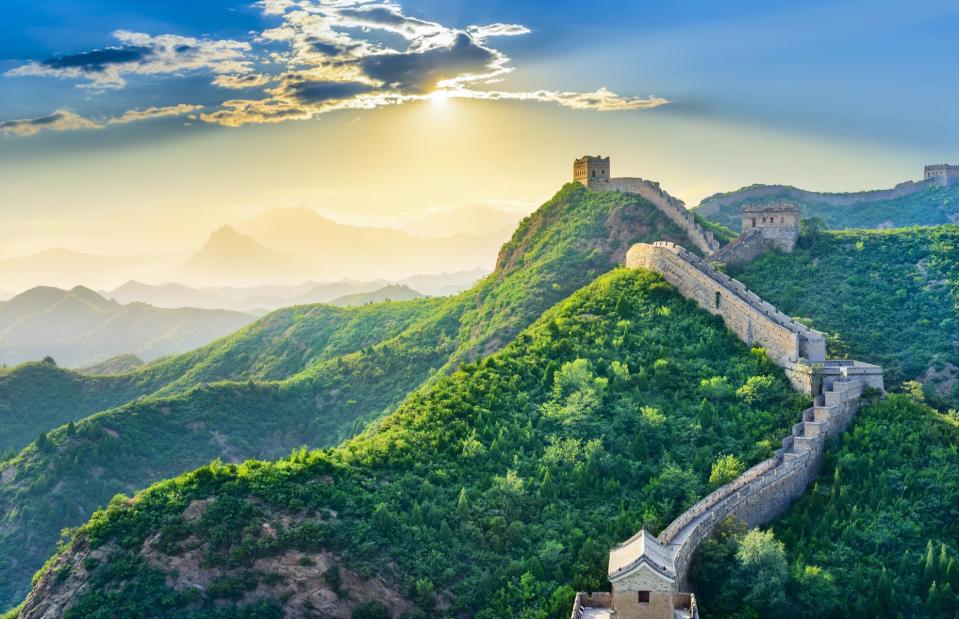
aphotostory/Shutterstock
A magnificent feat of construction, the Great Wall winds for thousands of miles in sections from Shanhaiguan on China's east coast to Jiayuguan in the west. While it's nonsense that it can be seen from space, its scale is extraordinary. Most of the wall that still exists today was built during the Ming dynasty, when watchtowers and fortresses were added to strengthen its defence. Some of its best-preserved sections can be found snaking across hilltops north of Beijing.
Great Wall of China, China
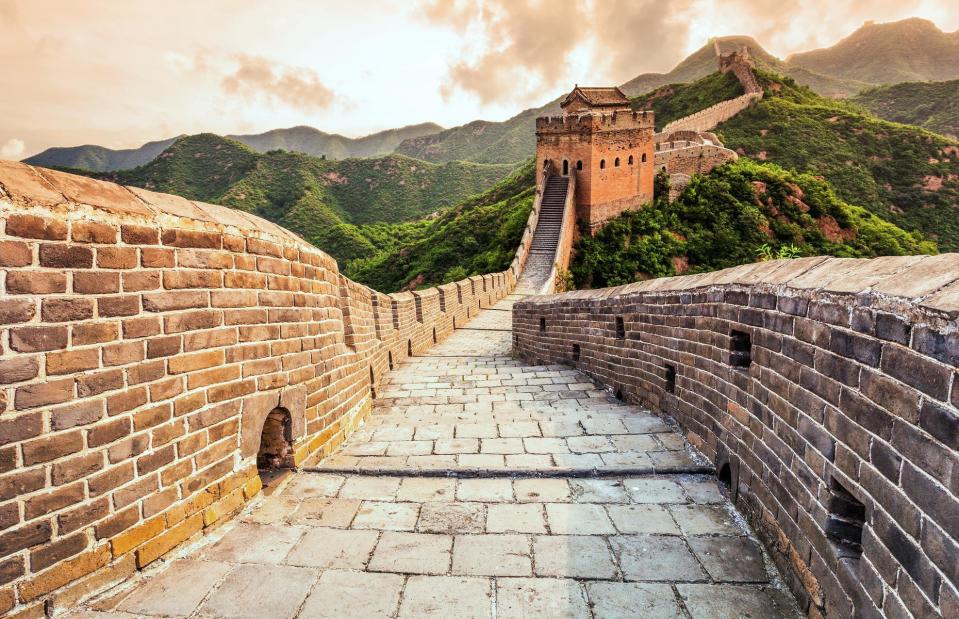
zhu difeng/Shutterstock
The only way to get a sense of the ancient fortification's epic scale and history is by walking along it. Some of the stretches are an easy trip from Beijing but are understandably busy. Mutianyu, a little further away, is less crowded, wider and more spectacular with its watchtowers rising on the hillsides, providing magnificent outlooks. While in Jinshanling you can see a part of the wall that retains original features, including many watchtowers and poetry inscriptions.
Petra, Jordan
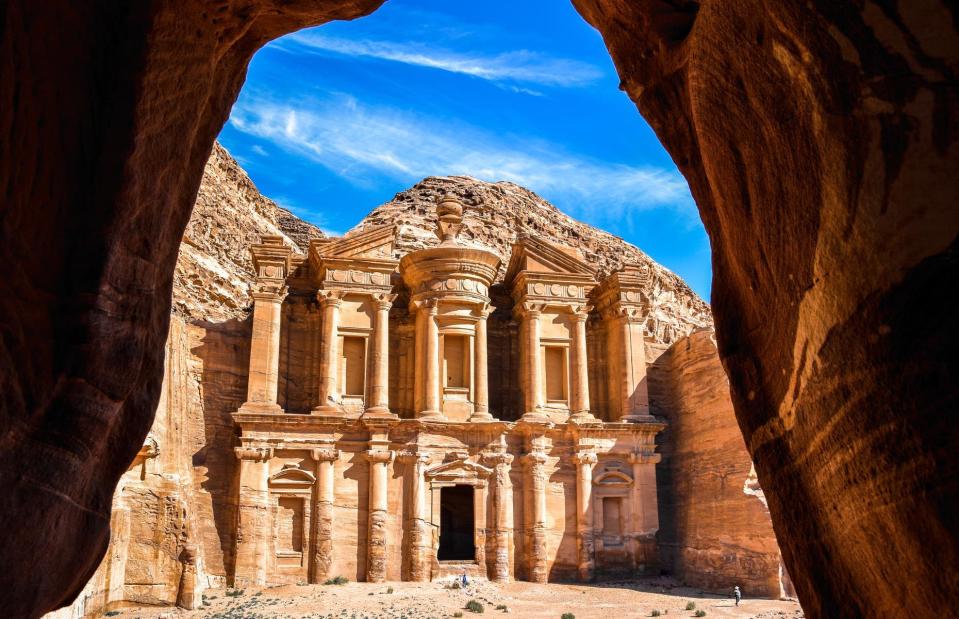
tenk/Shutterstock
The startling beauty of the ancient hand-hewn sandstone city of Petra cannot be overestimated. Established in 213 BC, it was once the capital city of the Arab Nabateans who were famed for their skill at carving buildings into rocks. Despite now being firmly on the tourist trail, this age-old wonder remains astonishing.
Petra, Jordan
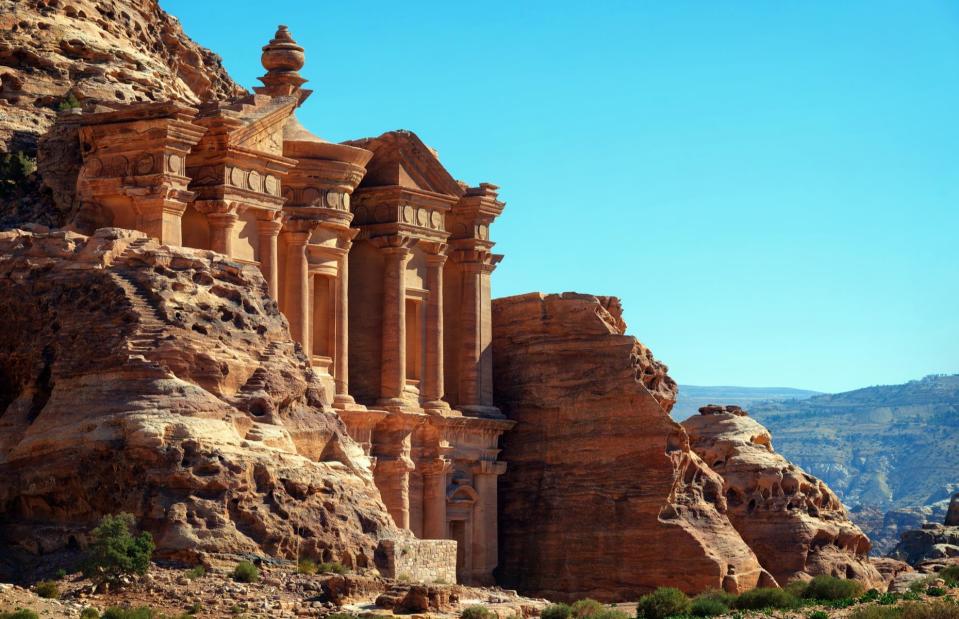
Lukas Bischoff Photograph/Shutterstock
You enter the kingdom through the Siq – a long and narrow gorge that twists and turns through the rock for nearly a mile (1.6km) before leaving you in front of Petra's most famous and exquisite building. Carved into the facing rock wall, Al-Khazneh (or the Treasury) is extraordinarily beautiful. Make the trek up the rocky path and steps to the hilltop Monastery – Al Deir – too. It's well worth it for the spectacular views of the age-old city and its desert surrounds.
Stonehenge, England, UK
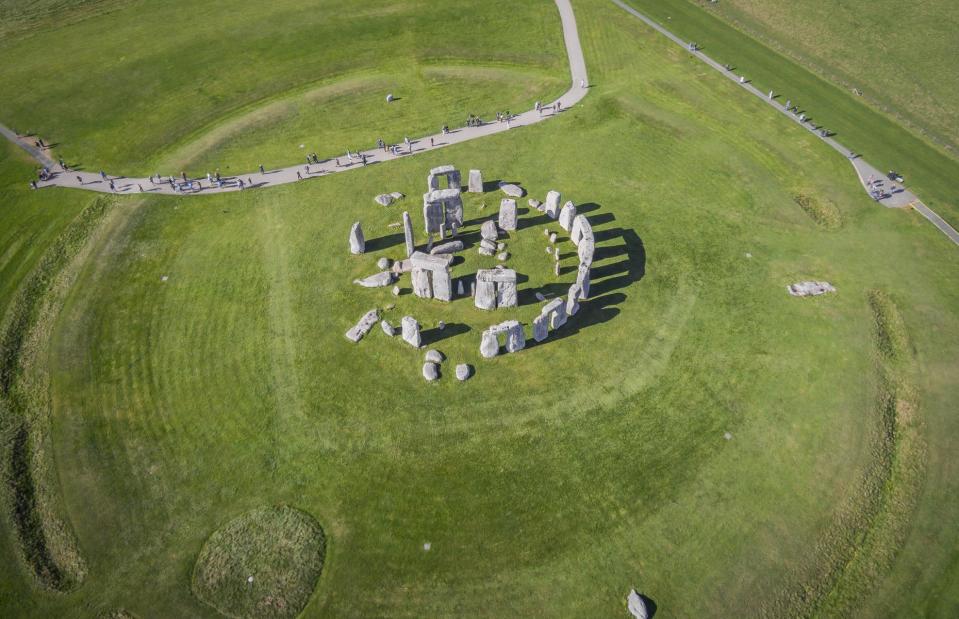
Shootmybusiness/Shutterstock
The prehistoric monument is Britain's most incredible wonder and arguably the most mystical rock formation in the world. Set just outside of Salisbury, Wiltshire, one of the UK's most historic towns, it was built in several stages. An early henge monument was built about 5,000 years ago, with the stone circle erected around 2500 BC. The as-yet-unsolved mystery of how the giant stones came to be transported to the Salisbury Plains only adds to its intrigue.
Stonehenge, England, UK
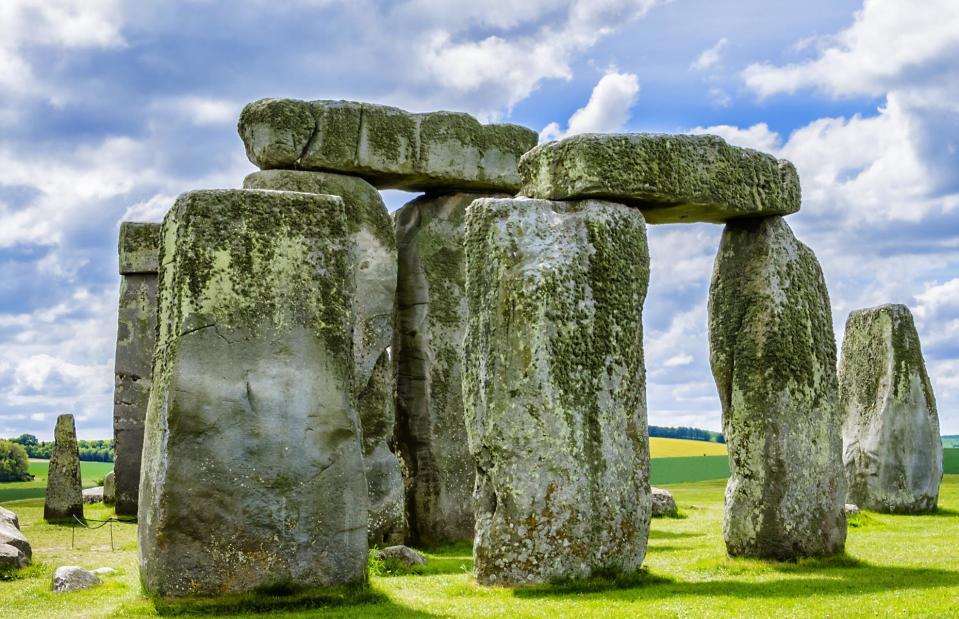
Kiev.Victor/Shutterstock
The site now forms a UNESCO World Heritage Site with nearby Avebury's prehistoric remains. The best way to get a feel for the historic landscape and the majesty of the enormous stones is to wander around them. The visitor centre is excellent and you can step inside replica Neolithic homes, complete with axes, pottery and other artefacts, to imagine what life would have been like for the builders of the epic site.
The Pyramids of Giza, Egypt

WitR/Shutterstock
Egypt is arguably the world's richest treasure trove of ancient monuments. The construction that awe and intrigue us the most are the mighty pyramids of Giza. These monumental tombs are the only one of the Seven Wonders of the Ancient World that have survived the test of time. Rising out of the desert on the edge of sprawling Cairo, the structure's sheer scale and feat of engineering is overwhelming.
The Pyramids of Giza, Egypt
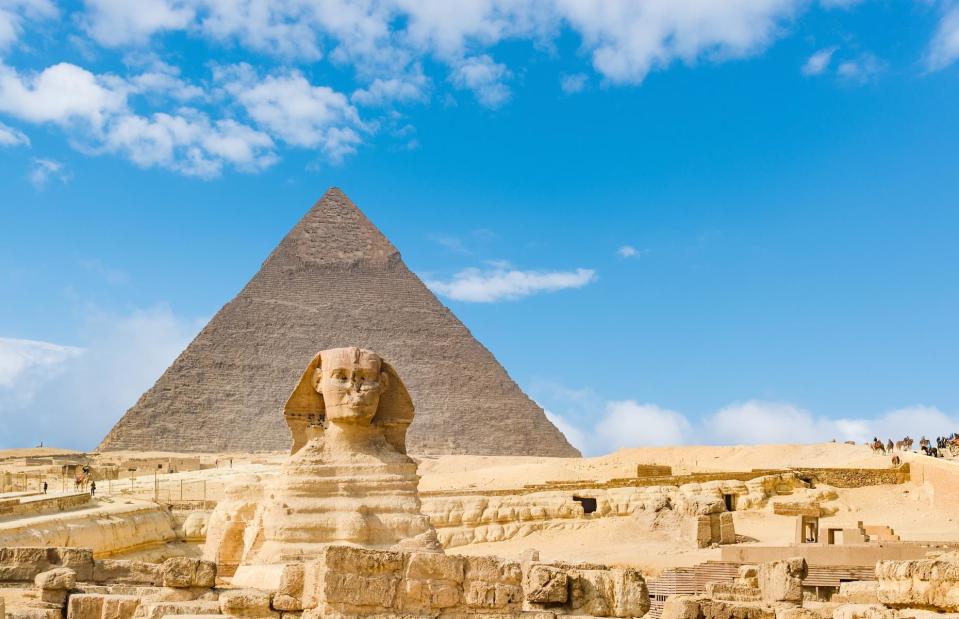
rayints/Shutterstock
Built between 2580-2560 BC under the orders of Pharaoh Khufu, the Great Pyramid towers 481 feet (147m). Amazingly, it remained the world's tallest man-made structure until St Paul's Cathedral was built more than 35 centuries later. You can clamber inside some of the internal passages of the pyramids to get even more of a sense of the scale of these ancient wonders. The mysterious Sphinx – with its pharaoh head and lion body – is a wonder in its own right. Be sure to visit Giza's new Grand Egyptian Museum which is set to open in November 2022.
Great Barrier Reef, Queensland, Australia
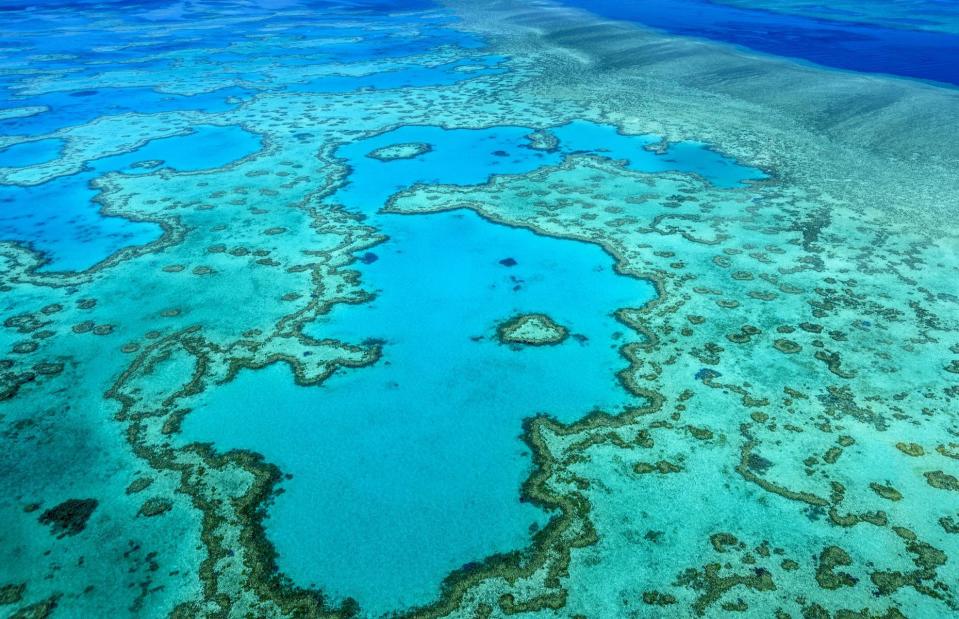
ProDesign studio/Shutterstock
Located off the coast of Queensland in northeast Australia, the Great Barrier Reef is the largest living structure on the planet. It is composed of over 2,900 individual reef and covers an incredible 133,000 square miles (344,400sq km), making it bigger than the UK, Netherlands and Switzerland put together. It's so enormous, in fact, that it can be seen from outer space.
Great Barrier Reef, Queensland, Australia

Pete Niesen/Shutterstock
Despite environmental concerns, the ancient reef is absolutely teeming with marine creatures – around 10% of the world's total fish species can be found just within the Great Barrier Reef. It's also home to 30 species of whales, dolphins, porpoises and dugongs. The adventures you can have in this stunning underwater world are unlimited: sail around it, dive into it, snorkel above it or fly over it. You can also stay in the lap of luxury on some of its islands – it has 900 in total.
Machu Picchu, Peru
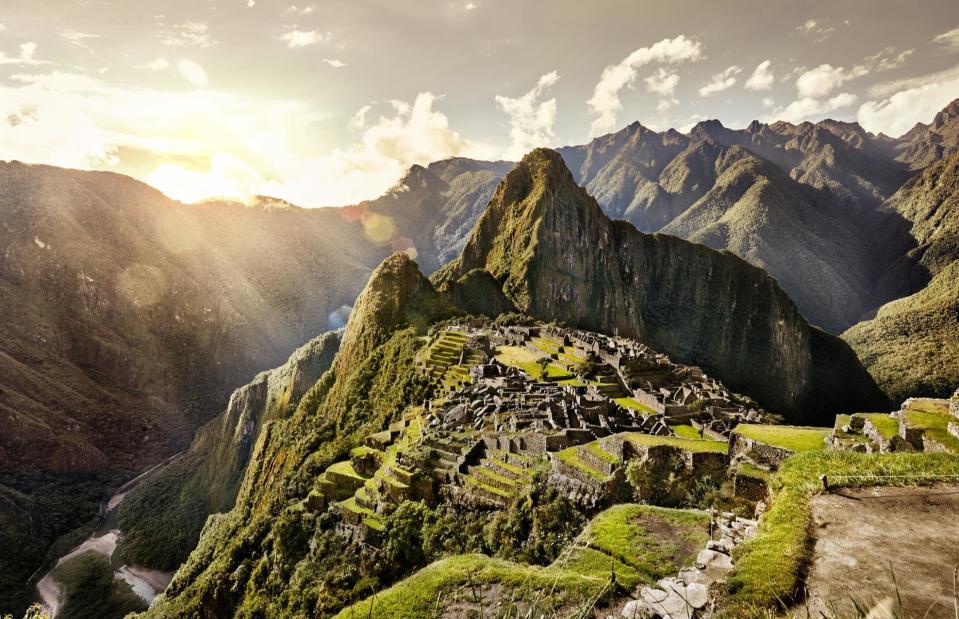
Aleksandra H. Kossowska/Shutterstock
Most people who ascend to the ancient Inca city on a remote mountain ridge in the Sacred Valley are in awe of the spectacular sight. The most significant archaeological site in South America, it's thought the emperor Pachacutec built the soaring citadel in the clouds in the 15th century, although its mysteries abound. Despite the crowds of tourists, Machu Picchu is one of the world's most mesmerising sights.
Machu Picchu, Peru
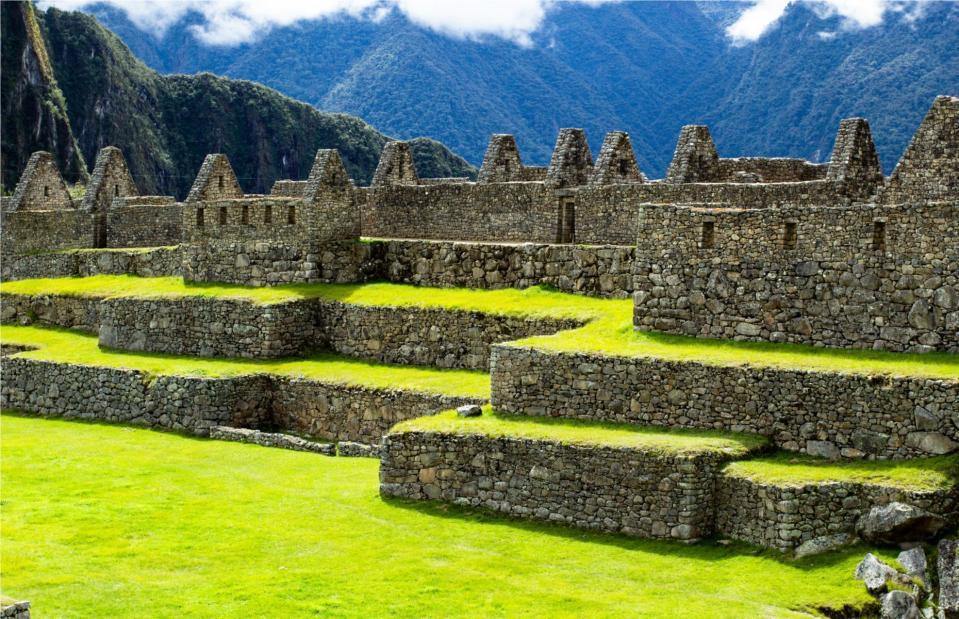
Curioso/Shutterstock
When it comes to visiting Machu Picchu, the journey is half the experience. You can either hike up or take the train. The famous Inca Trail takes four days and leads trekkers through yet more stunning landscapes and other pre-Columbian ruins (although altitude sickness is a real concern). The easiest way to get from Cusco to Machu Picchu is to take the train to Aguas Calientes. It promises a spectacular 3.5-hour ride up the ravishing rainforest-clad mountains.
The Acropolis, Athens, Greece
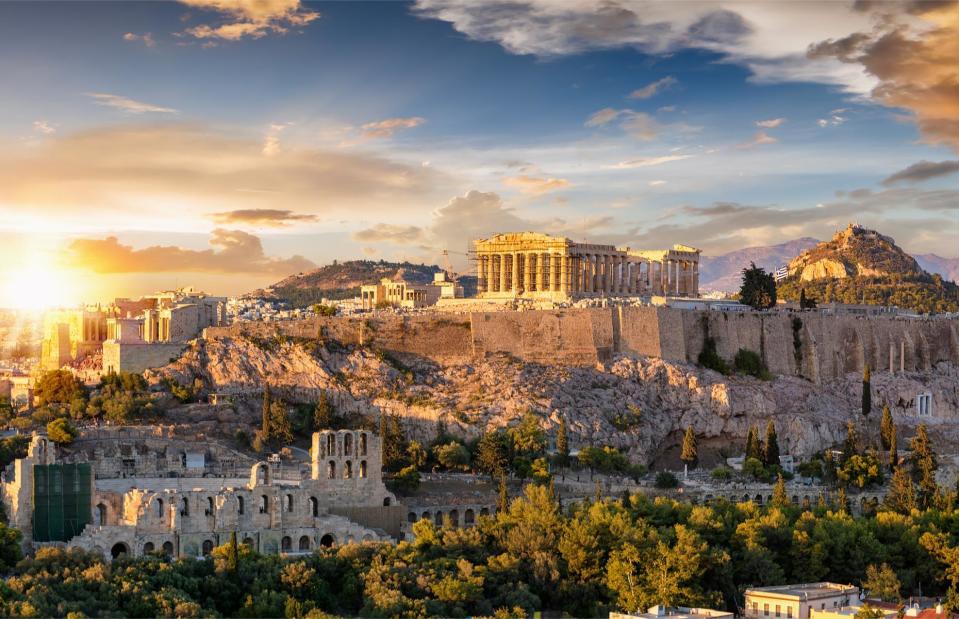
Sven Hansche/Shutterstock
It's almost impossible to take your eyes off the rocky outcrop that looms above the sprawl of Athens and has dominated the city for millennia. The arresting ancient mound has several incredible classical ruins, but the Parthenon on its highest reaches is its most iconic structure. The classical temple, a symbol of the origins of democracy, was built in the 5th century BC and dedicated to the goddess Athena.
The Acropolis, Athens, Greece

anyaivanova/Shutterstock
You can spend at least a day exploring the sacred rock and its magnificent marble temples. As well as the Parthenon, the summit is home to the Erechtheion, the Temple of Athena Nike and the Propylaia, among other ruins. Head into The New Acropolis Museum to discover more about the spectacular citadel. It's stuffed with fascinating treasures from the various civilisations that have occupied the hill.
Taj Mahal, Agra, India
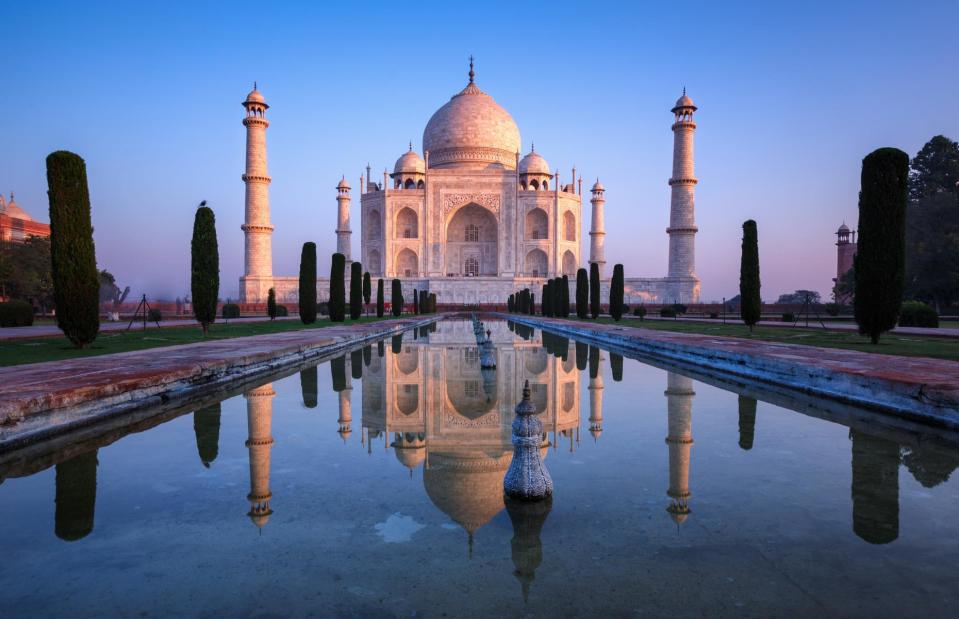
Seb c'est bien/Shutterstock
One of the world's most beautiful buildings and India's most famous monument, the white marble mausoleum has become symbolic of enduring love. It was built in the 1630s by the Mughal emperor Shah Jahan for his beloved wife Mumtaz Mahal. An exquisite example of Islamic architecture, it took about 22 years to complete with a workforce of around 20,000 people.
Taj Mahal, Agra, India

Sean Hsu/Shutterstock
Prepare to have your breath taken away as you step through an archway and see the Taj Mahal for the first time. It's enormous and the fine detail of its decoration astounding. To gaze on the gleaming monument before the masses arrive, make sure you're on site by daybreak. The sunset is also a splendid time to see it in all its poignant glory, but can be extremely busy.


